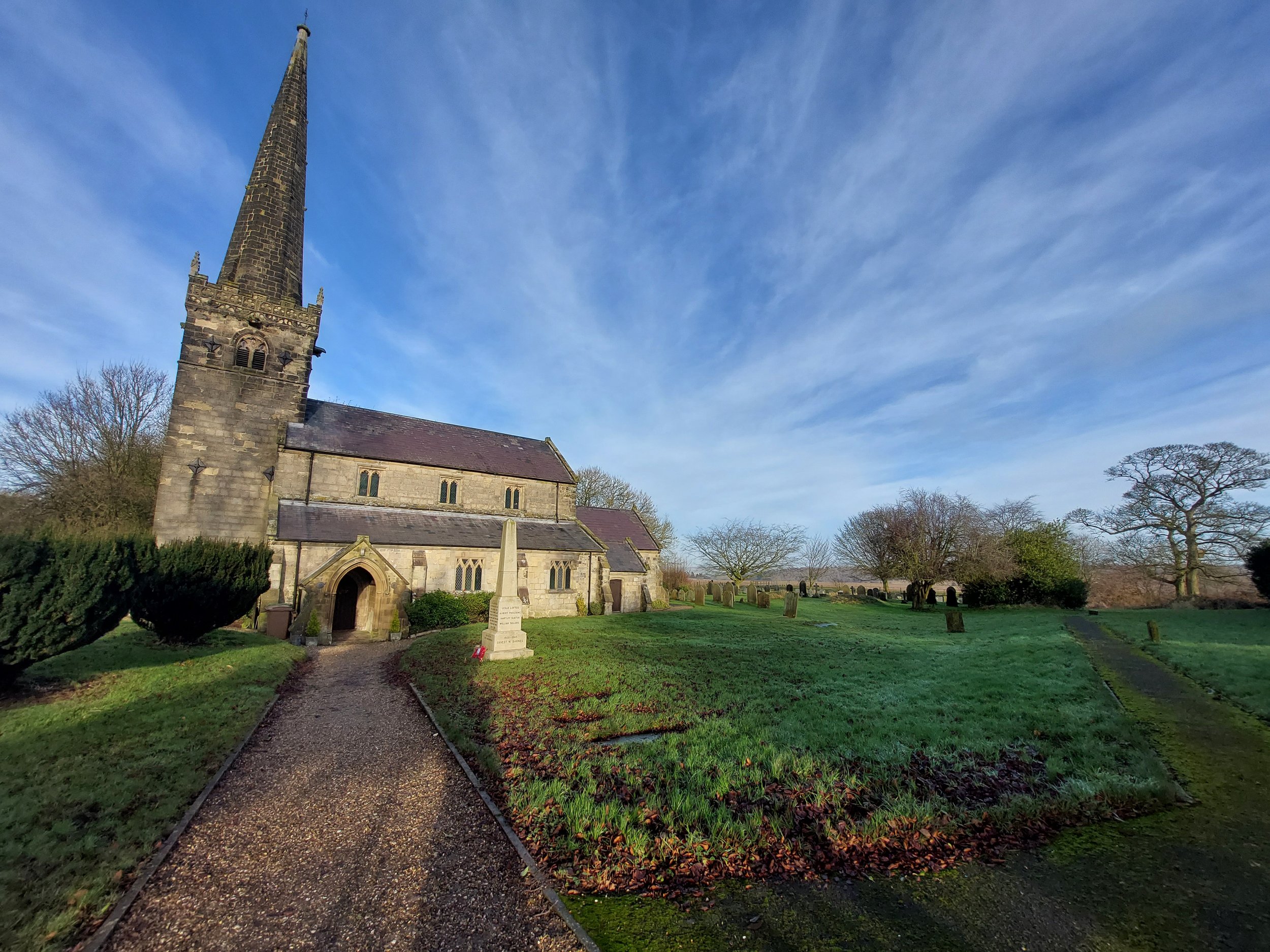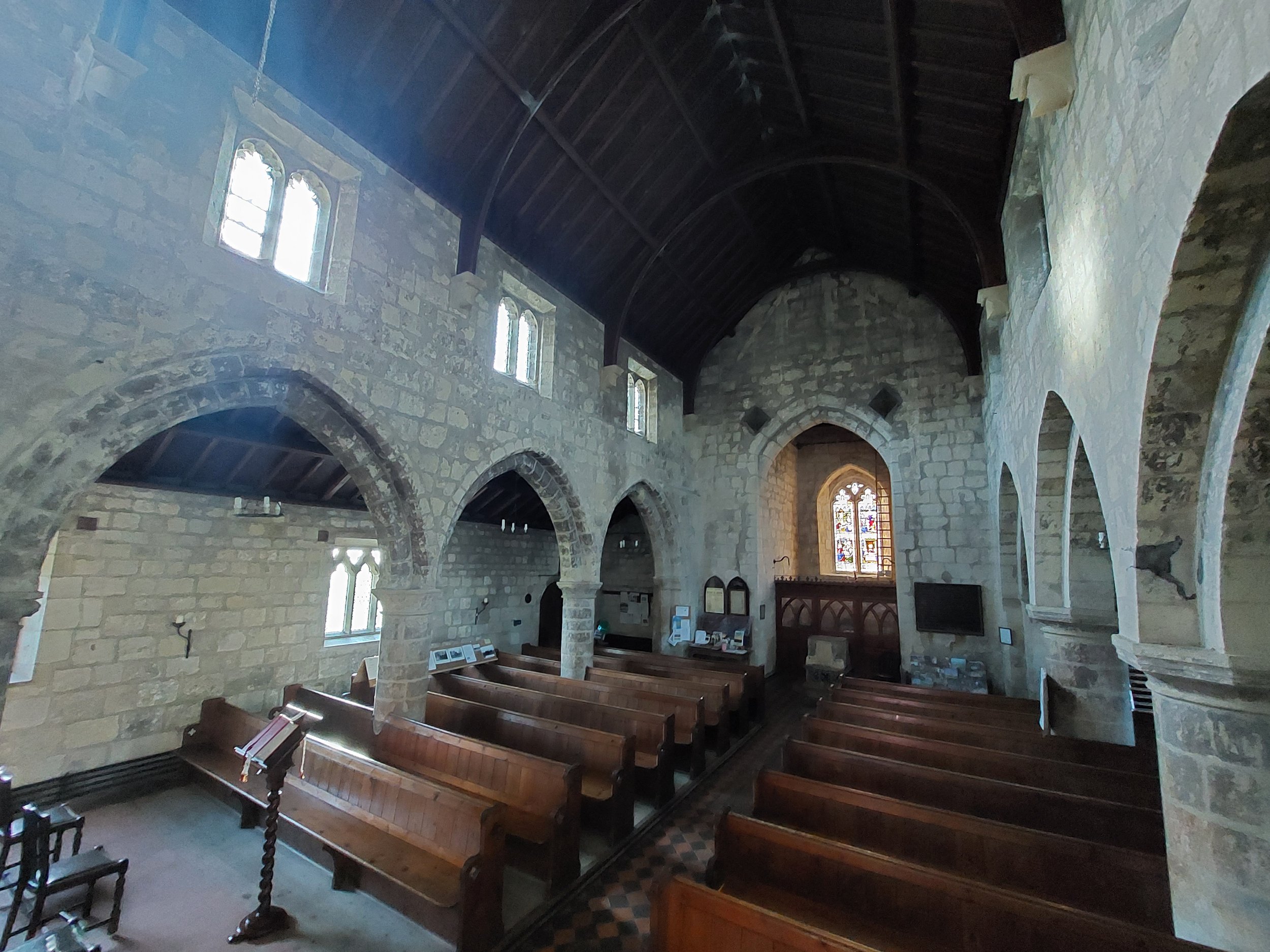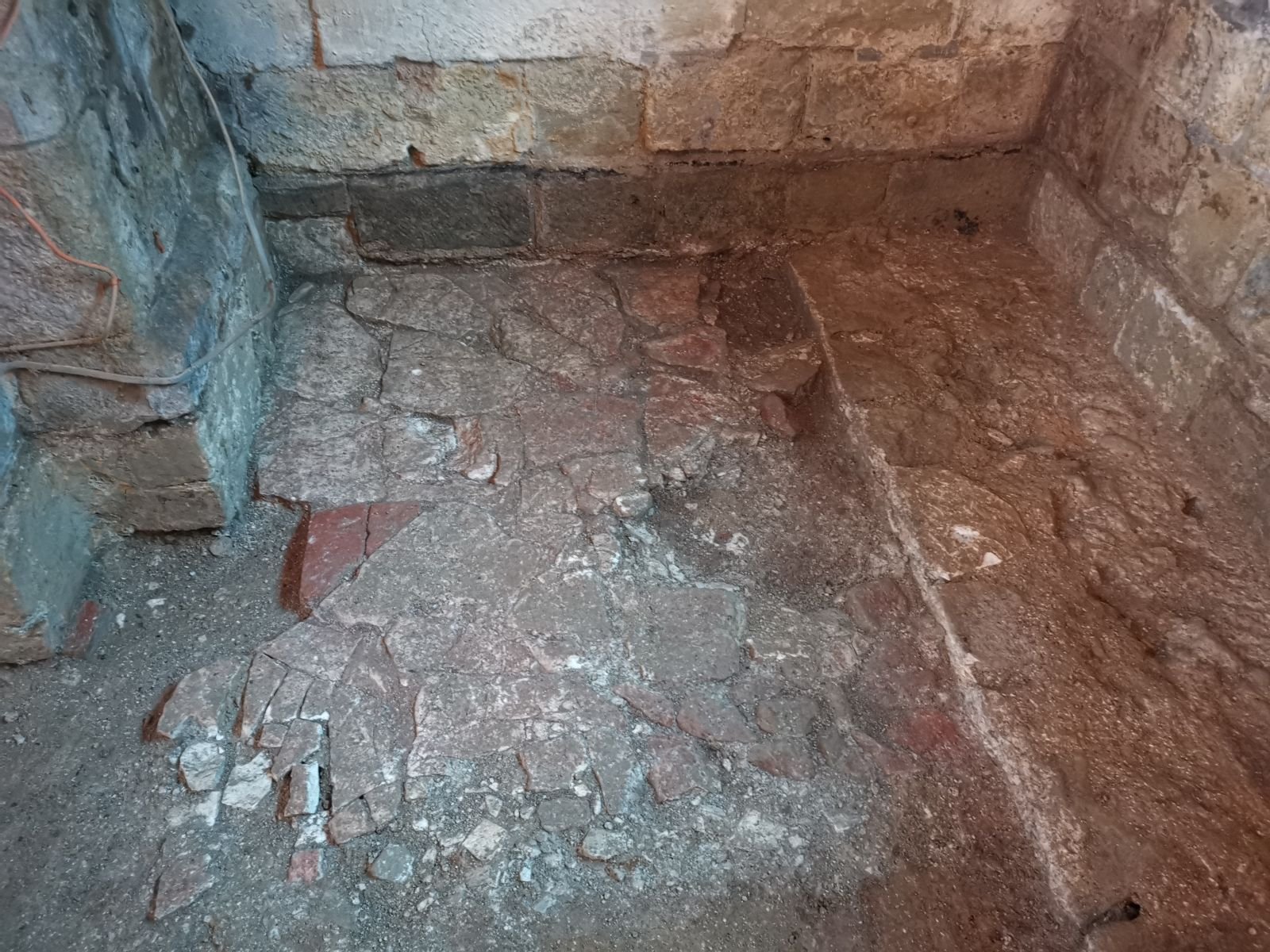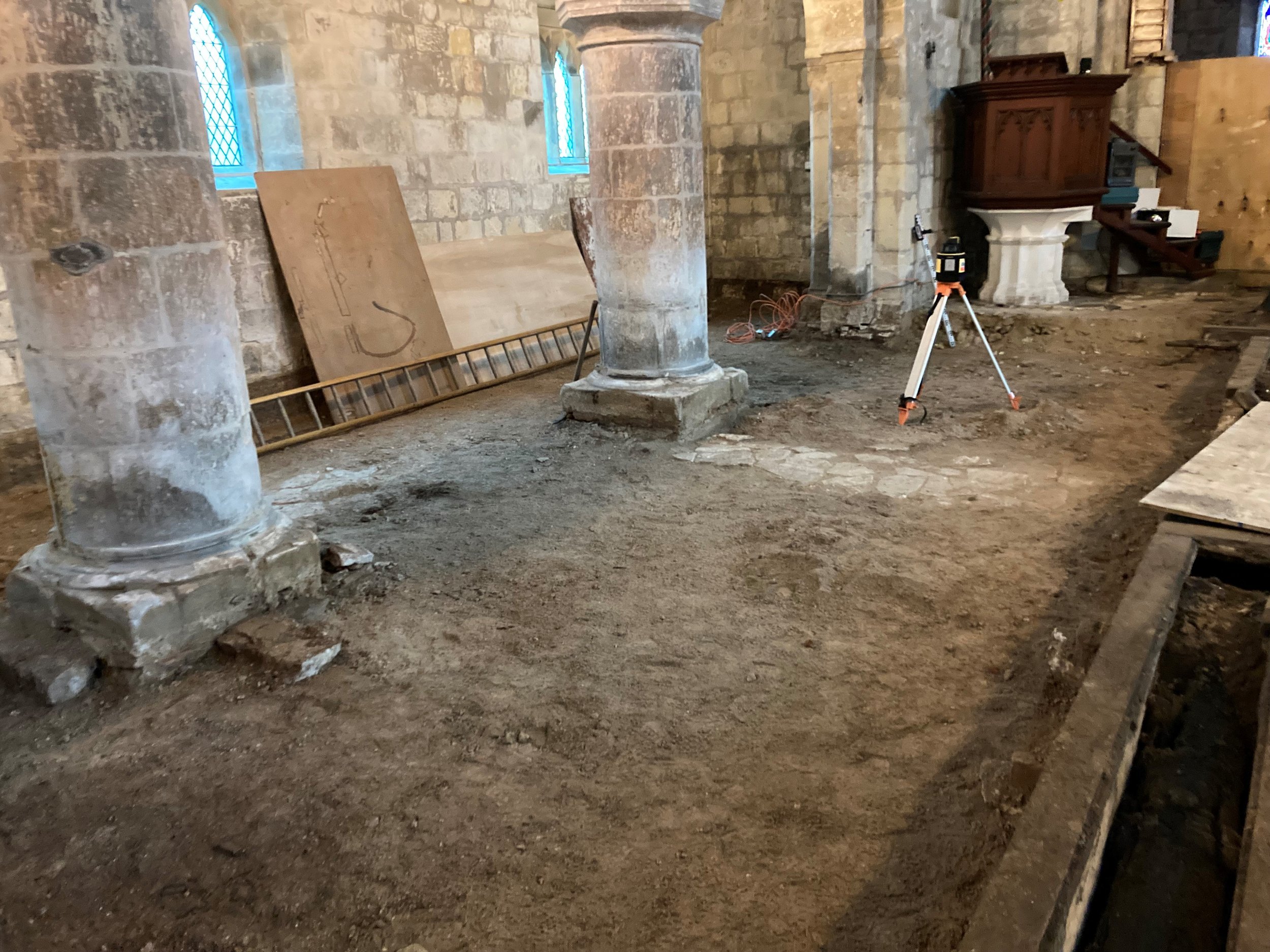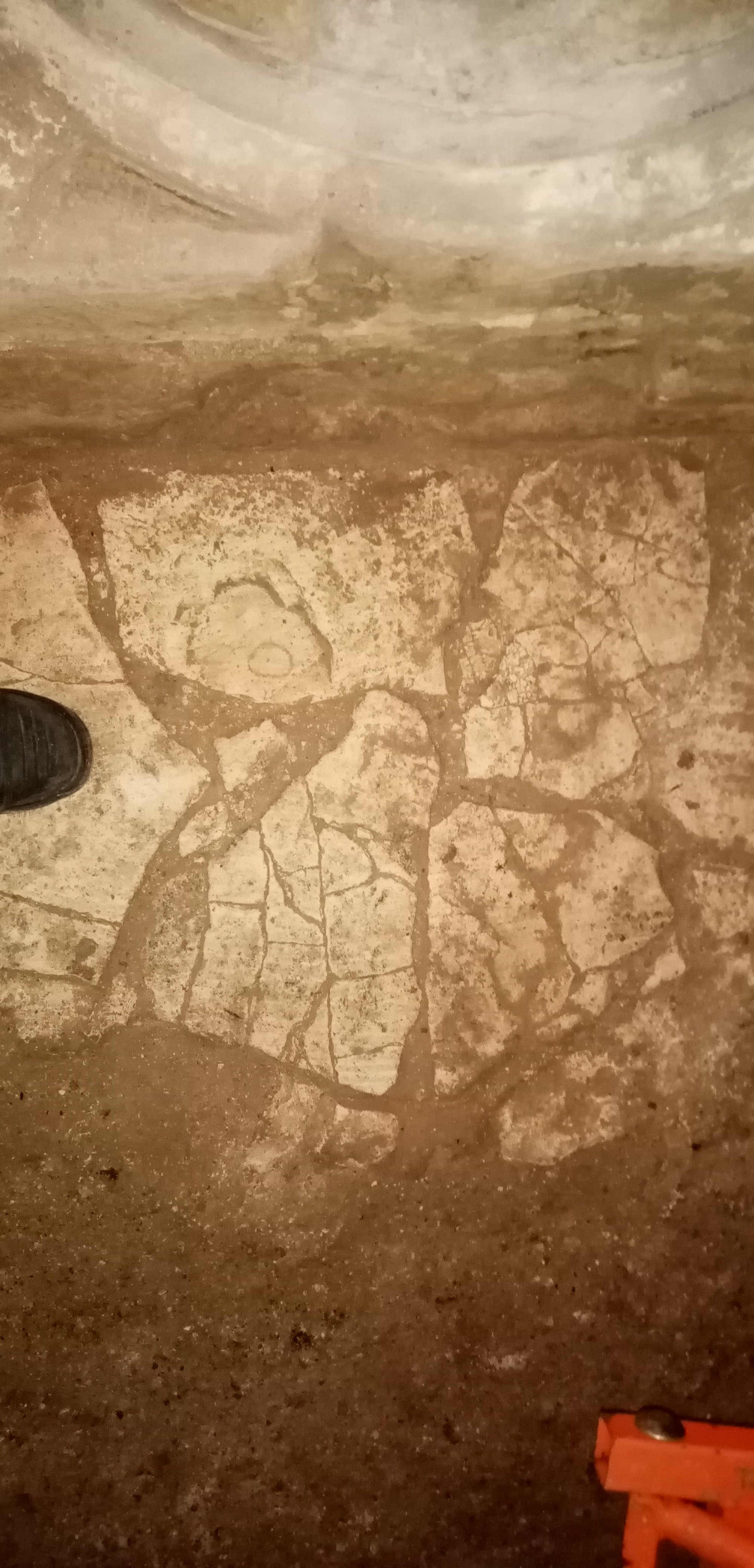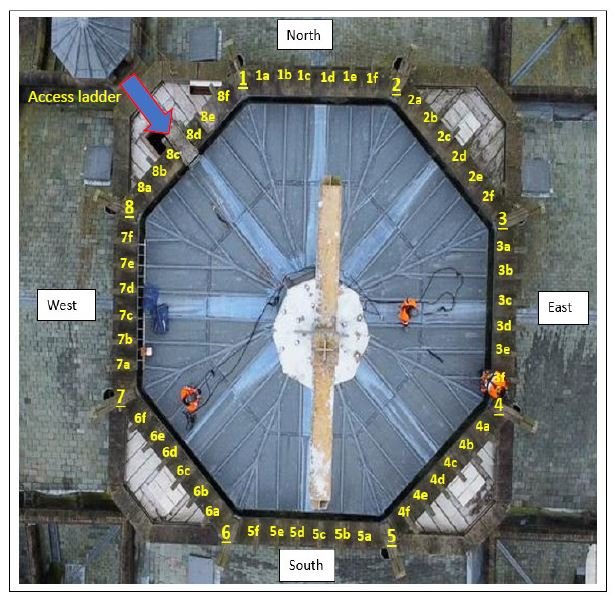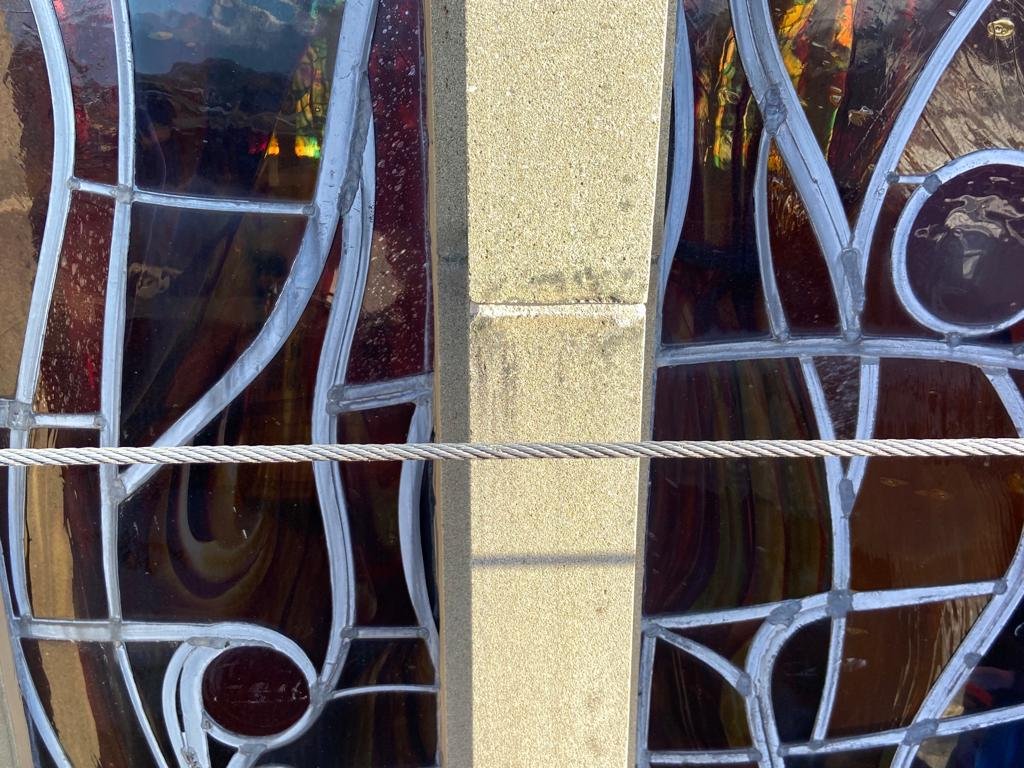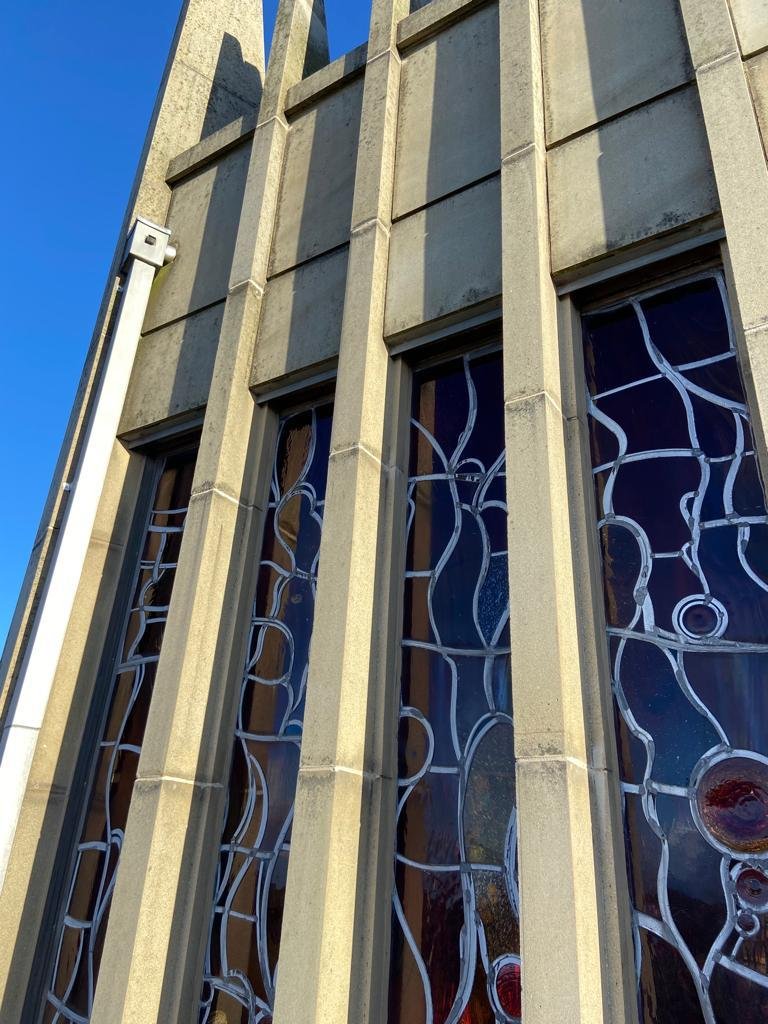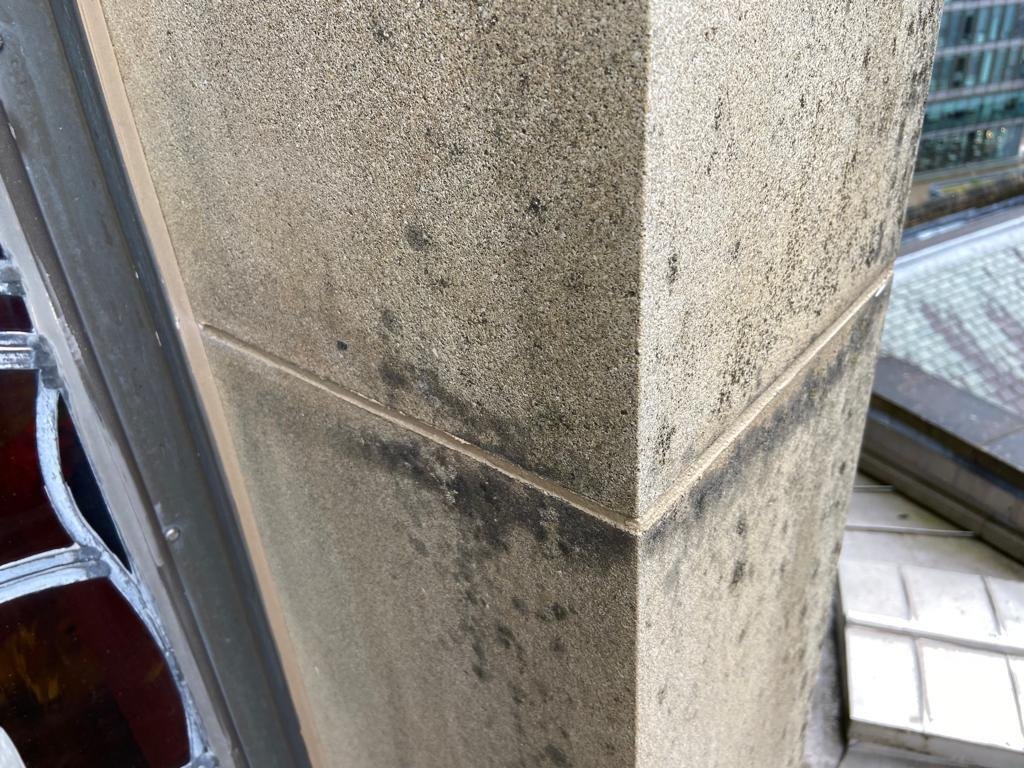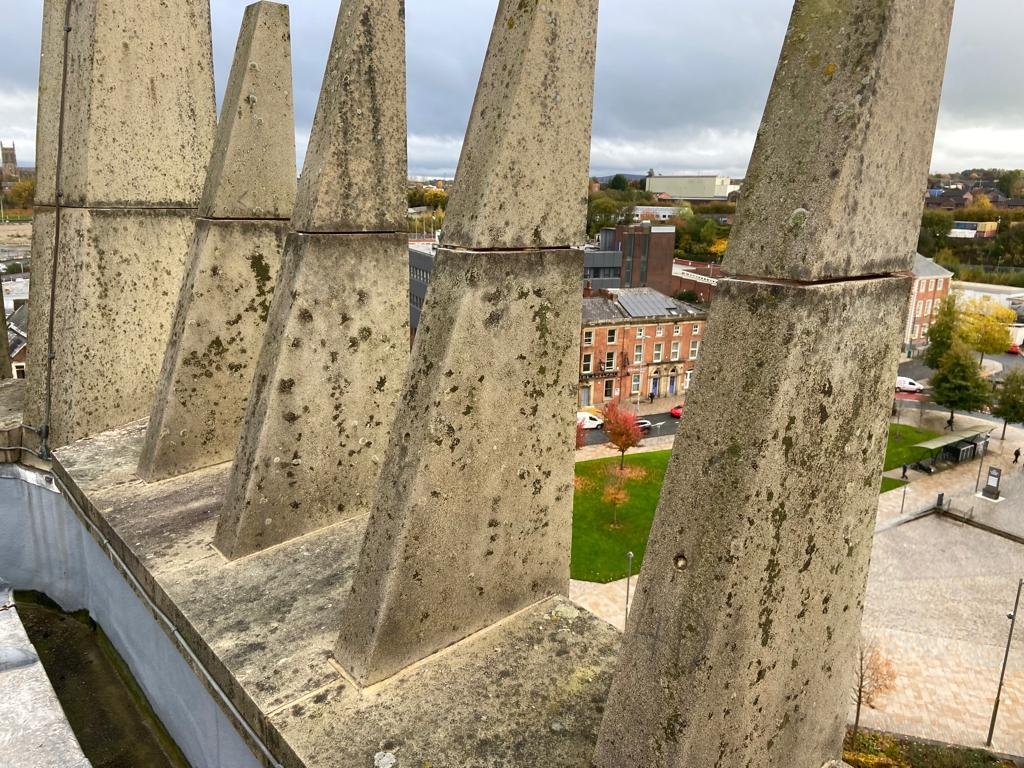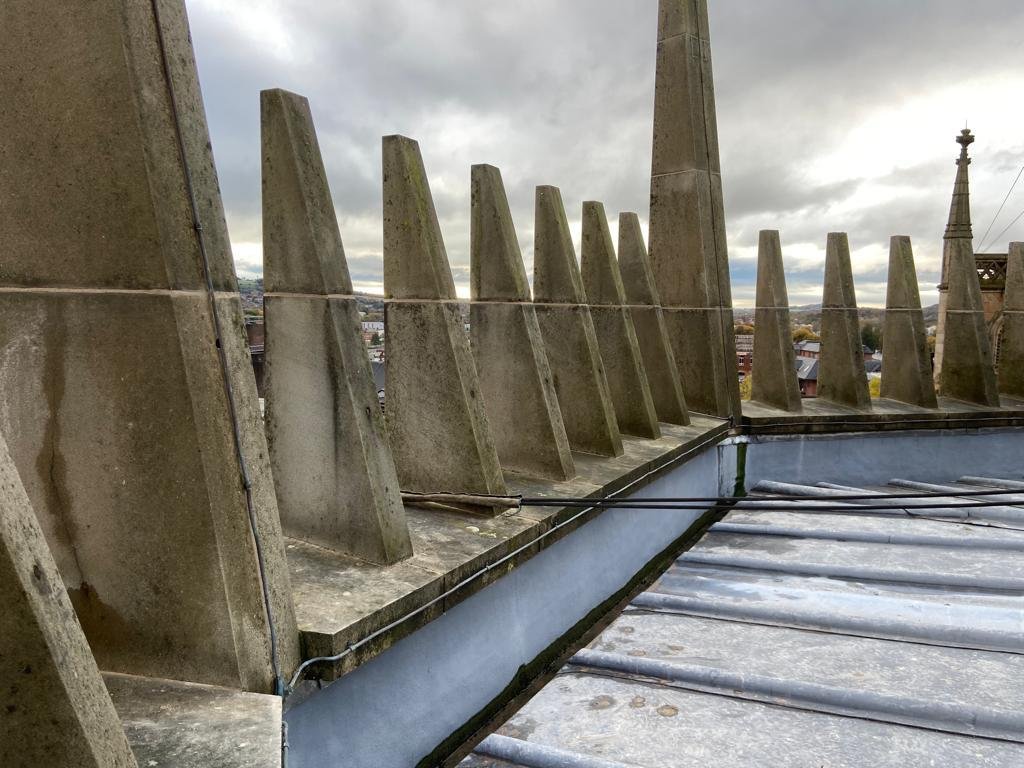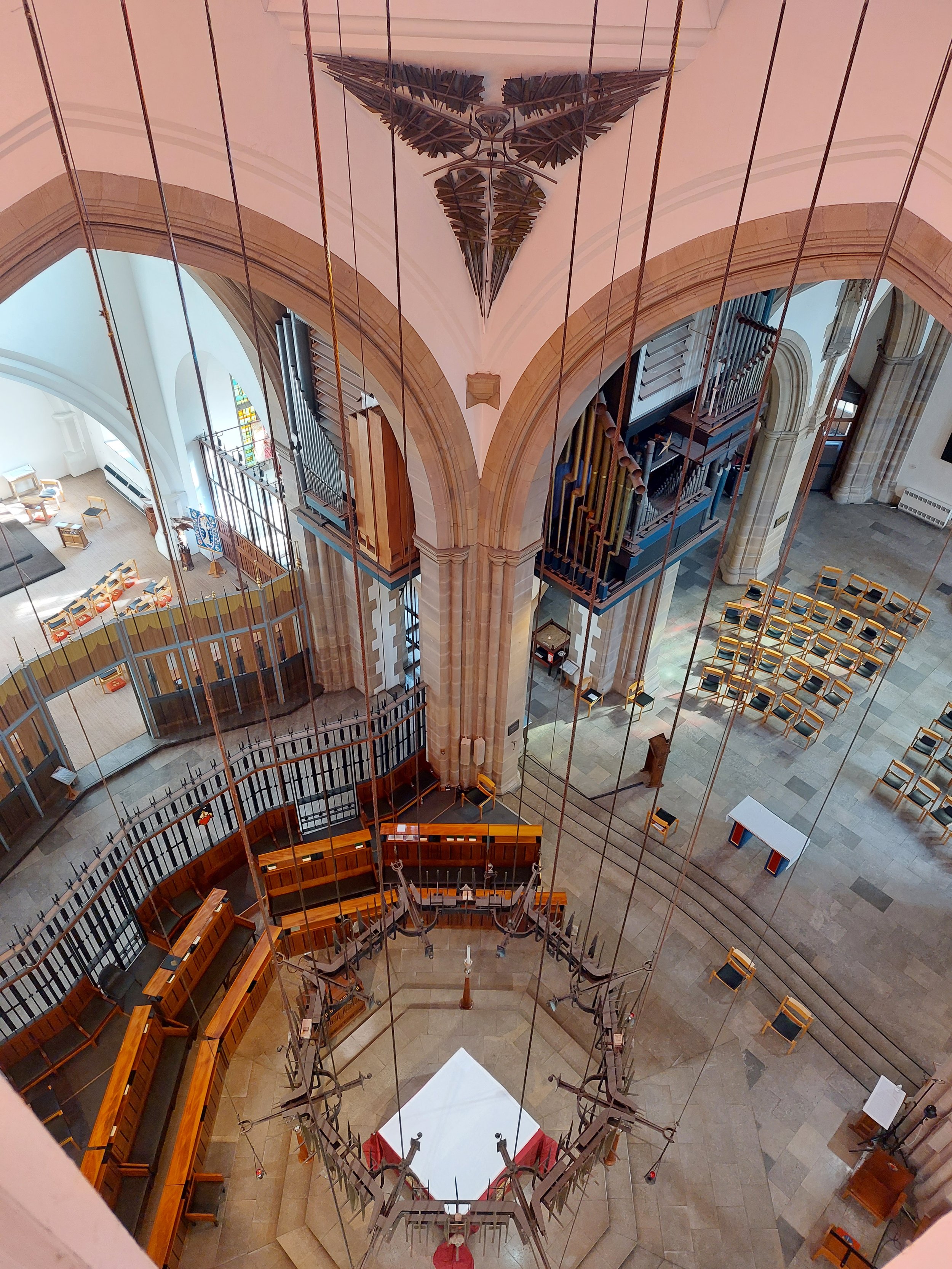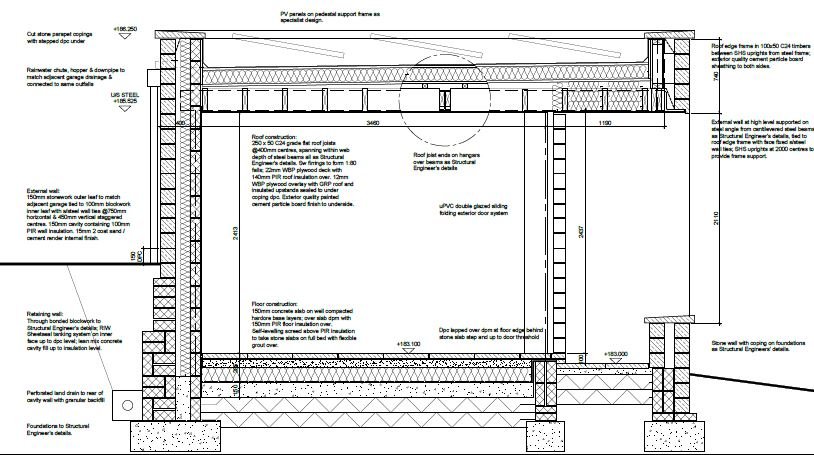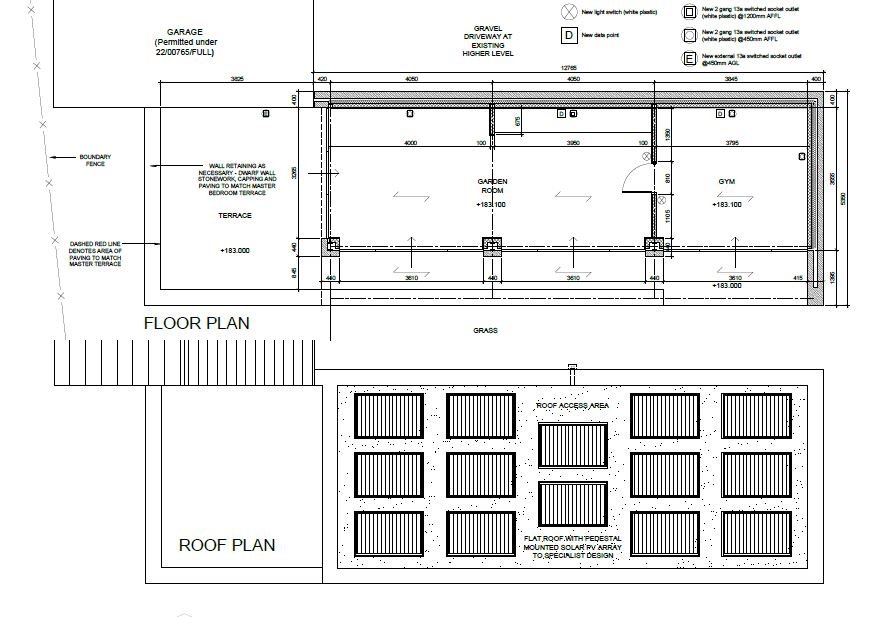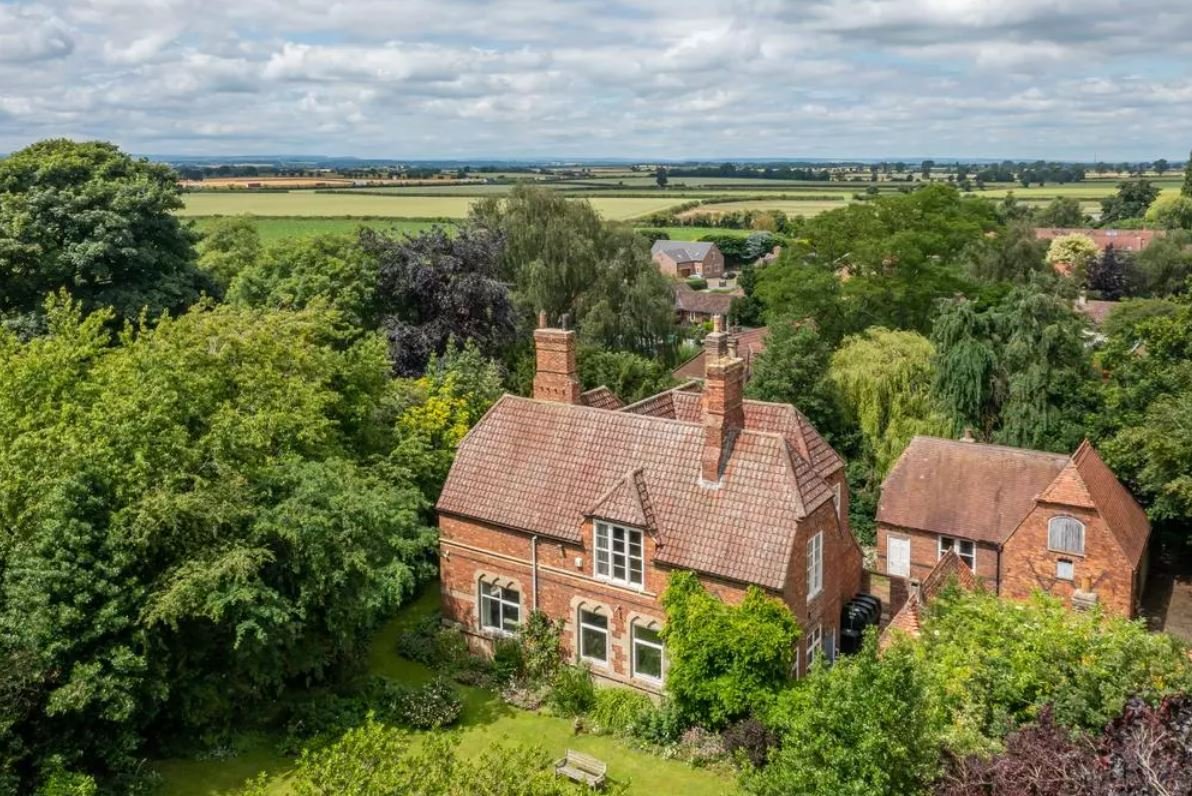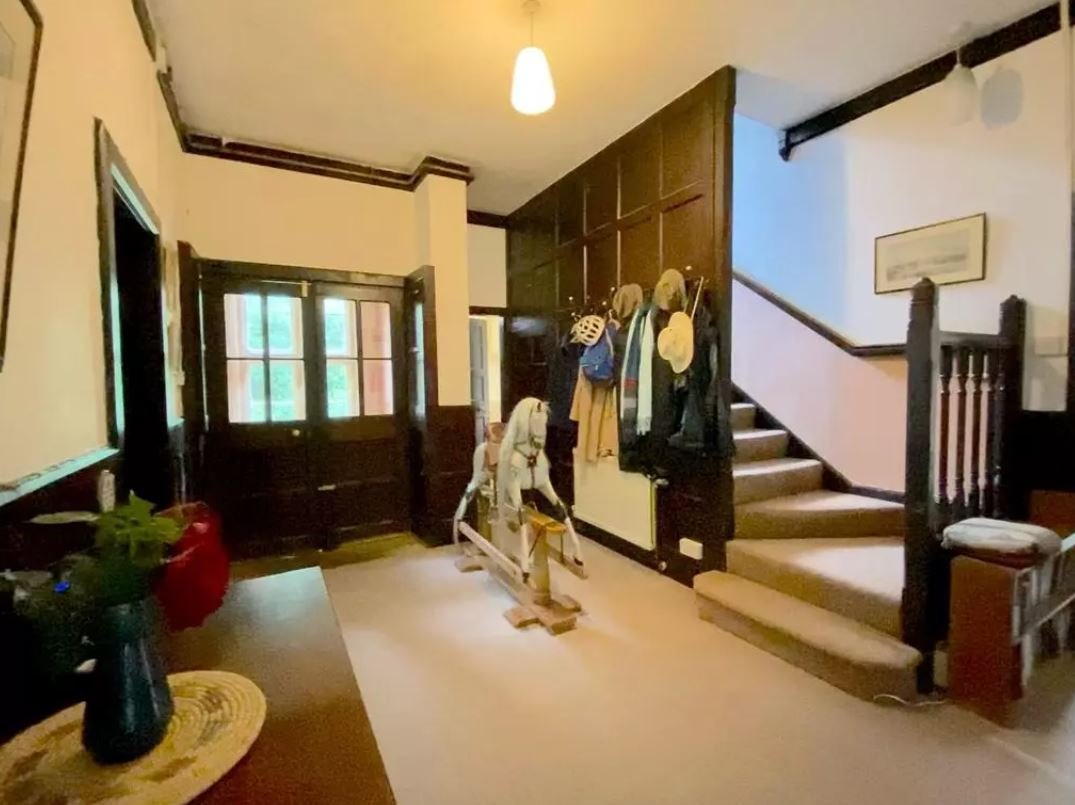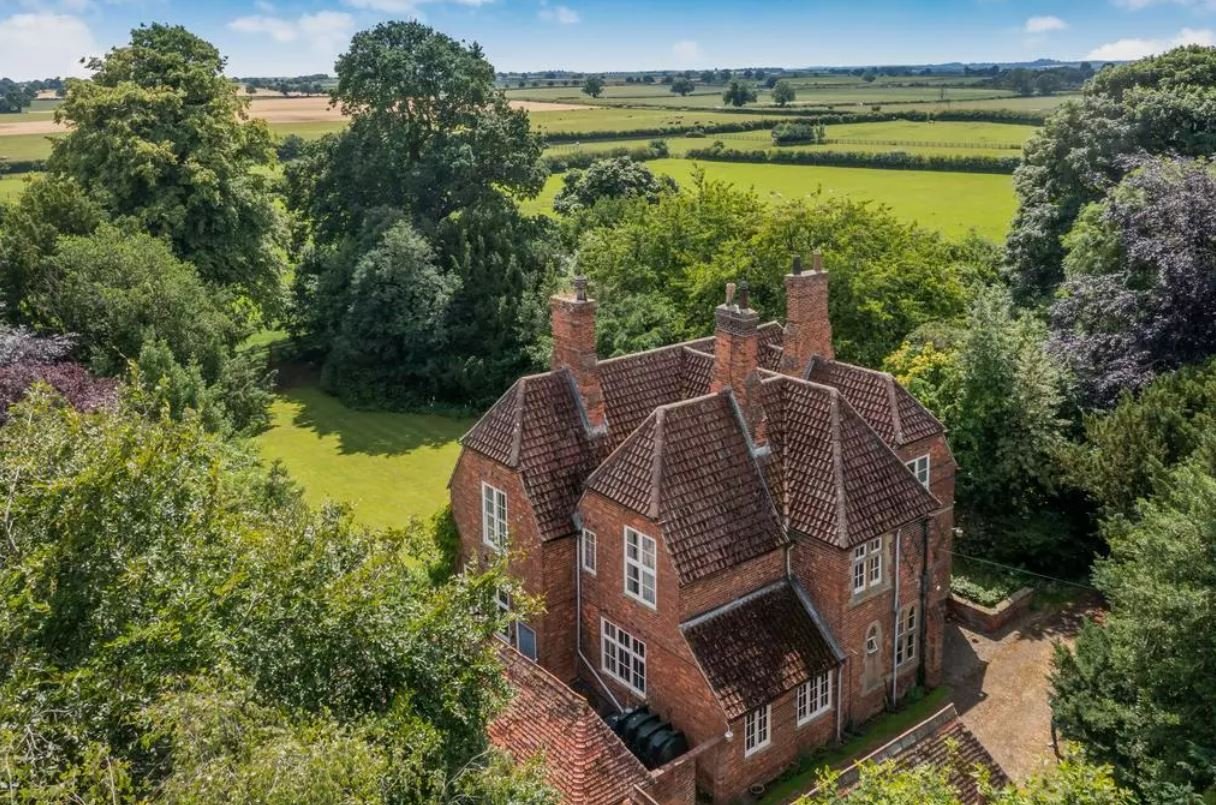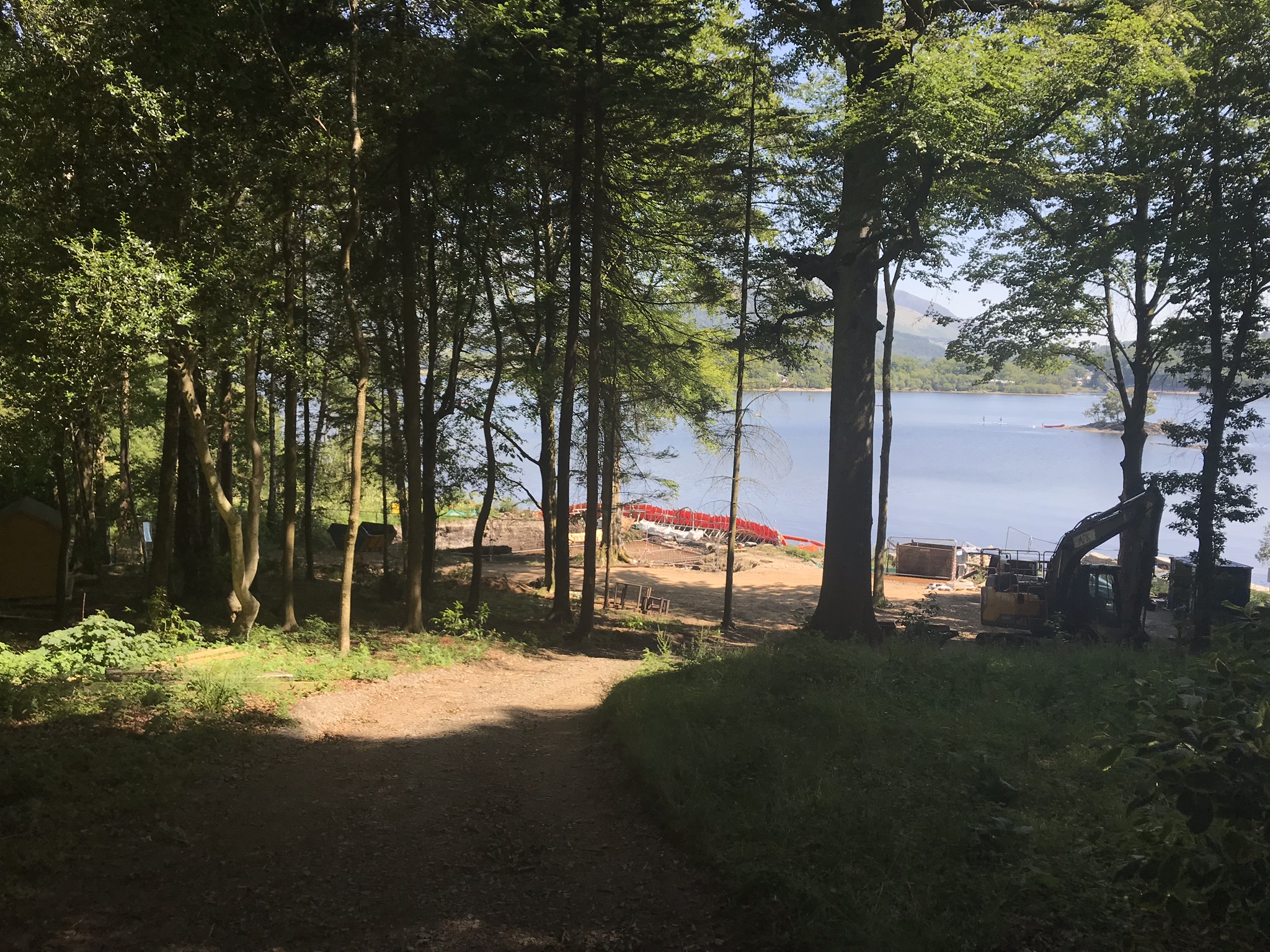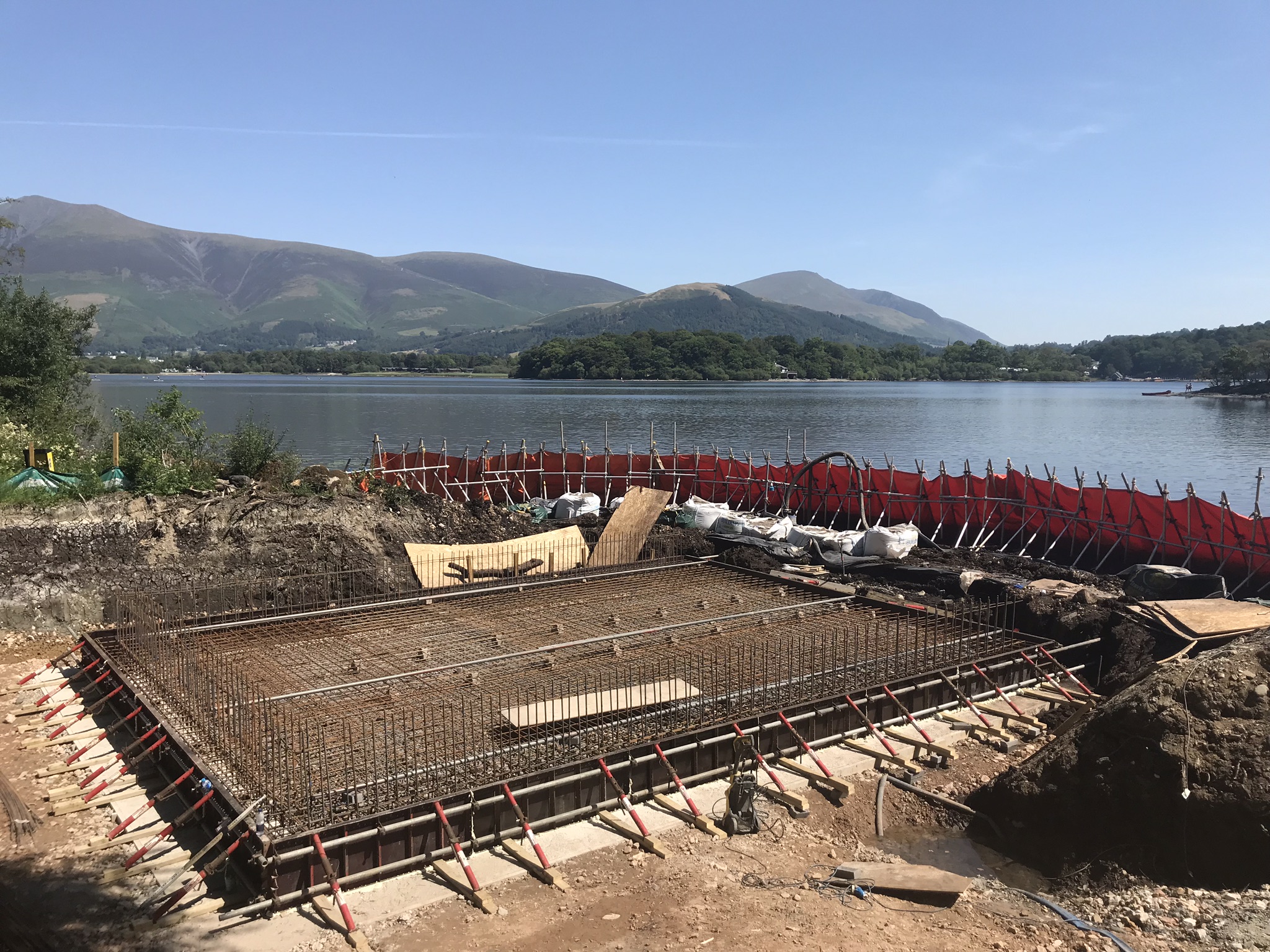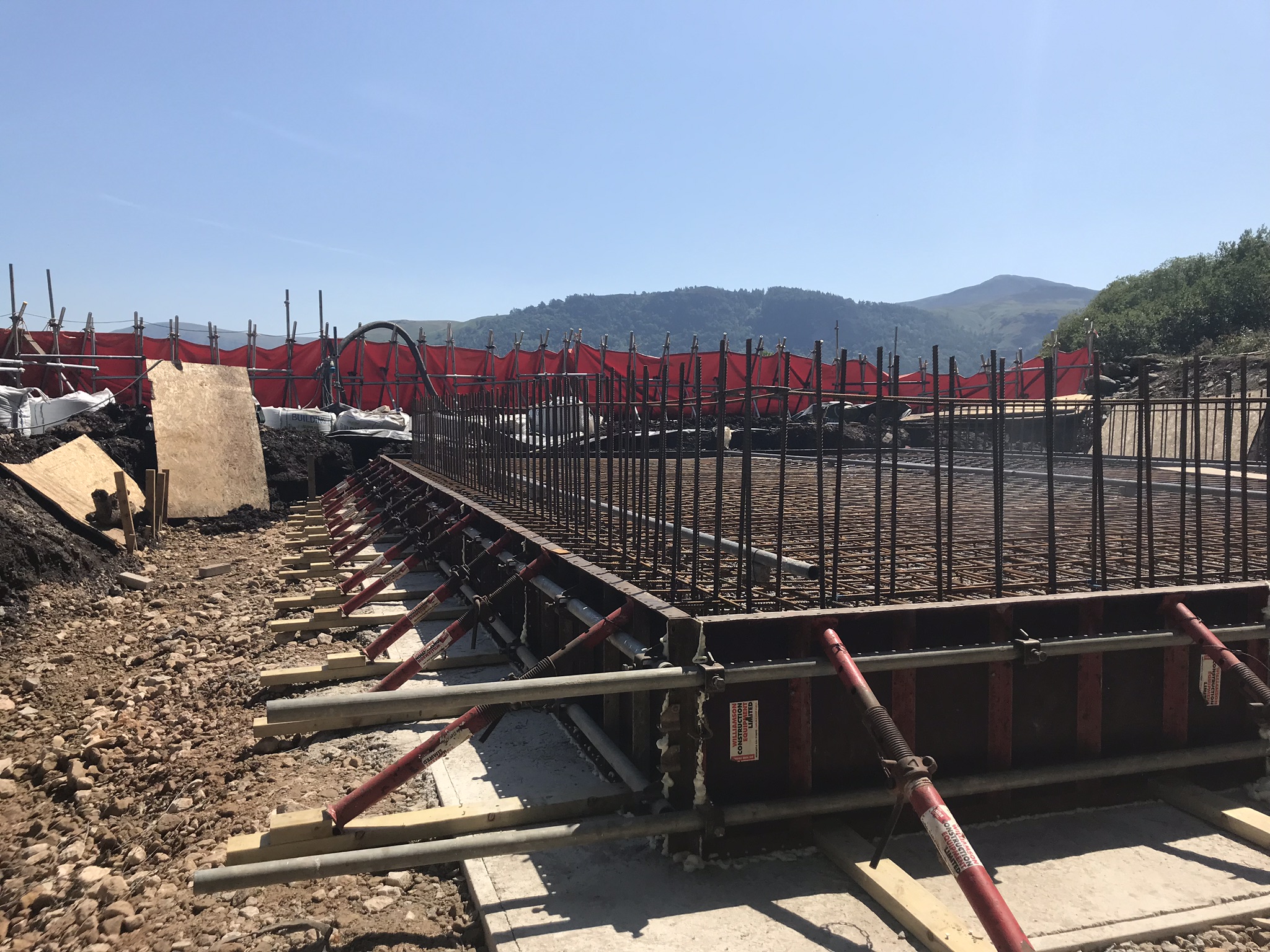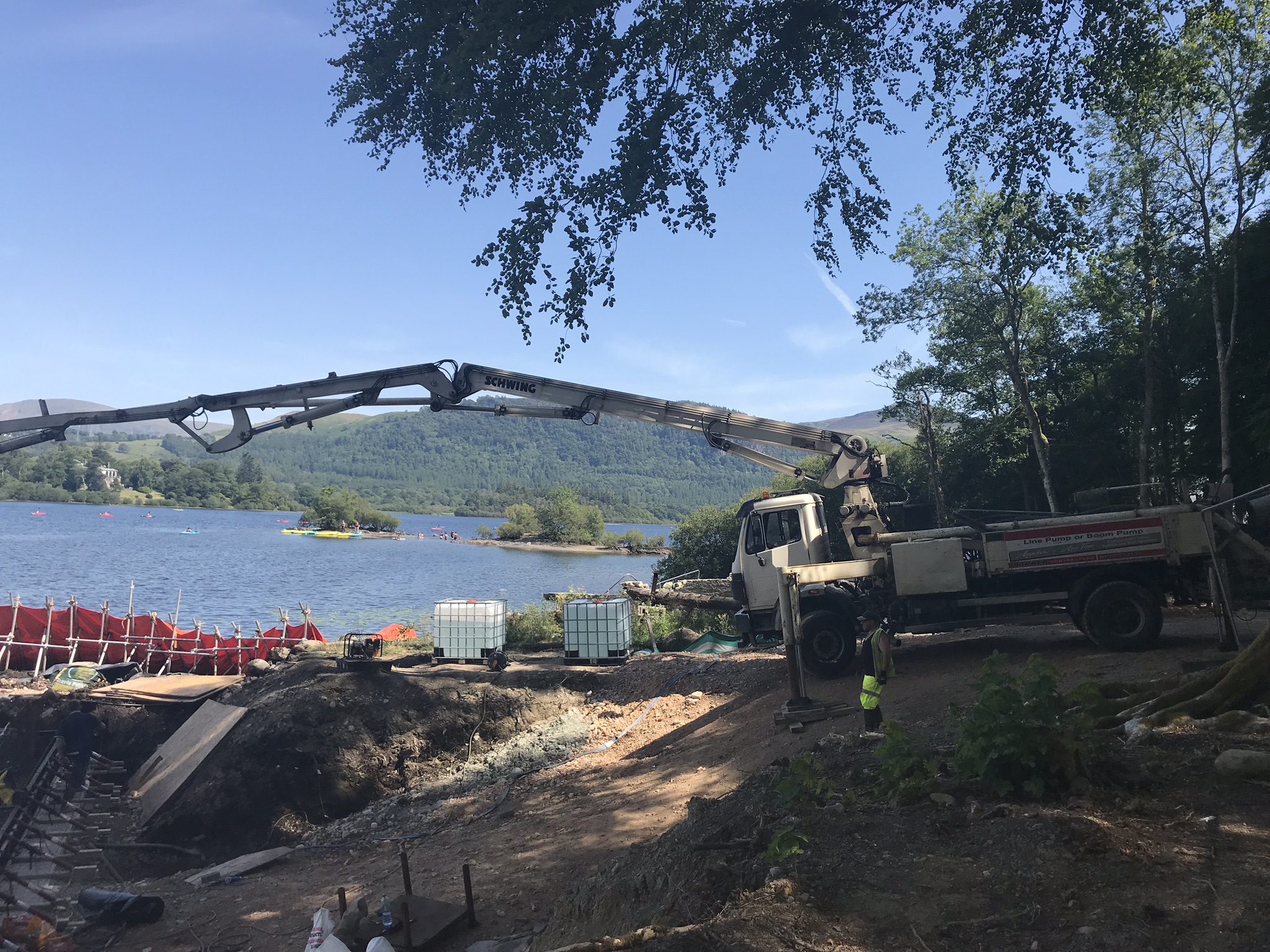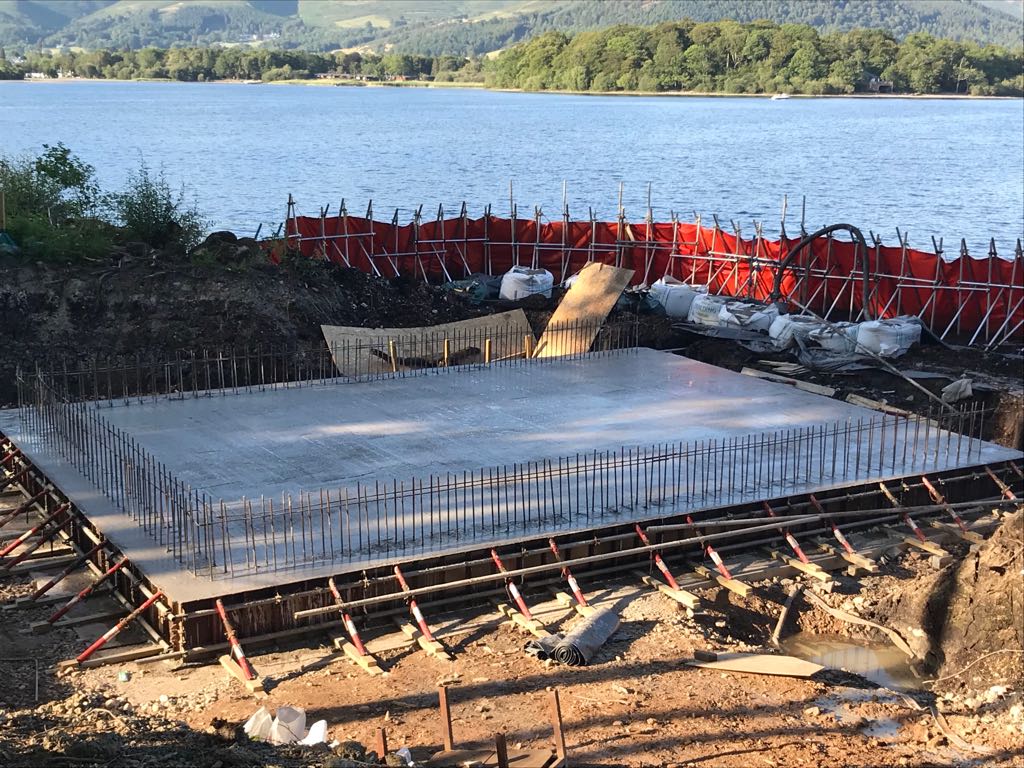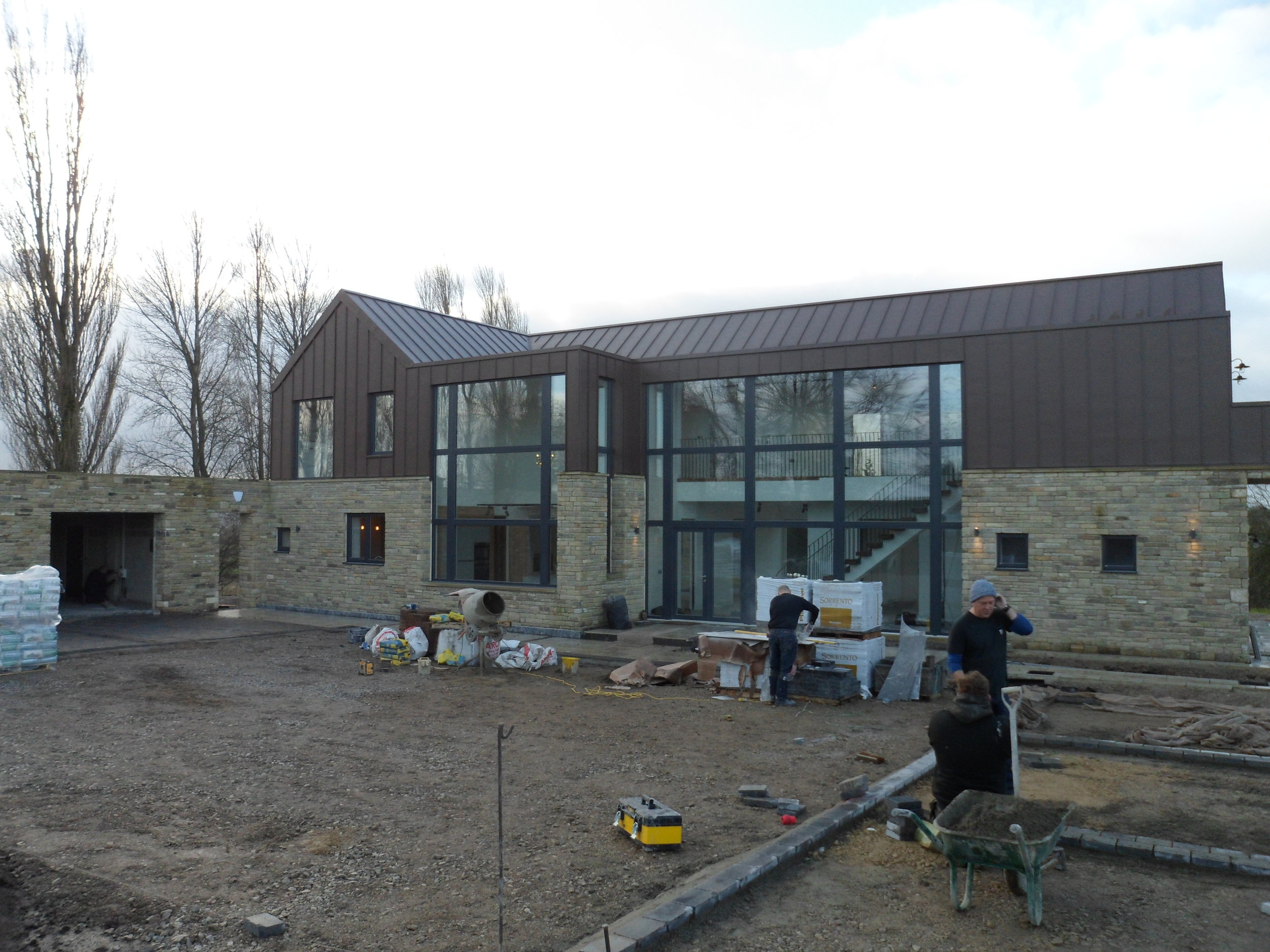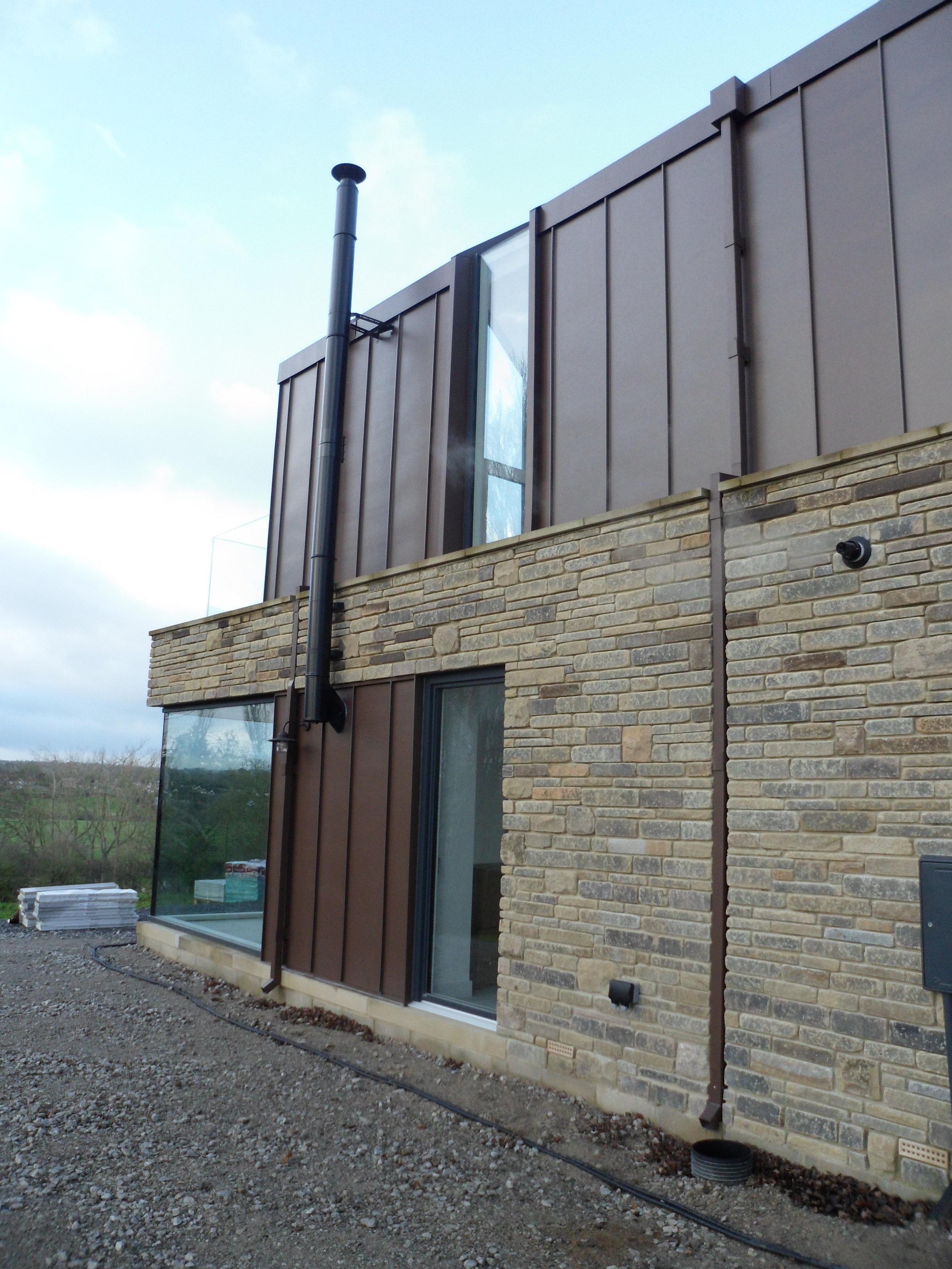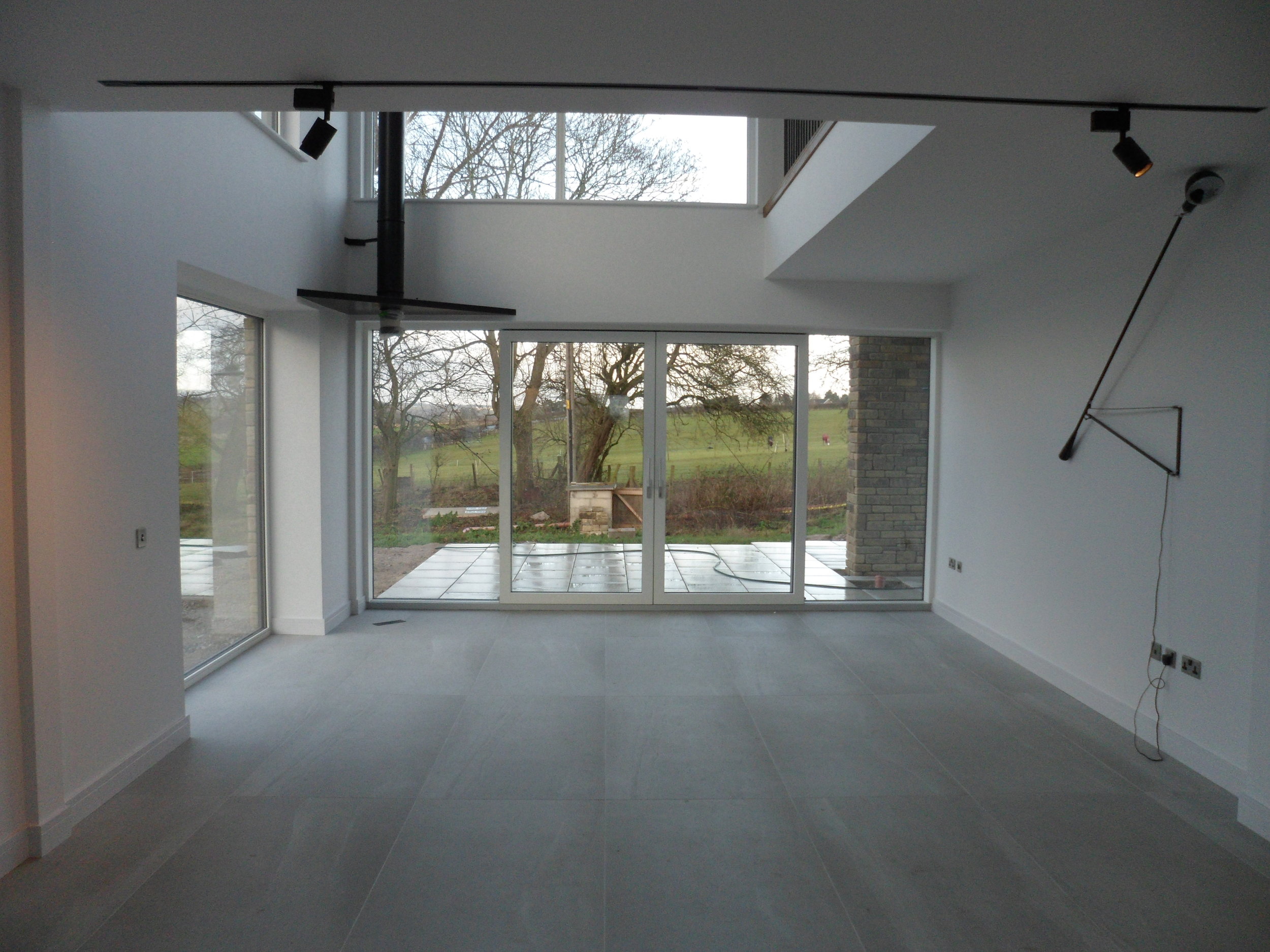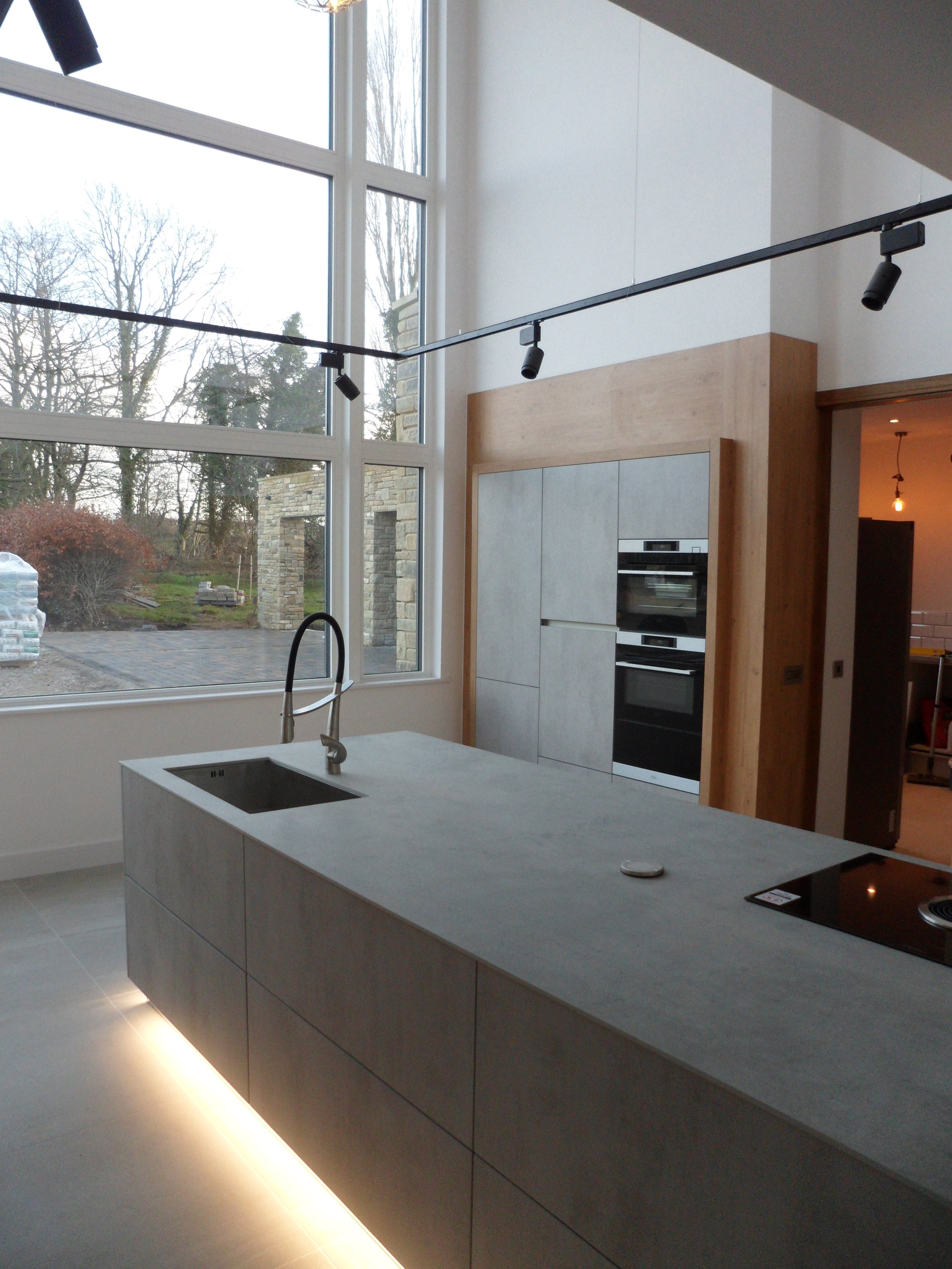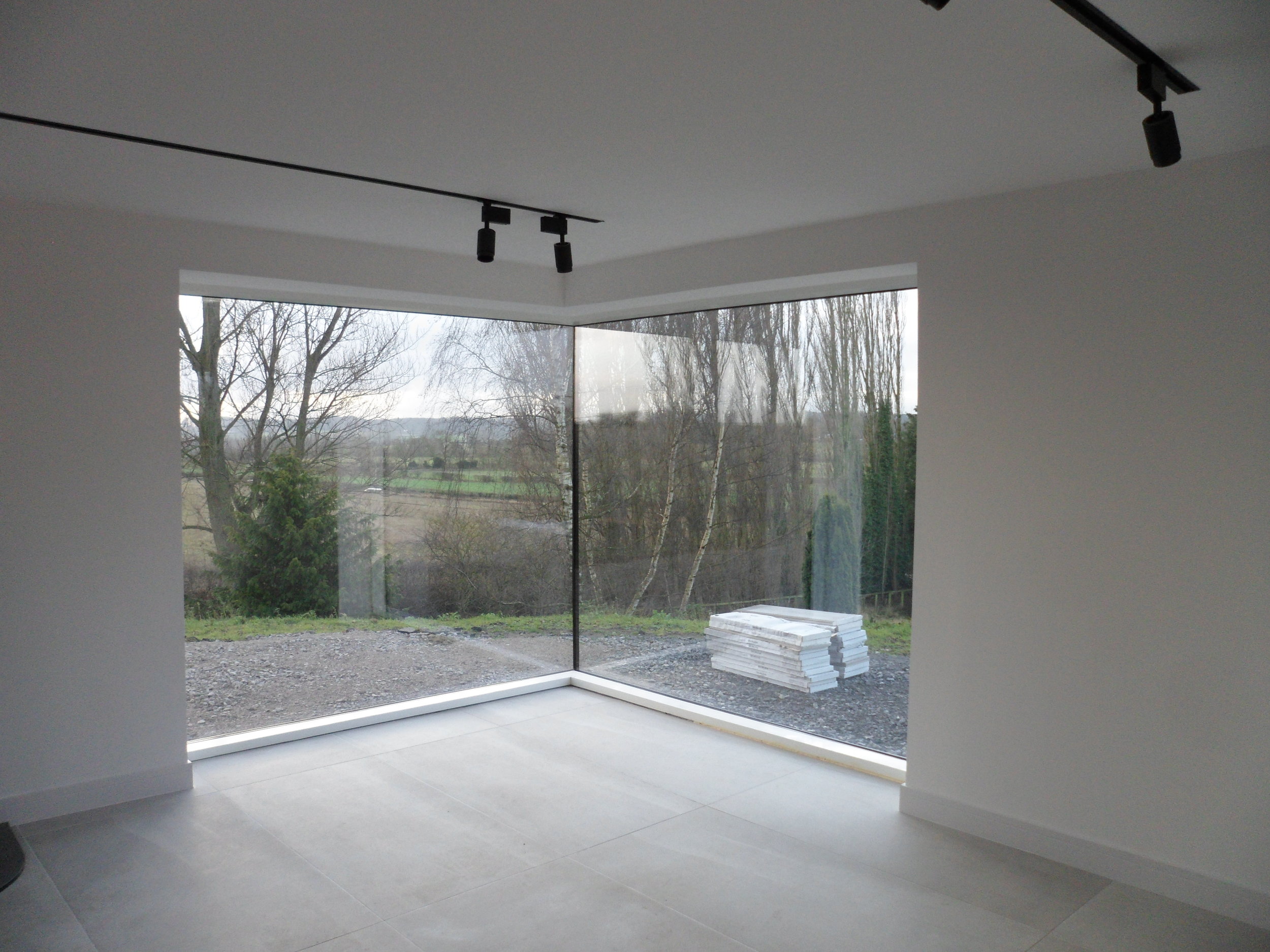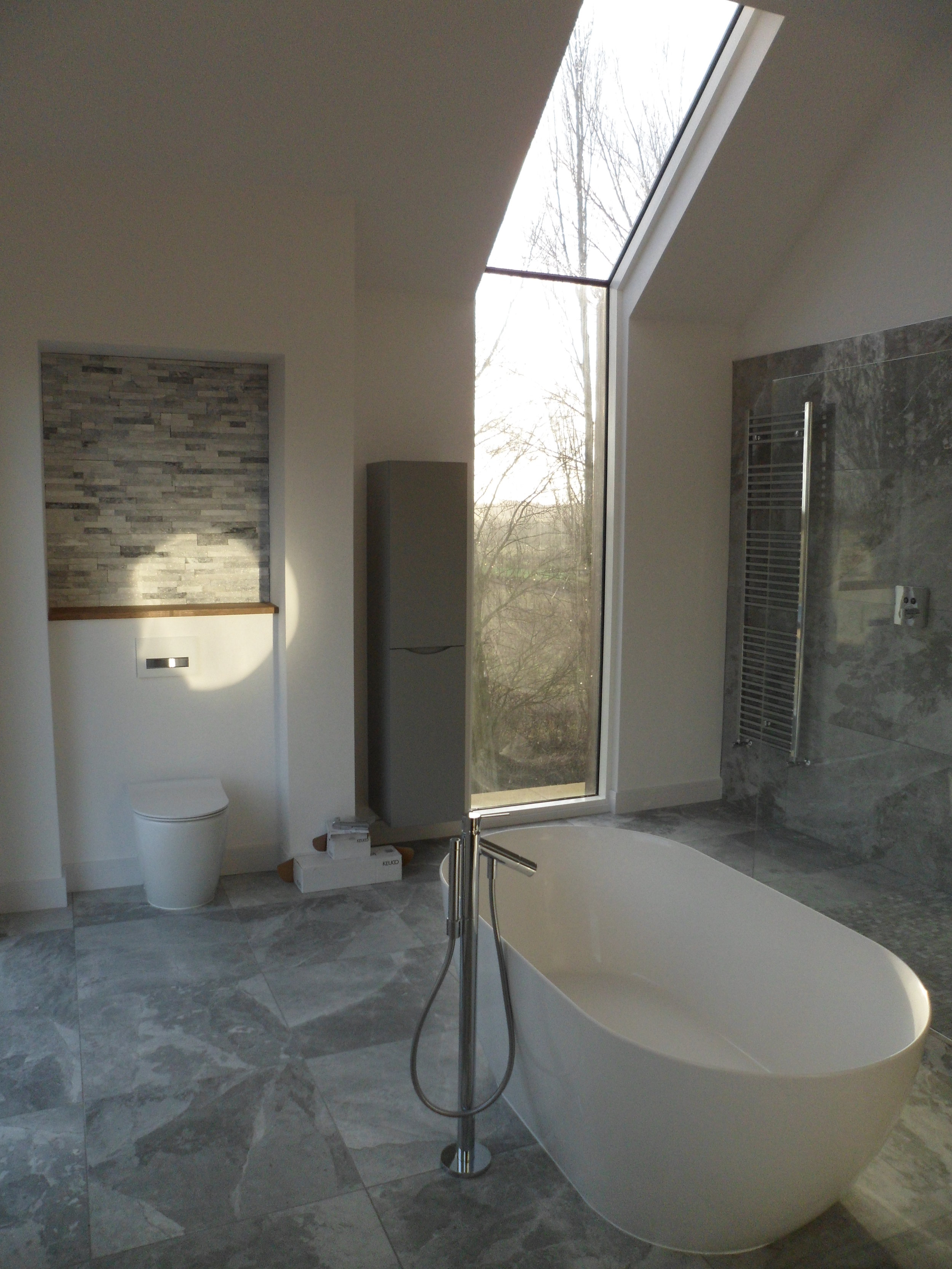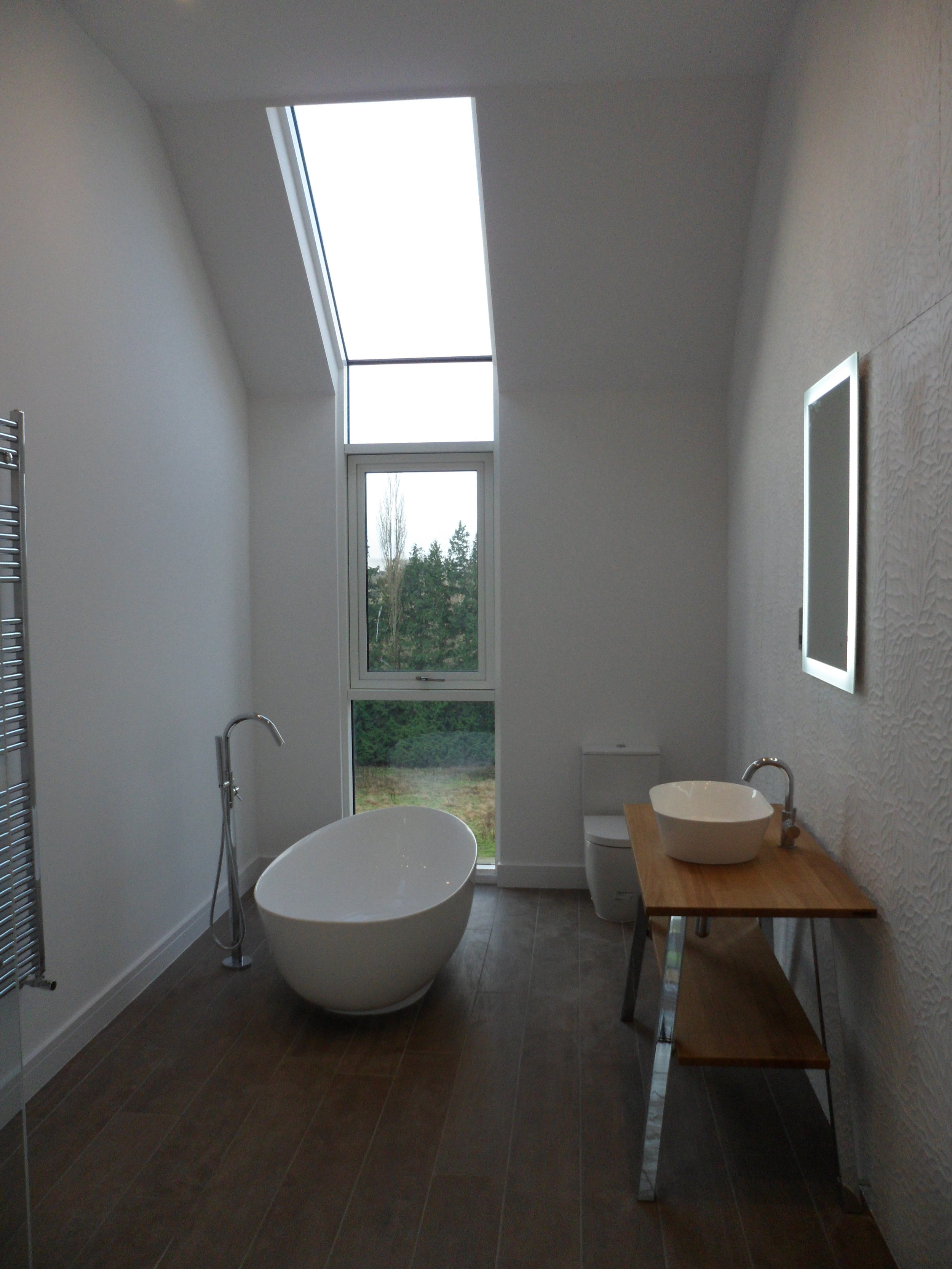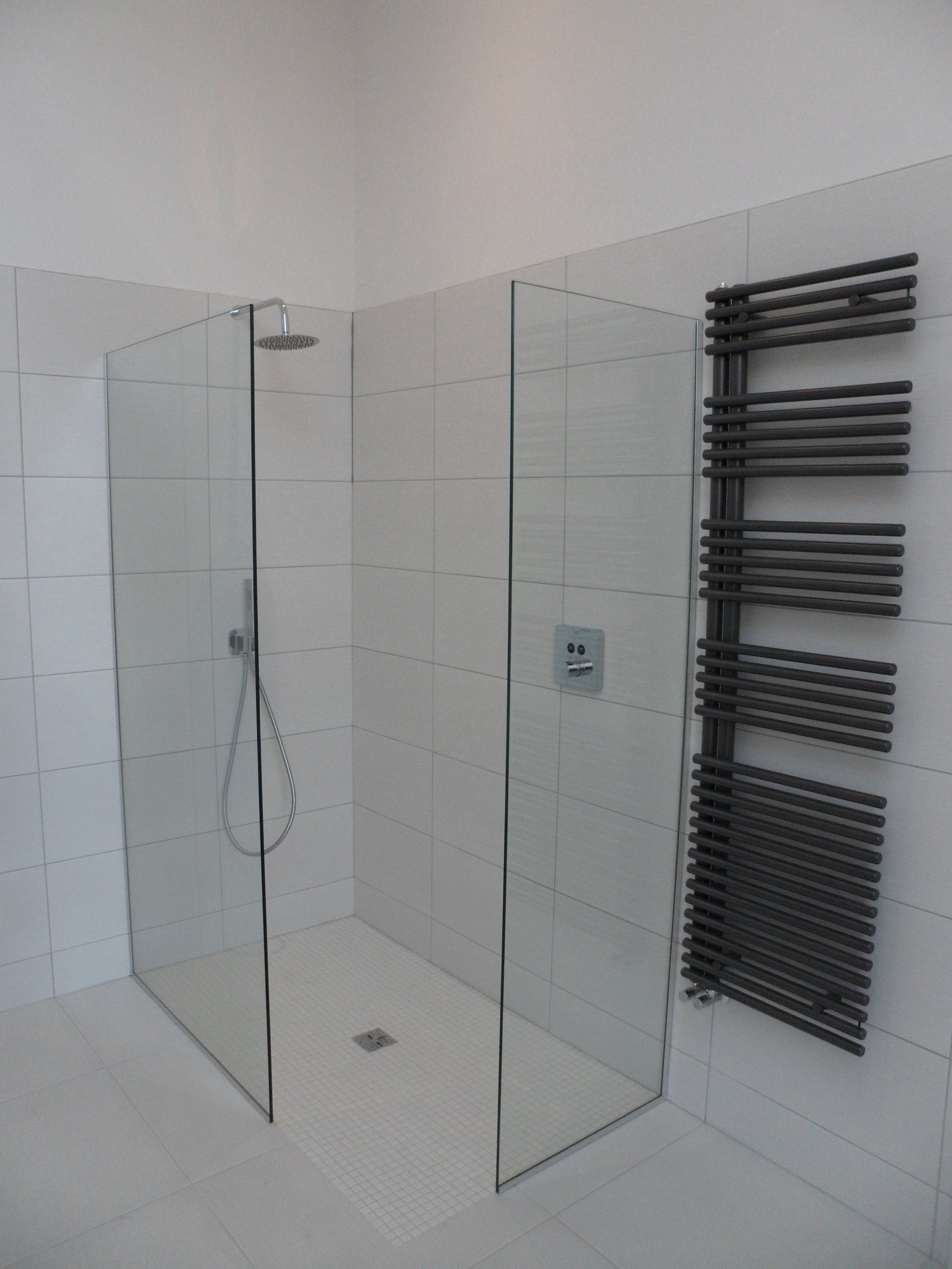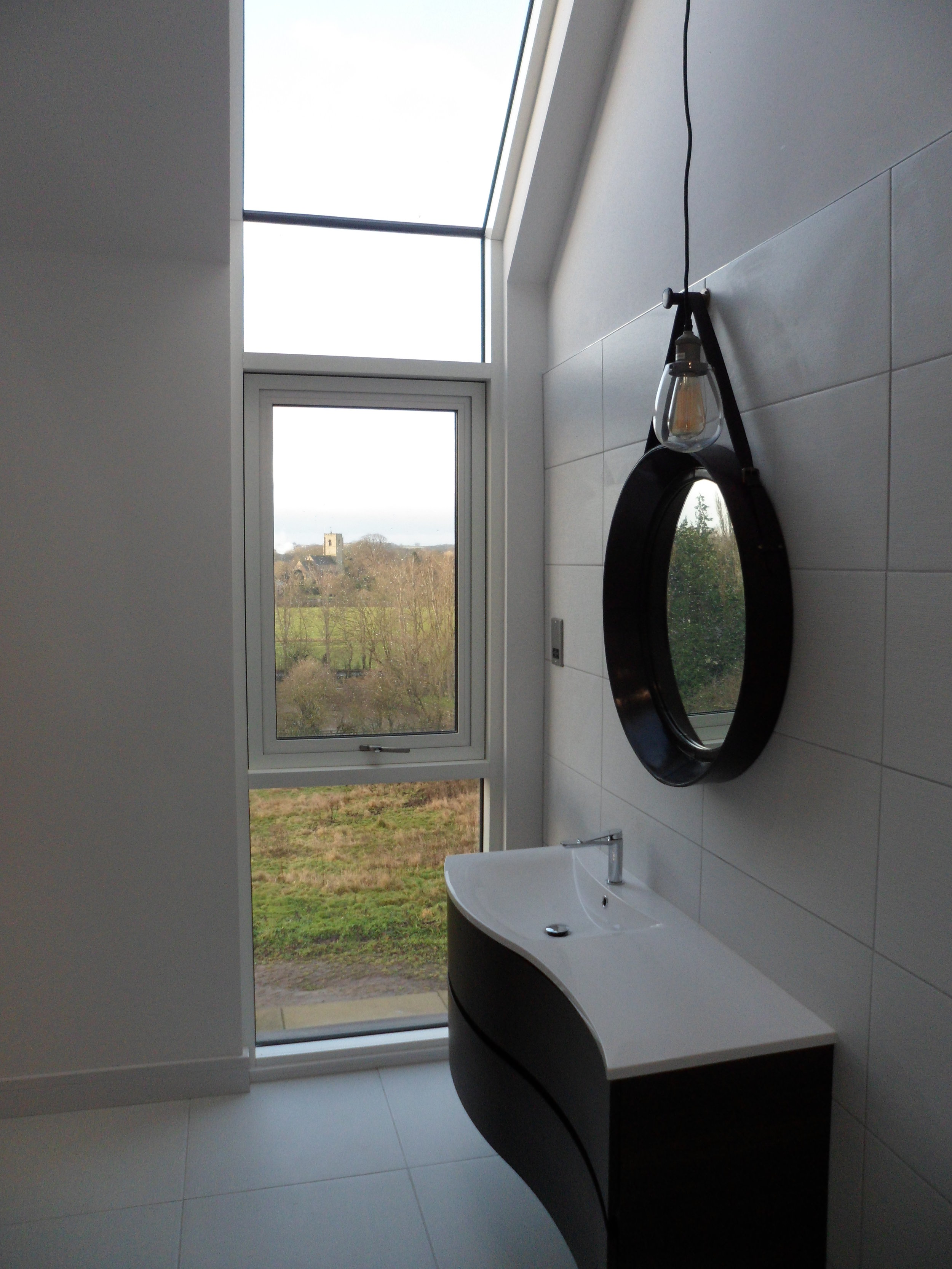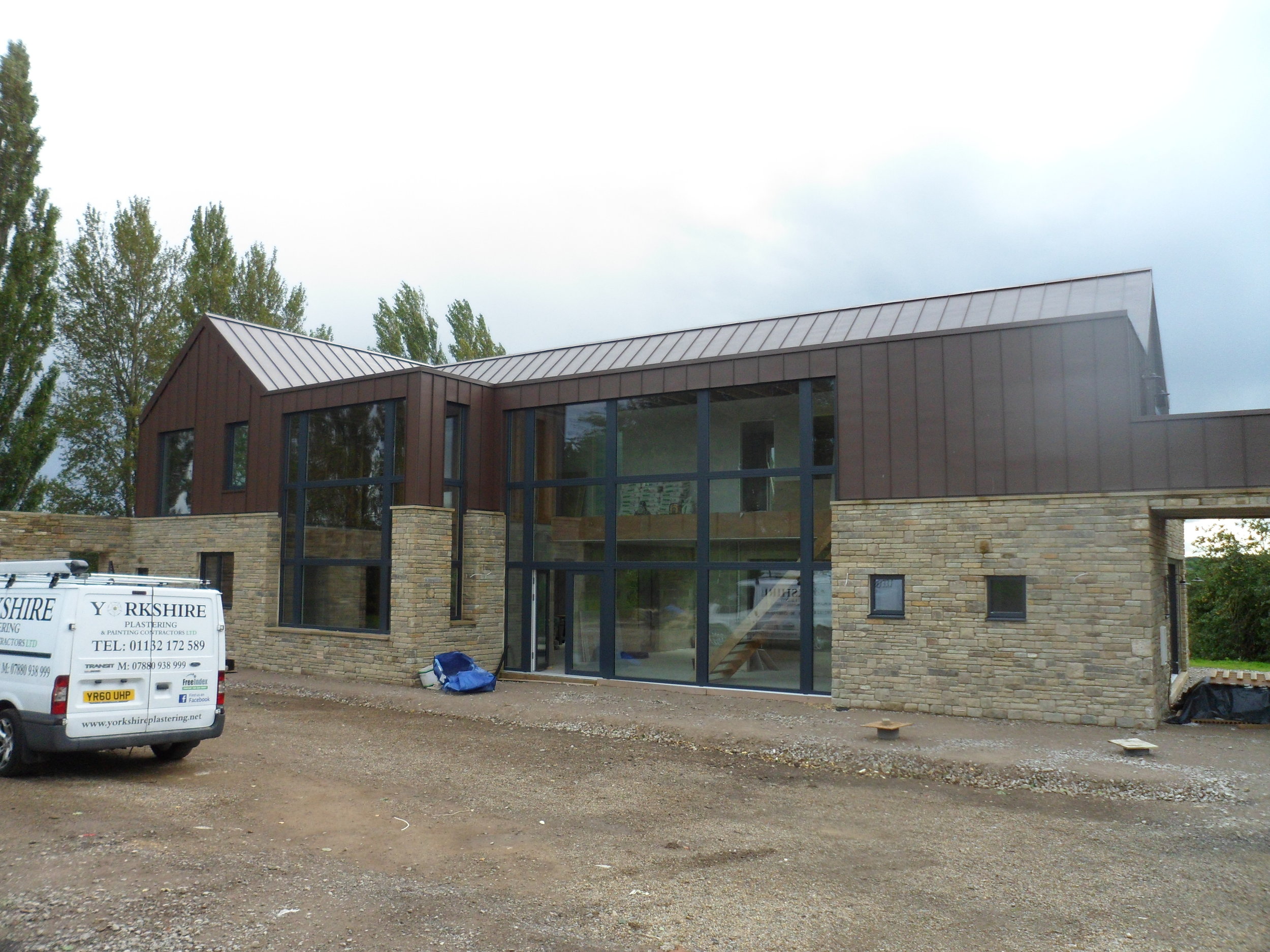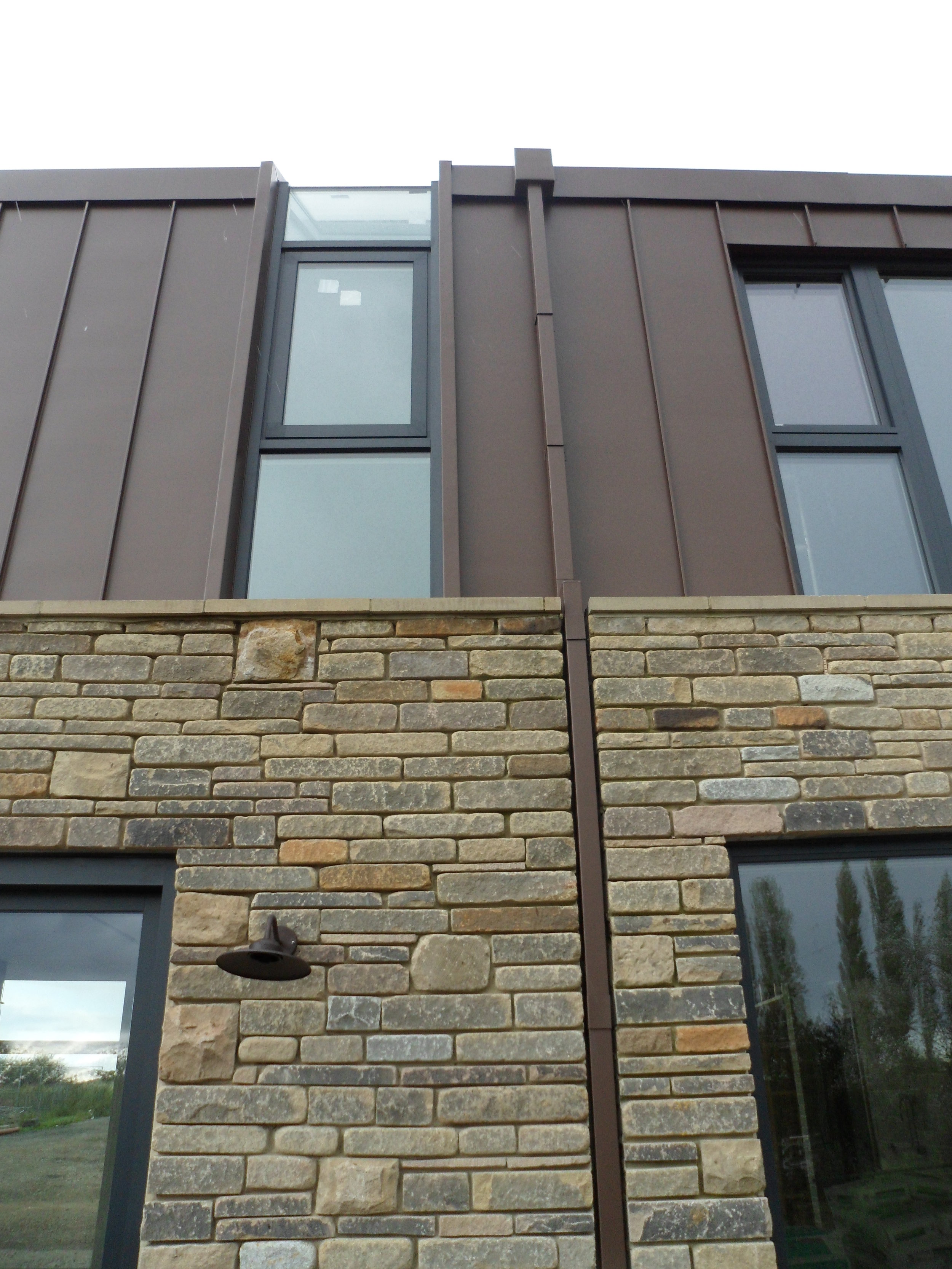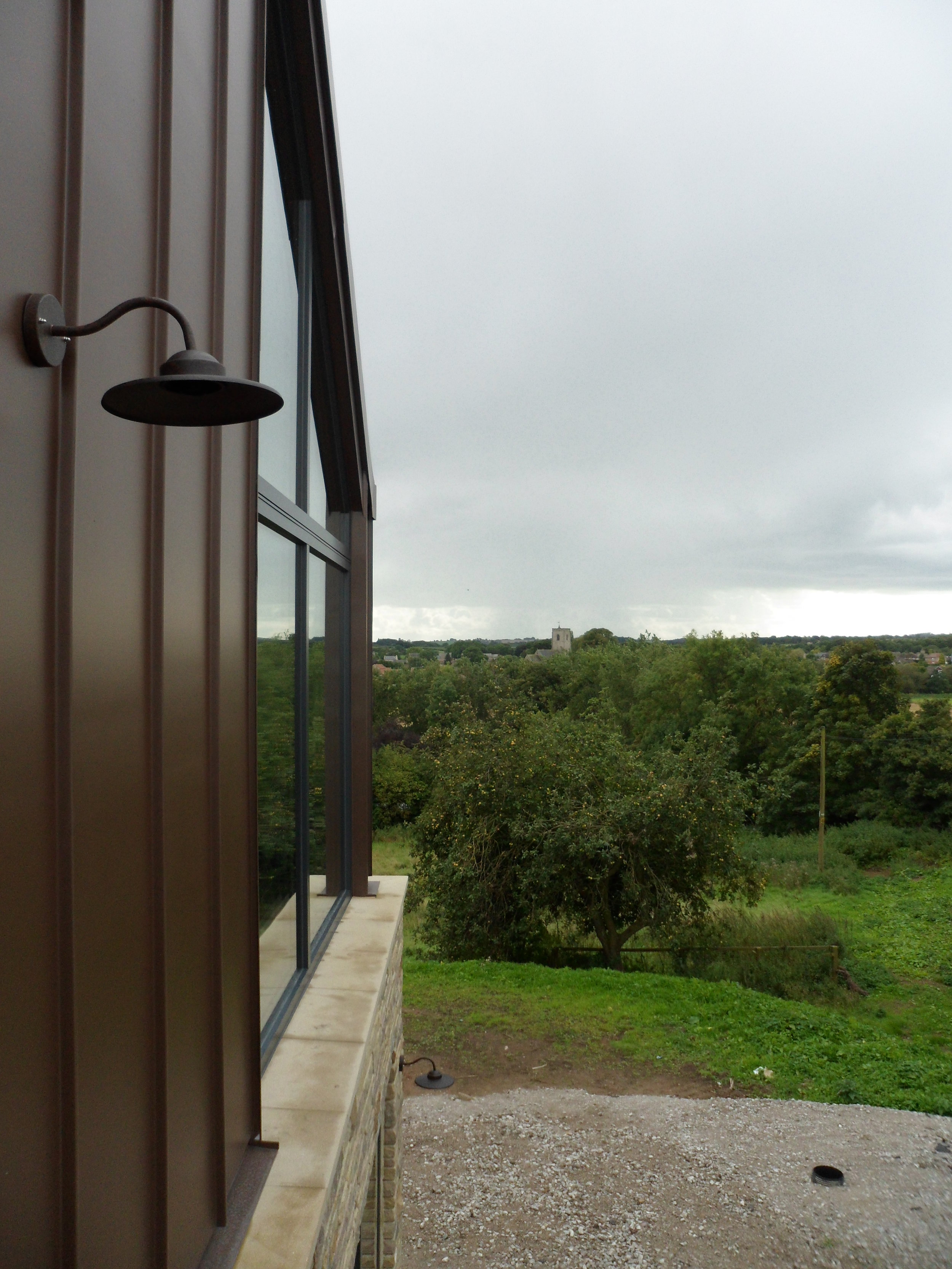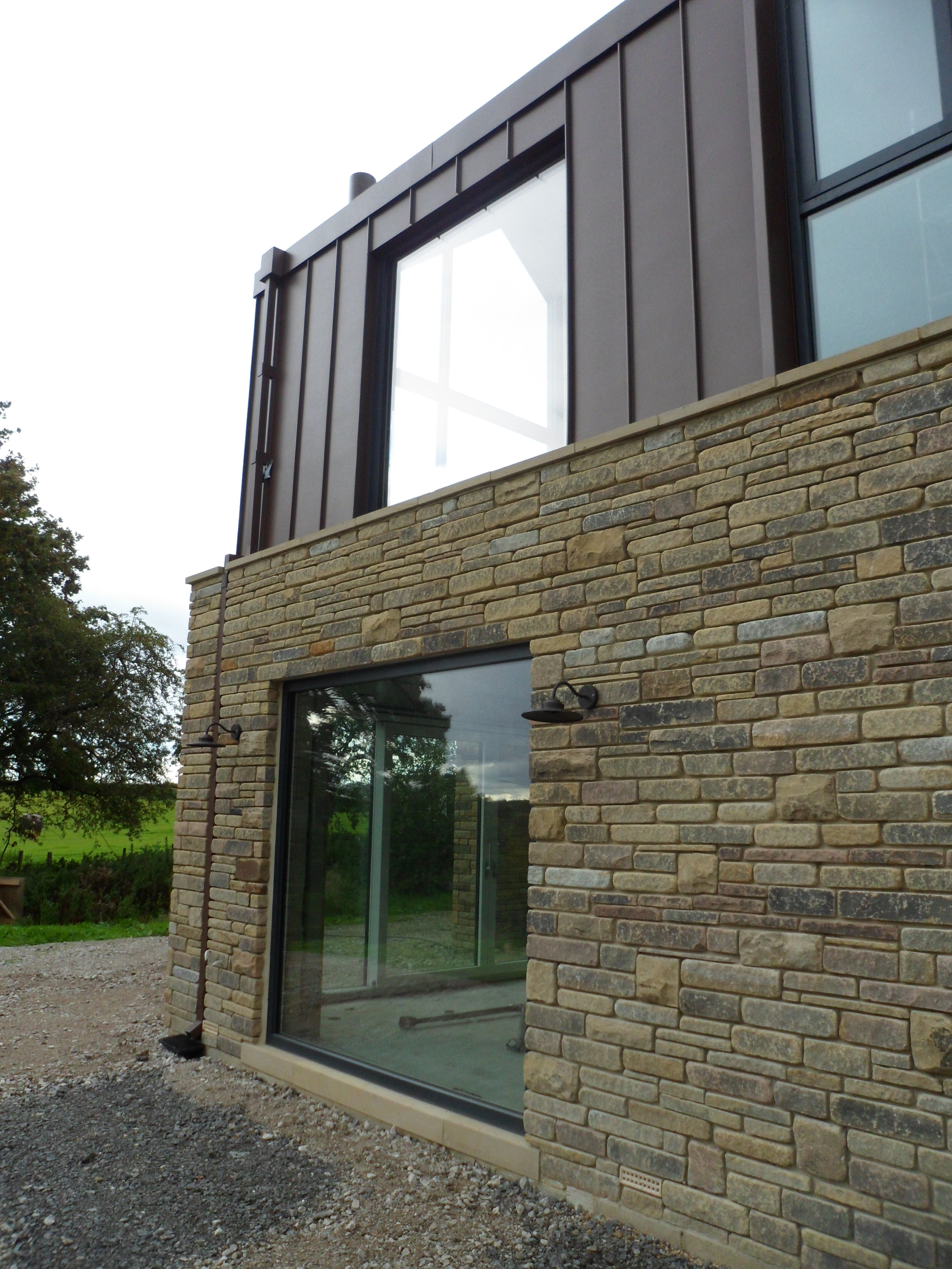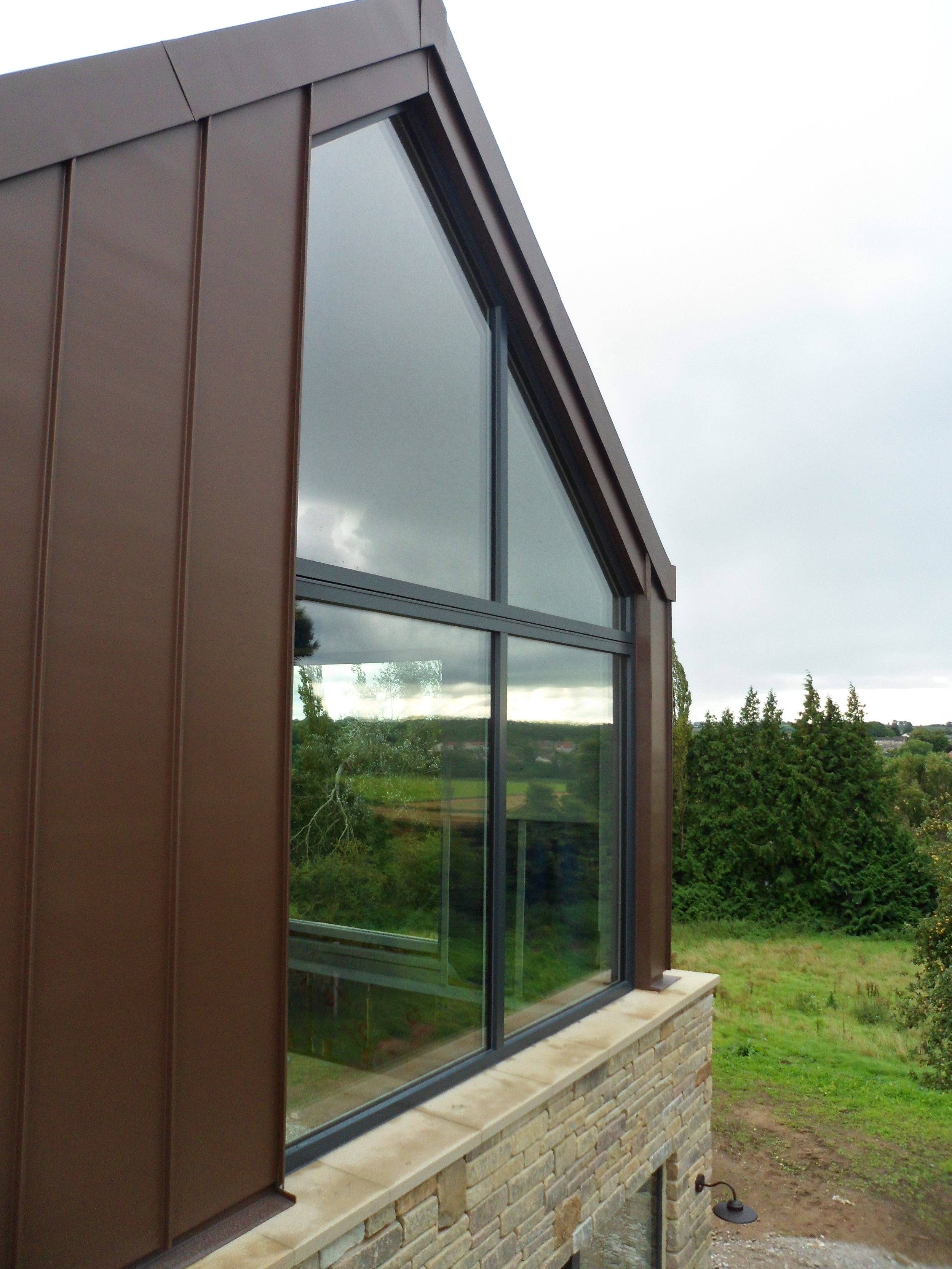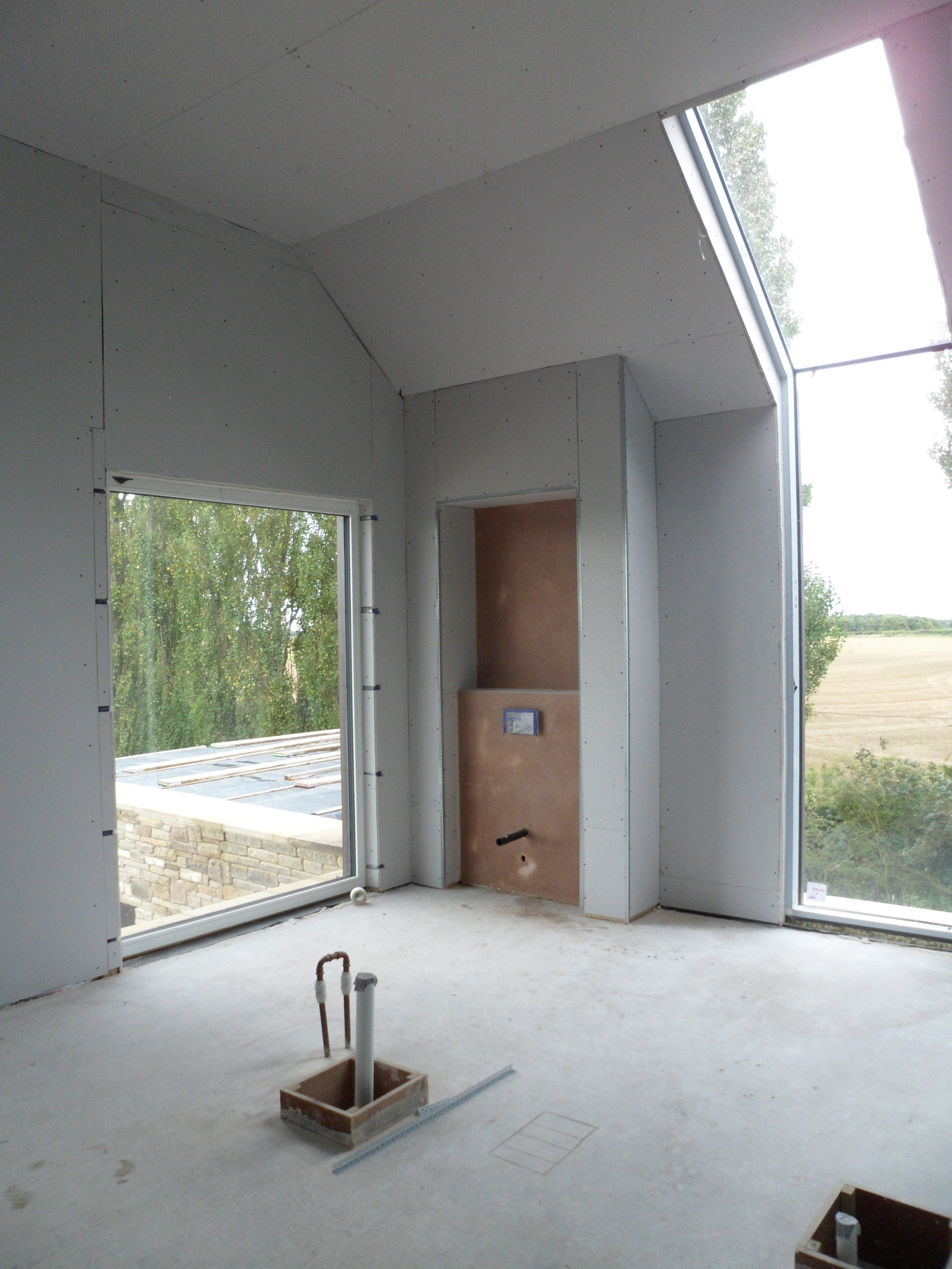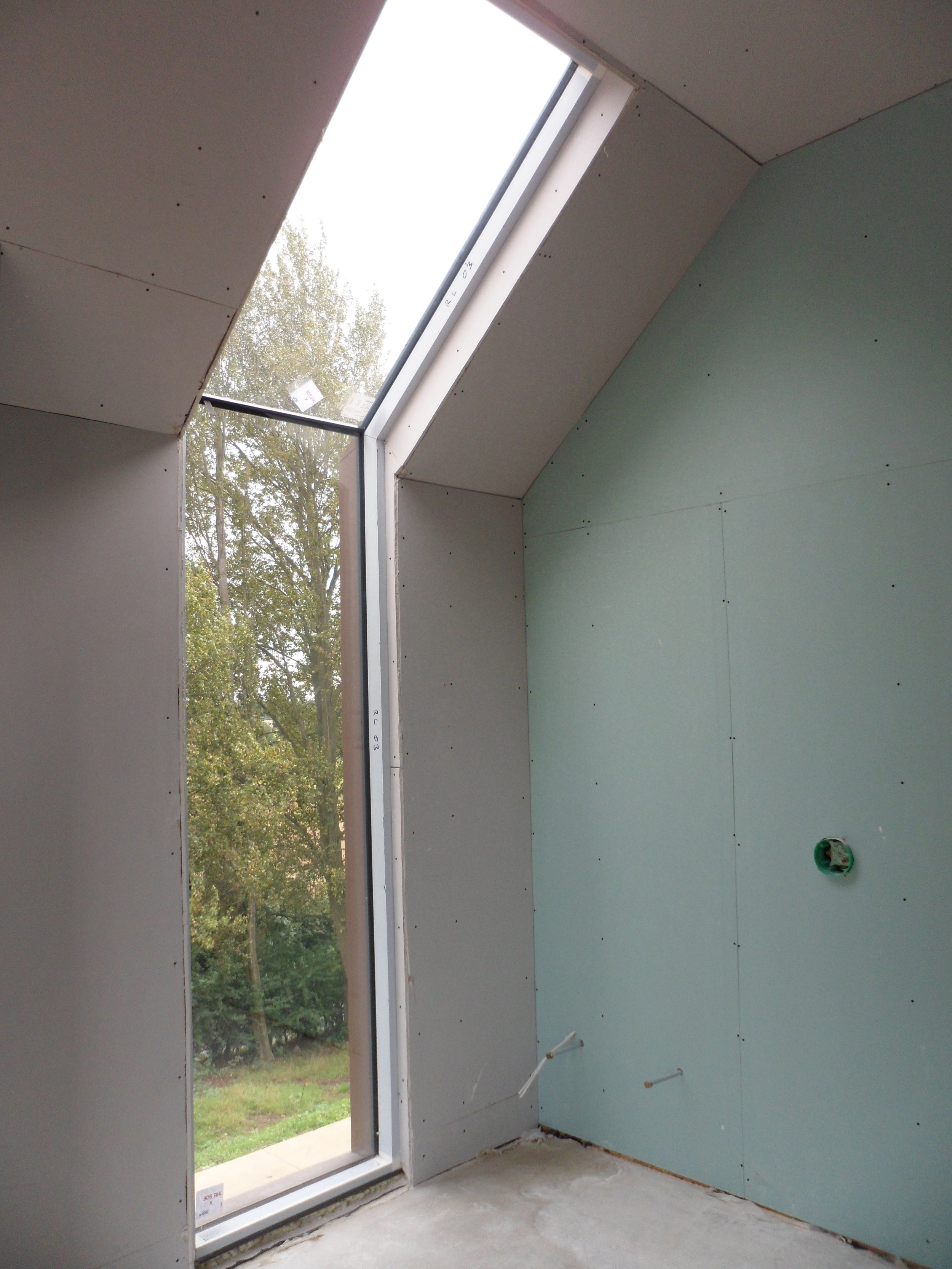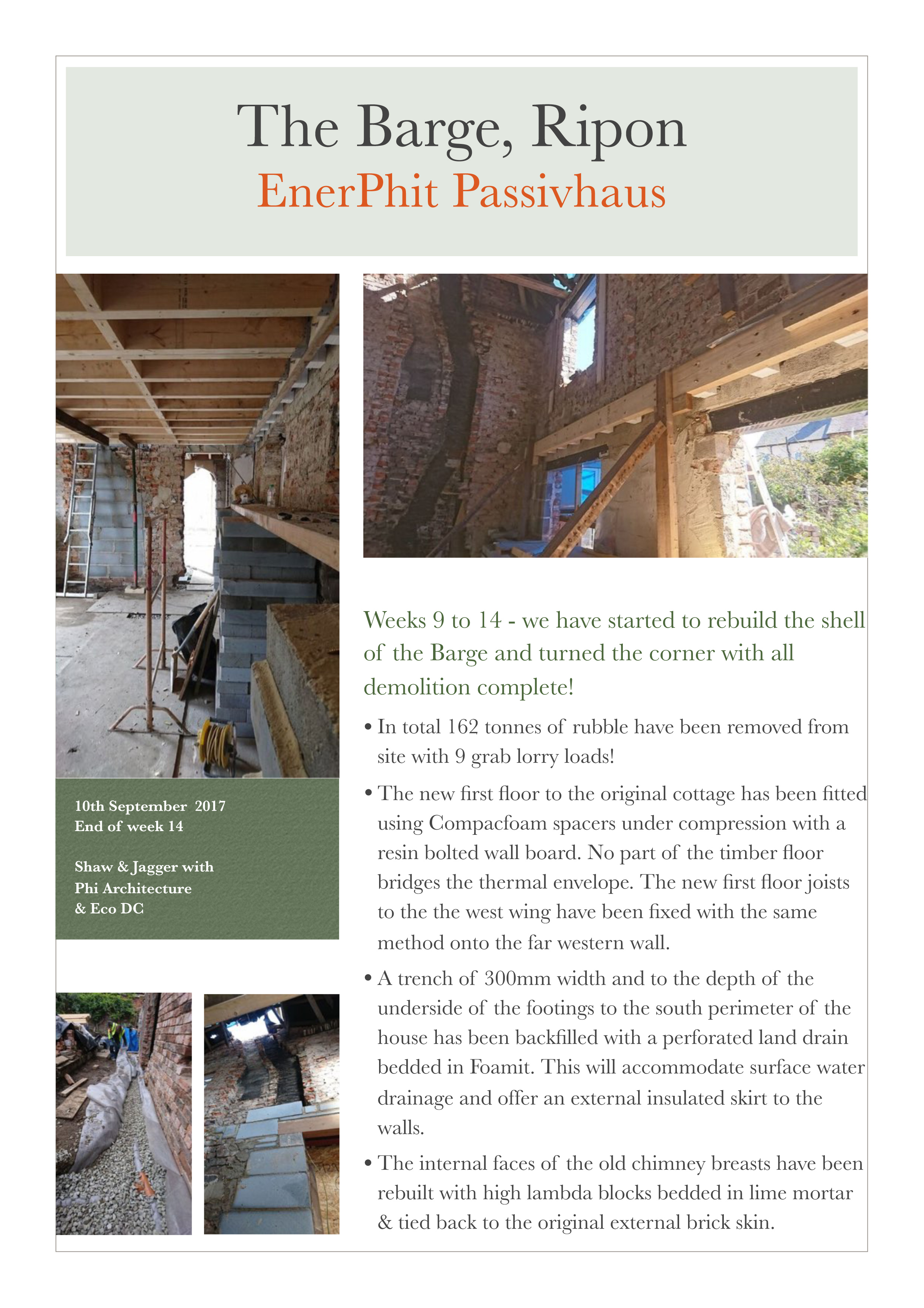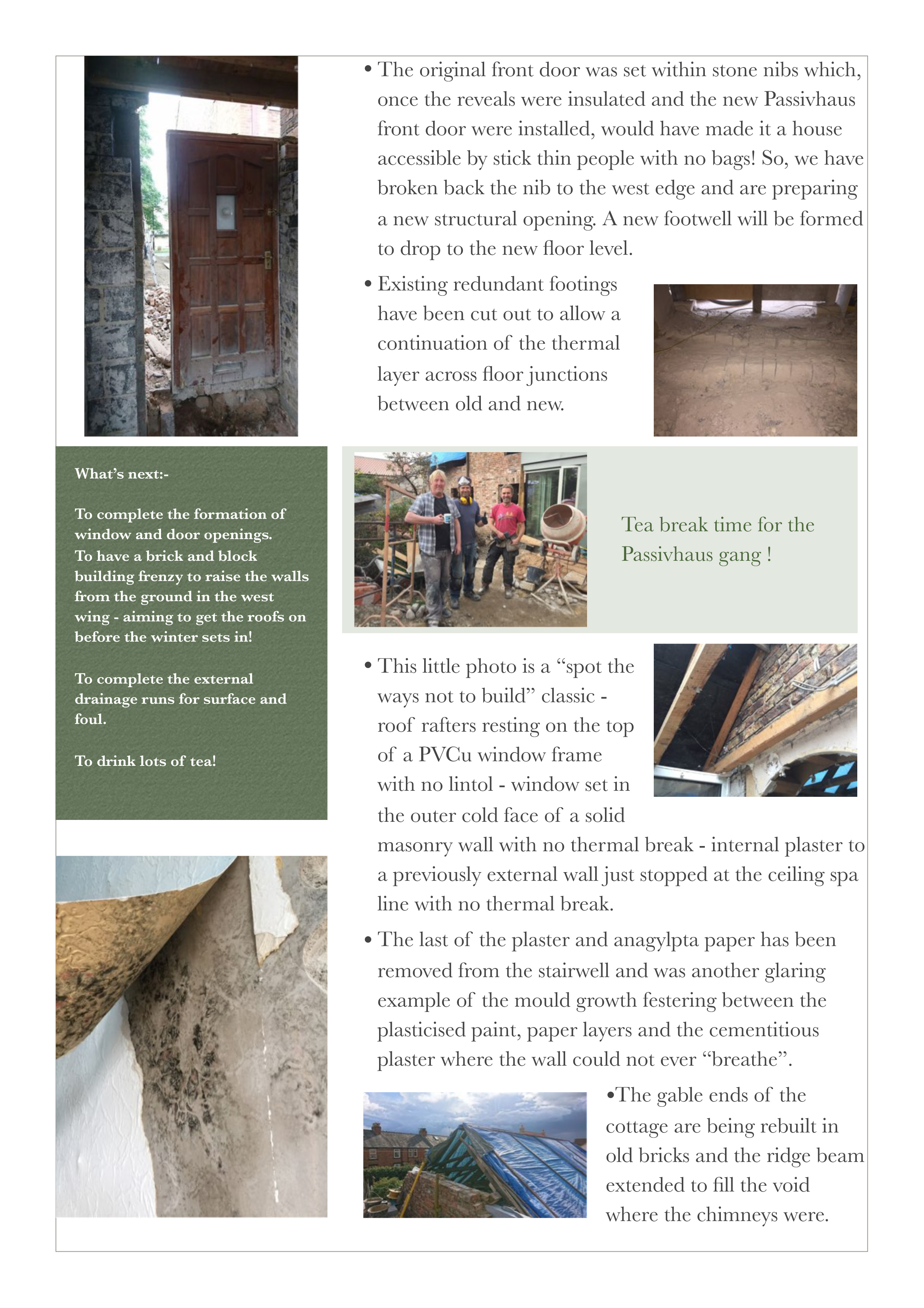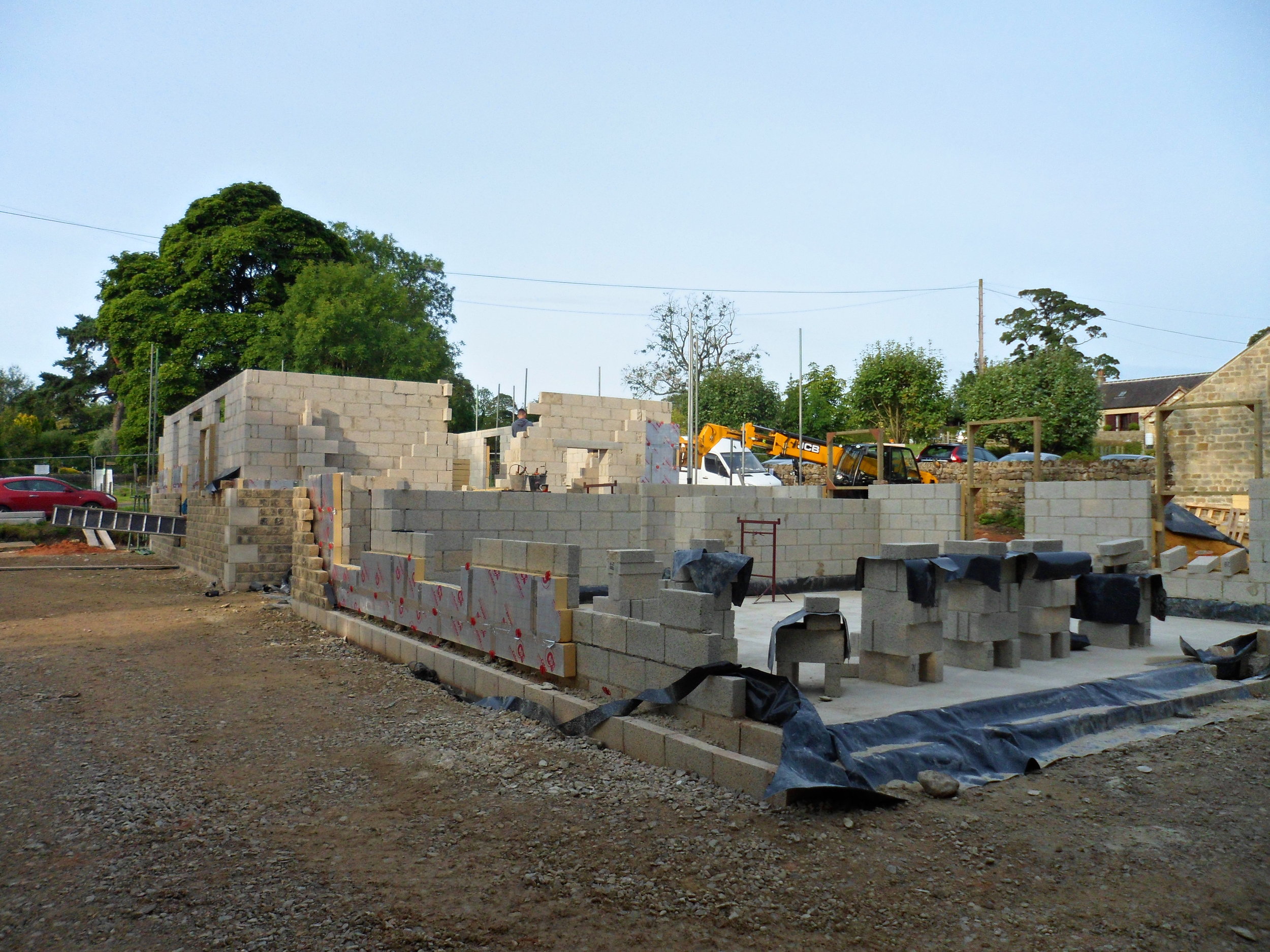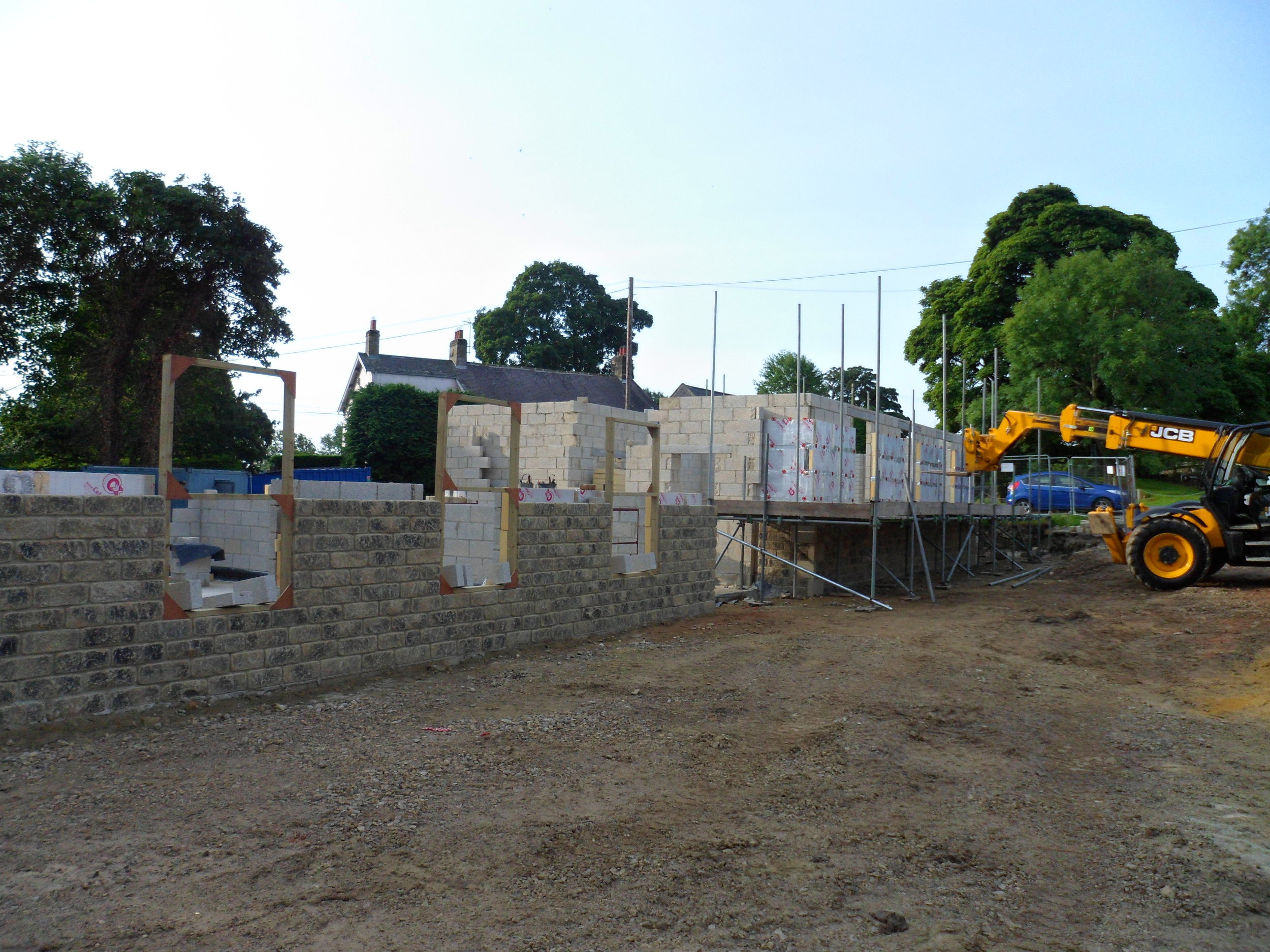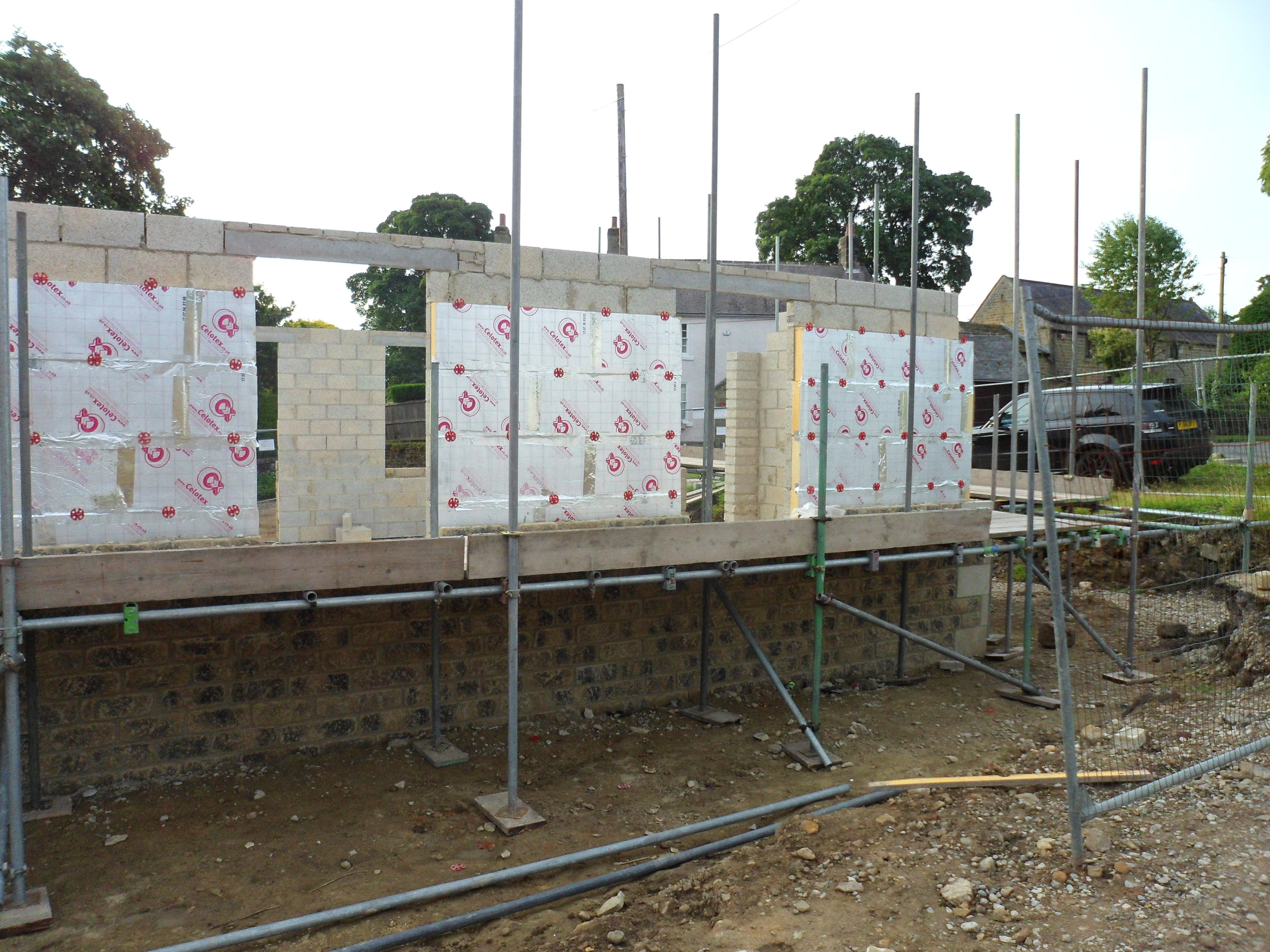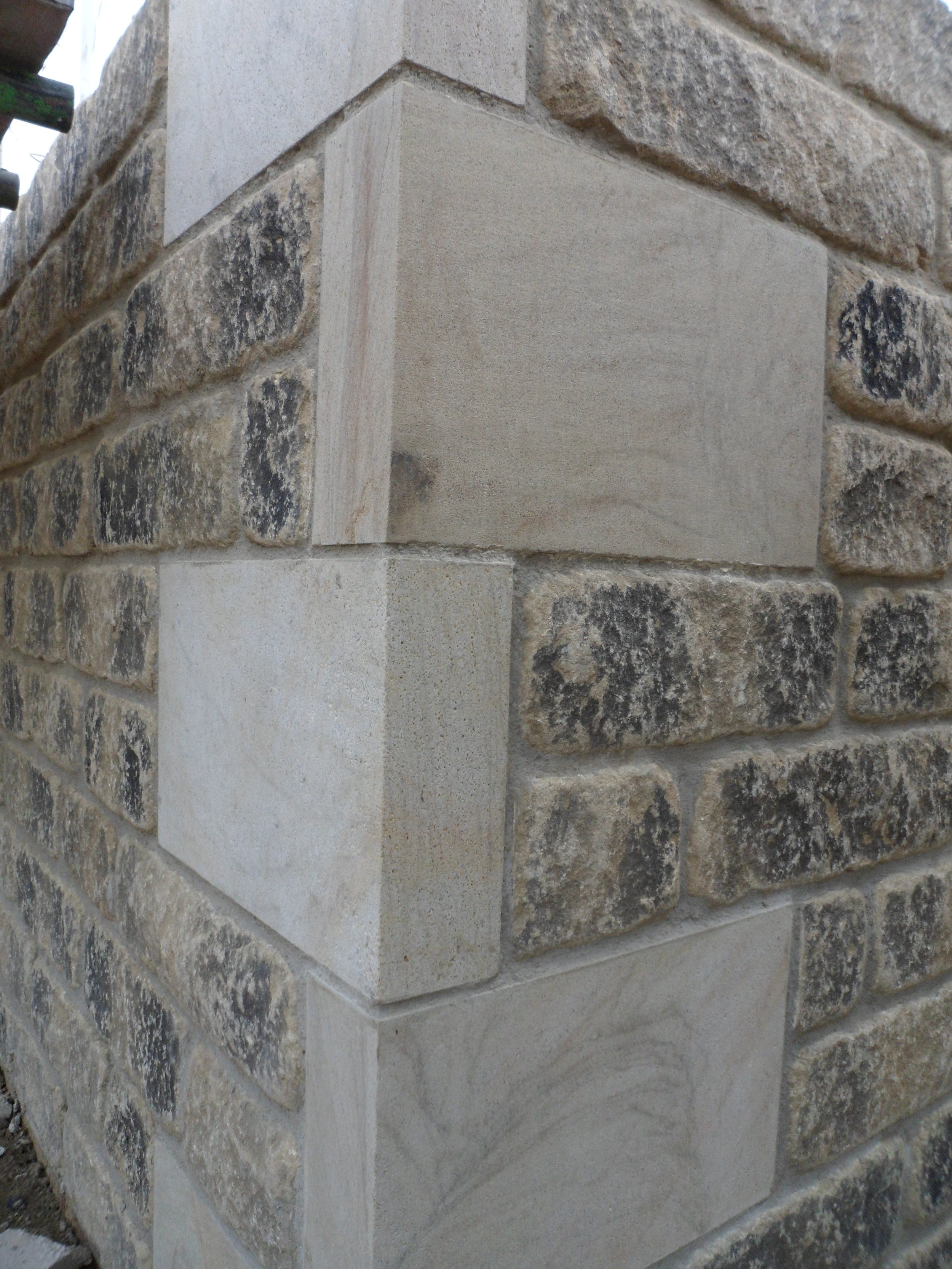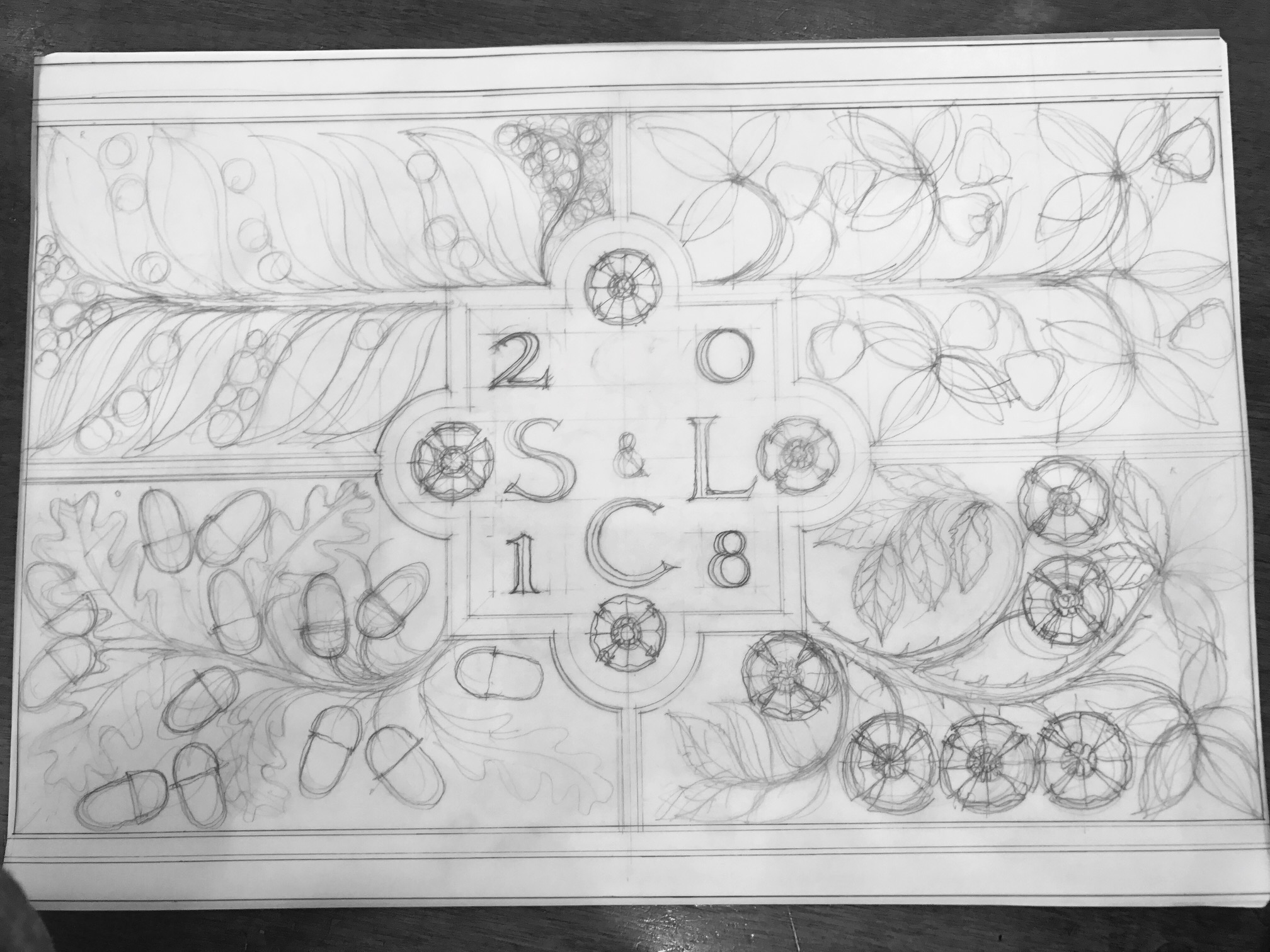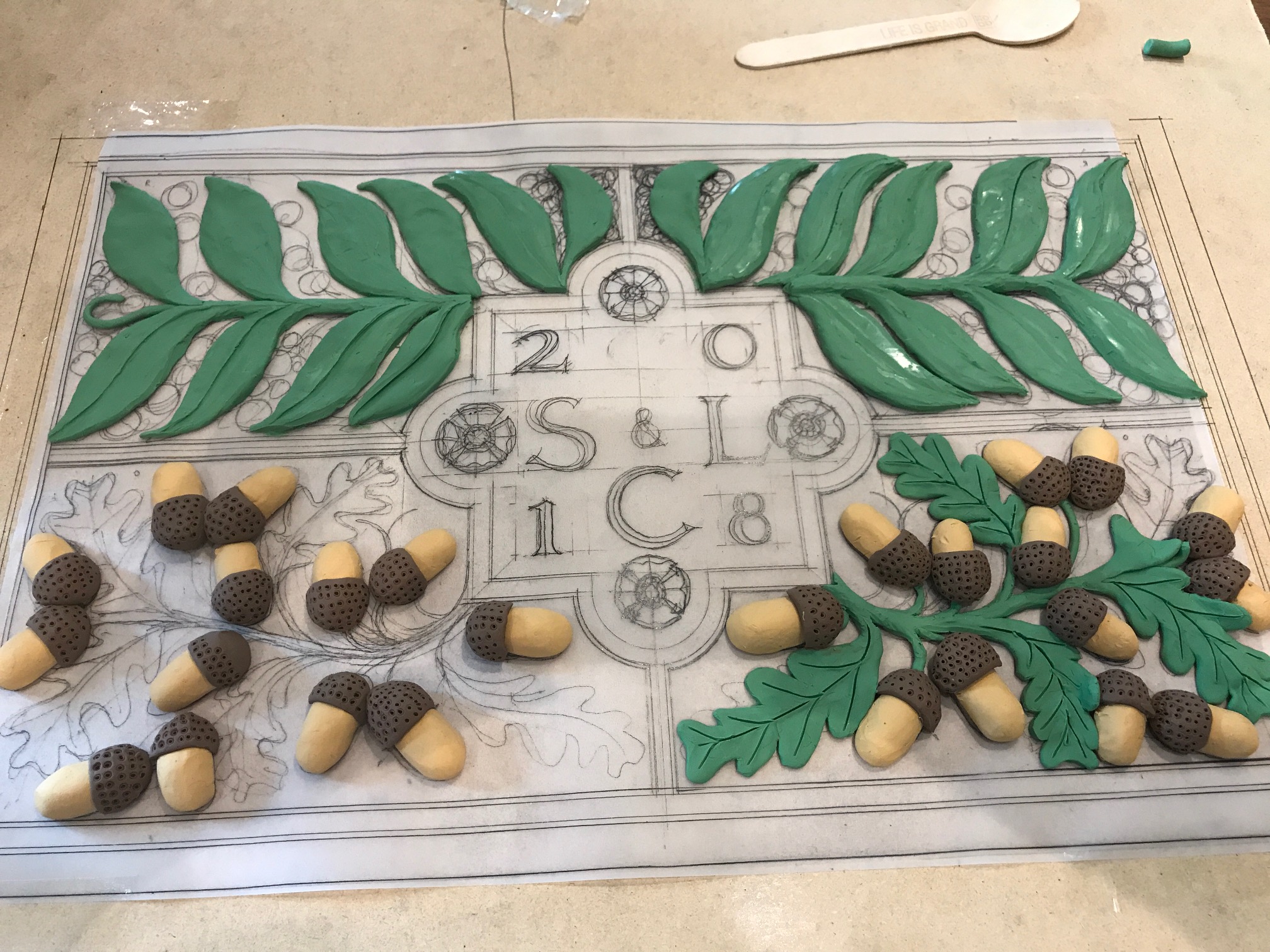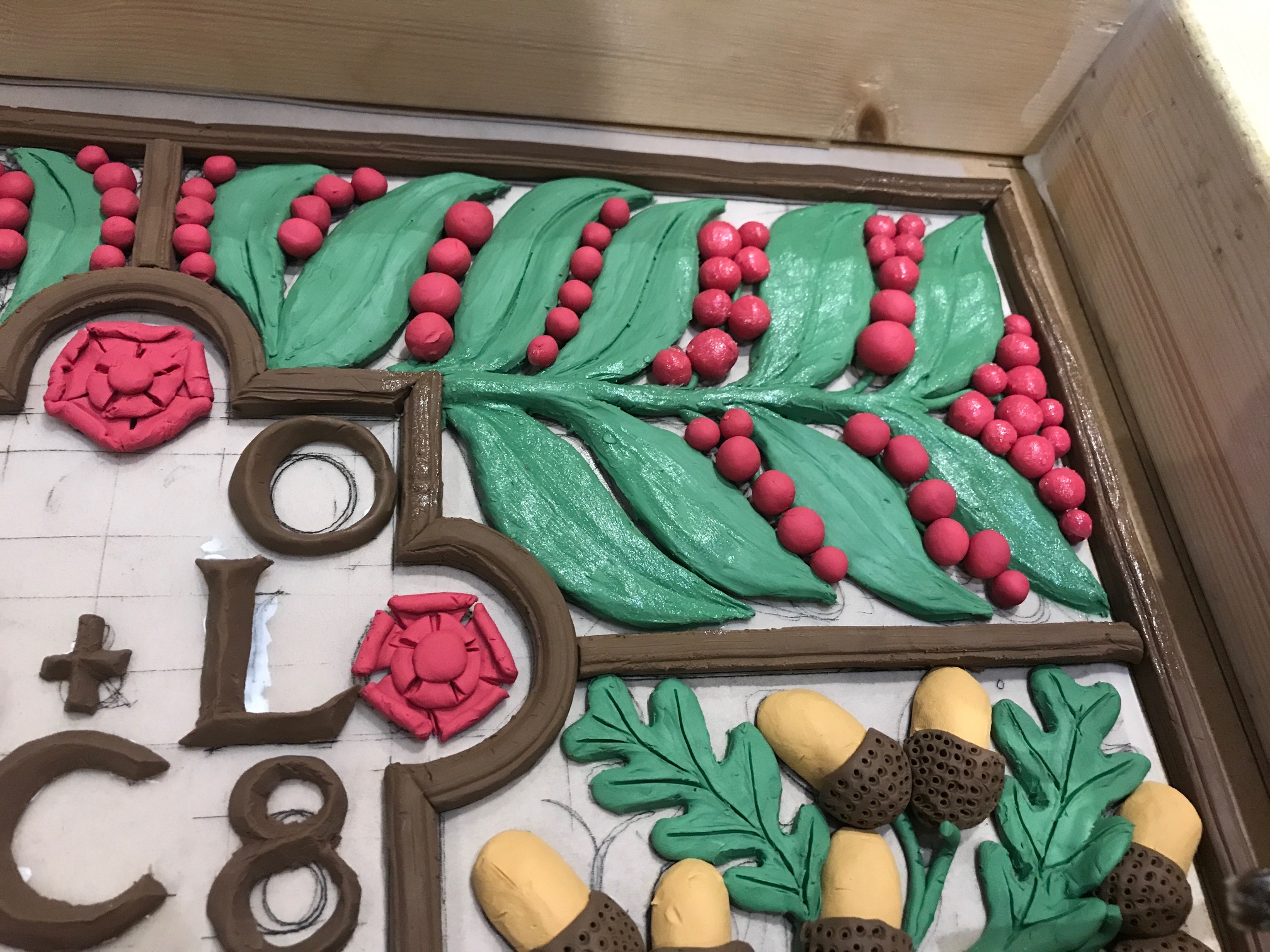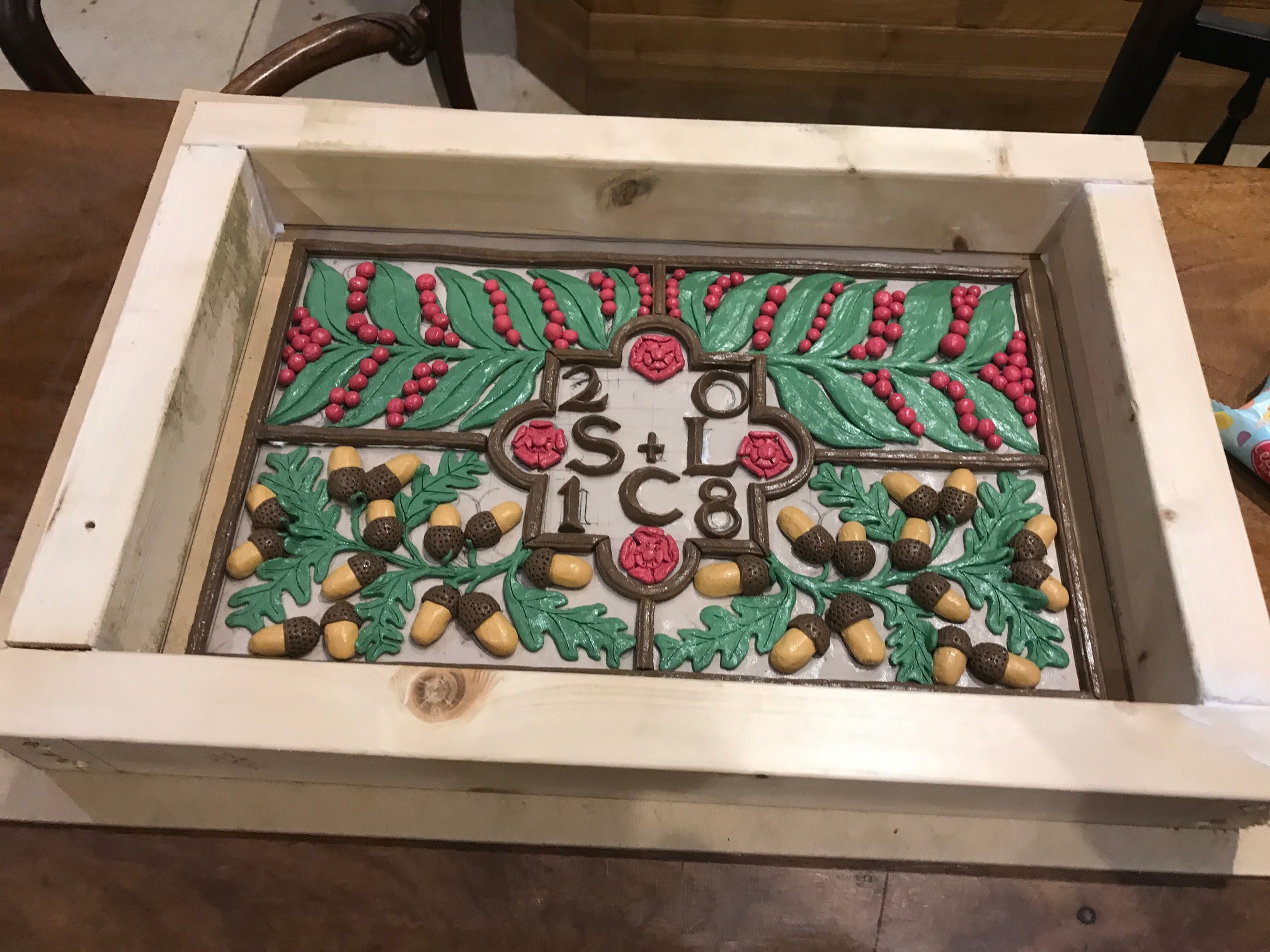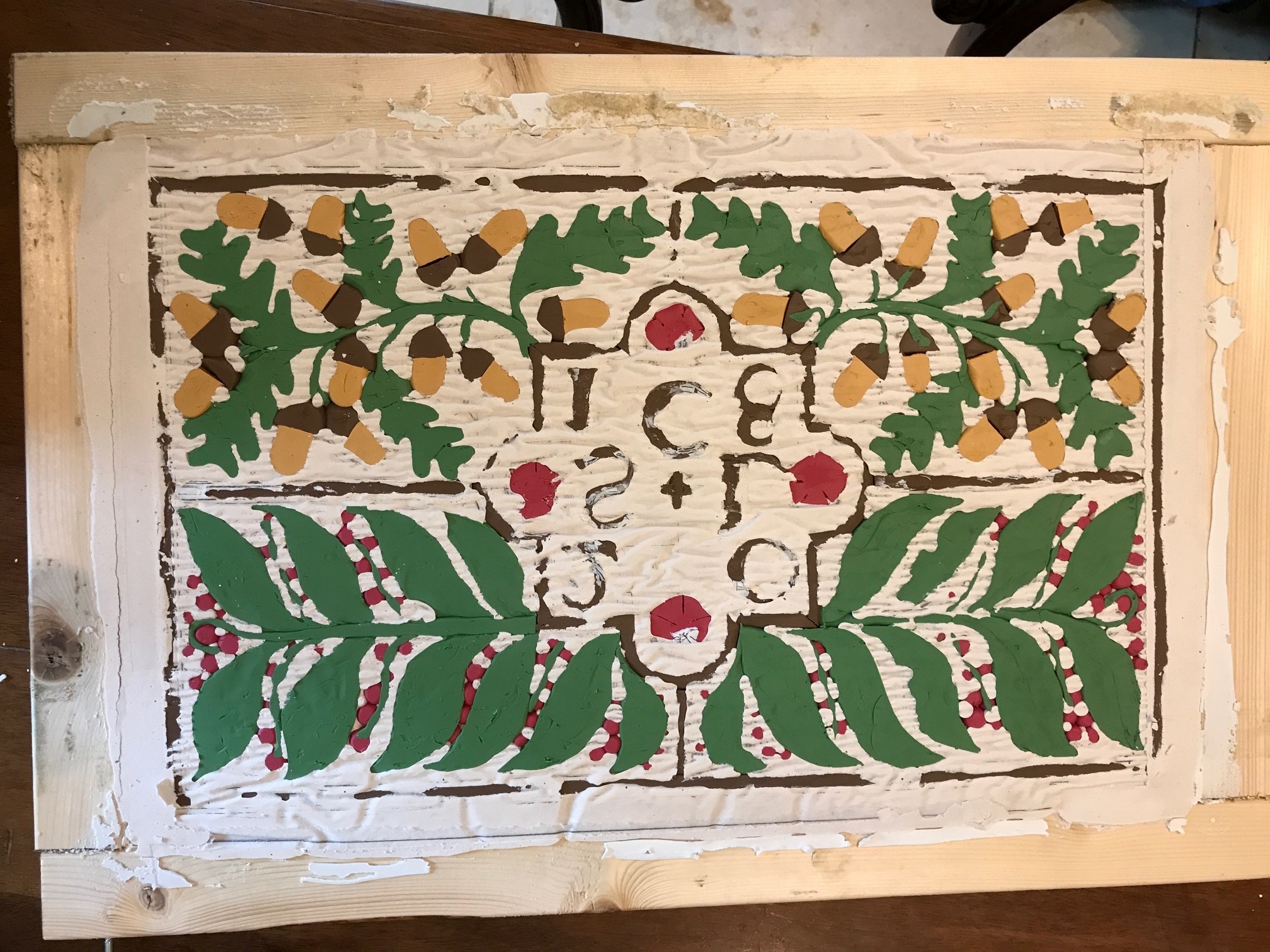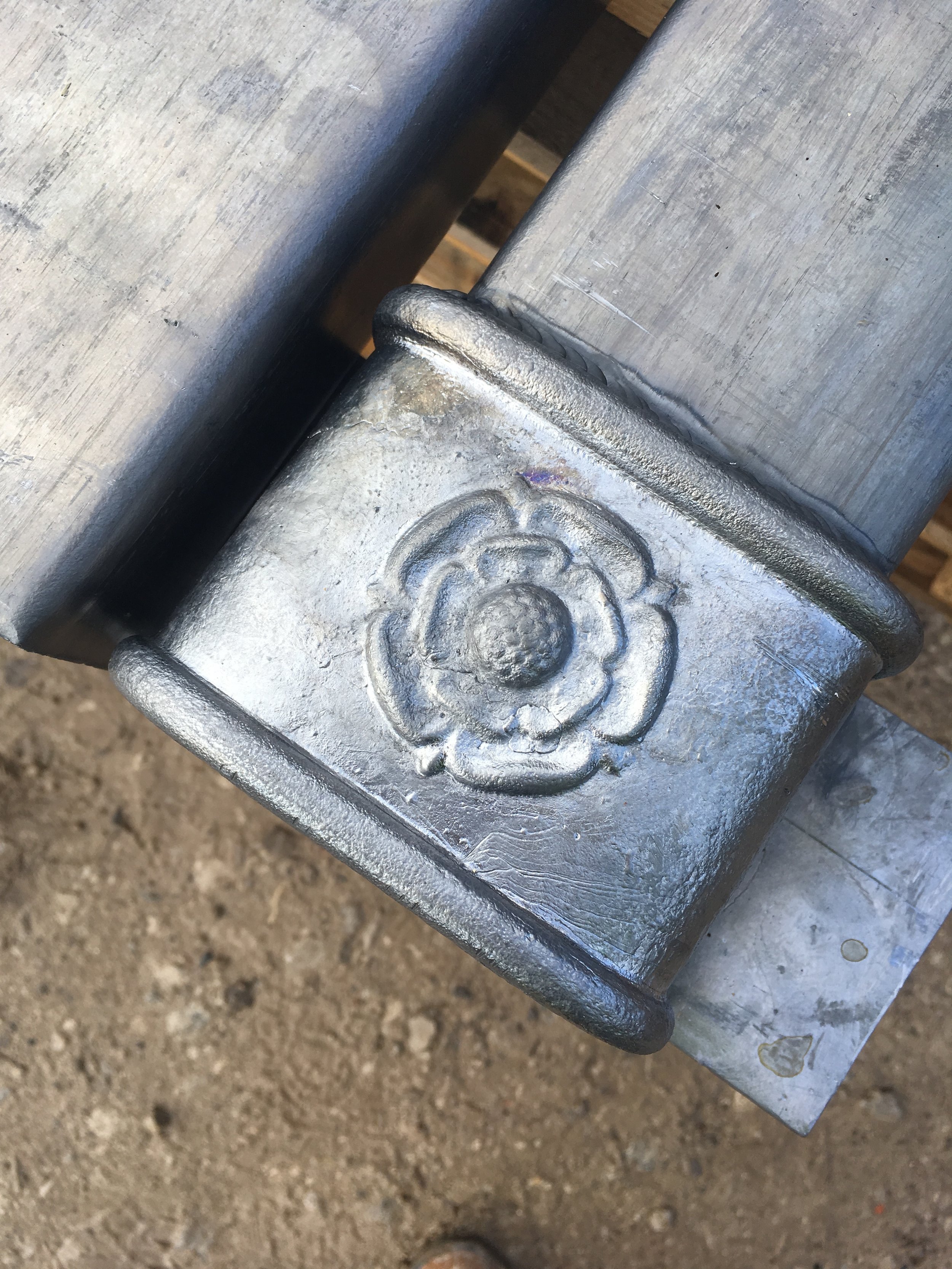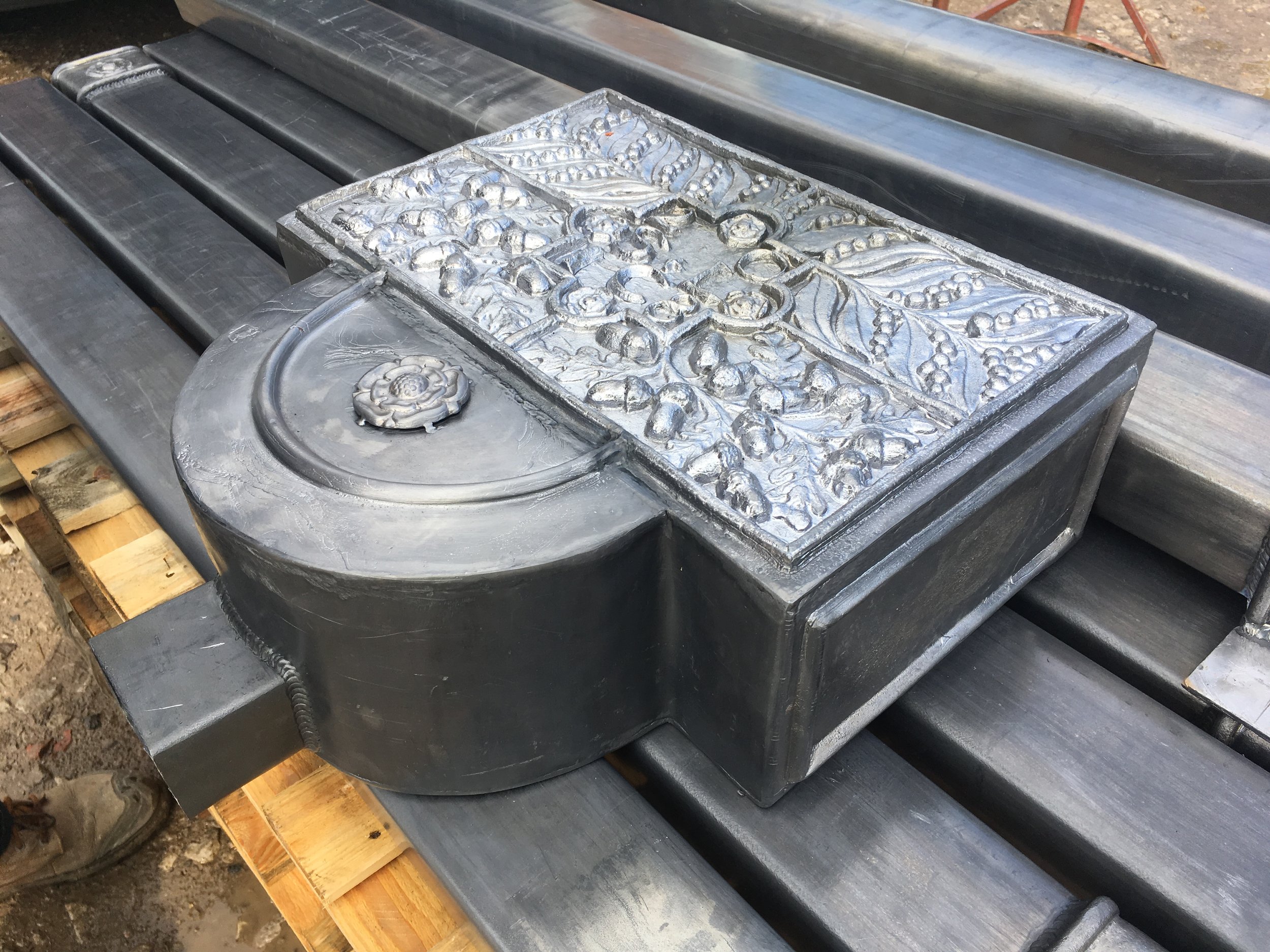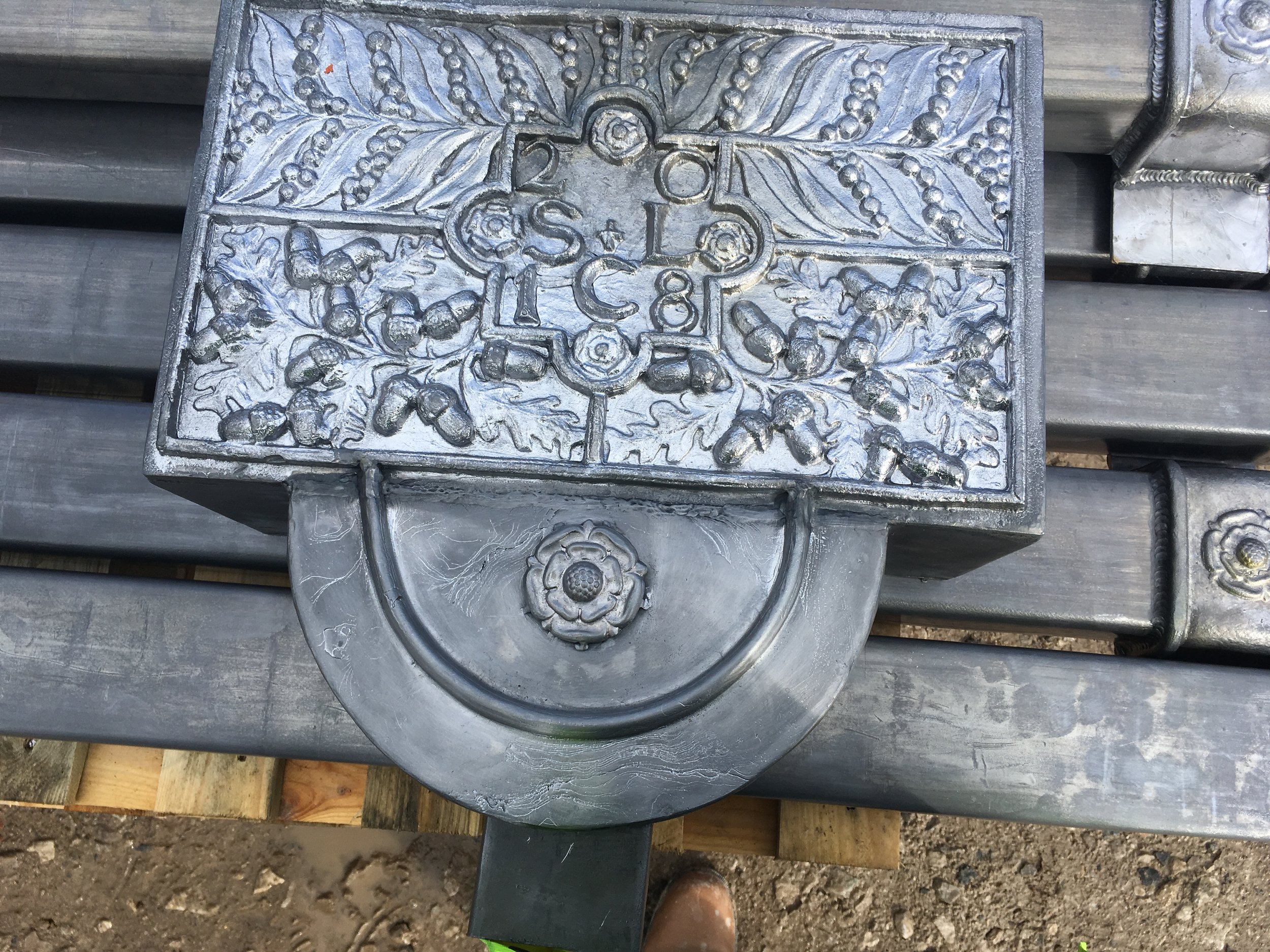Bolton Abbey Ruins - Condition Survey
We have had a busy week undertaking a condition survey of the Bolton Abbey Ruins. Shaw & Jagger was commissioned by the Estate to complete a condition survey of the ruins of Barden Tower, the old Abbey as well as the old aqueduct and the ruins of a remaining chimney.
A bit about Bolton Abbey:
Bolton Abbey Estate in Yorkshire is a large 30,000 acre estate focusing around the ruins of Bolton Priory, an Augustinian monastery founded in 1154 by Lady Alice de Romille.
The priory was dissolved in 1539 during Henry VIII's Dissolution of the Monasteries leaving the nave to serve as a parish church. It was originally a large monastic estate similar to that of Fountains Abbey. Other fascinating local ruins which have also formed part of our survey work are Barden Tower, an ancient ruin which sits next to the Priest House which today is a wedding and fine dining venue.
Barden Tower was built in the late 15th century by Henry Clifford, known as the "Shepherd Lord." Clifford, a member of the powerful Clifford family, spent his youth in hiding as a shepherd to escape the Wars of the Roses. He eventually constructed Barden Tower as a hunting lodge and residence. Over time the structure was expanded into a fortified manor house. Henry Clifford reportedly used part of the tower as an observatory.
By the 17th century, Barden Tower had fallen into disrepair and has been a ruin ever since. It is no longer safe to access the interior but continues to be maintained and forms an integral part of the estate. The estate, including the priory ruins and surrounding land, was purchased by William Cavendish in 1693, also owners of the Chatsworth estate. Since then, the estate has remained in the ownership of the Cavendish family, and it is still part of their holdings today.
The other areas we surveyed included the 19th century aqueduct which once provided water to the mill across the road which is now used as a store and workshop for the estate. We also surveyed the condition of the old freestanding chimney. This chimney is the only remaining part of the Old Hall, now lost.
What has been an exciting part of this project has been the immersion of multiple technologies to aid safe surveying practices. Christians Ltd completed a drone survey of all the ruins to enable us to safely assess high-level works and provide accurate marked-up drawings to aid the ability for a detailed tender process for any future repair works.
The drones also provide a view very few get to see!
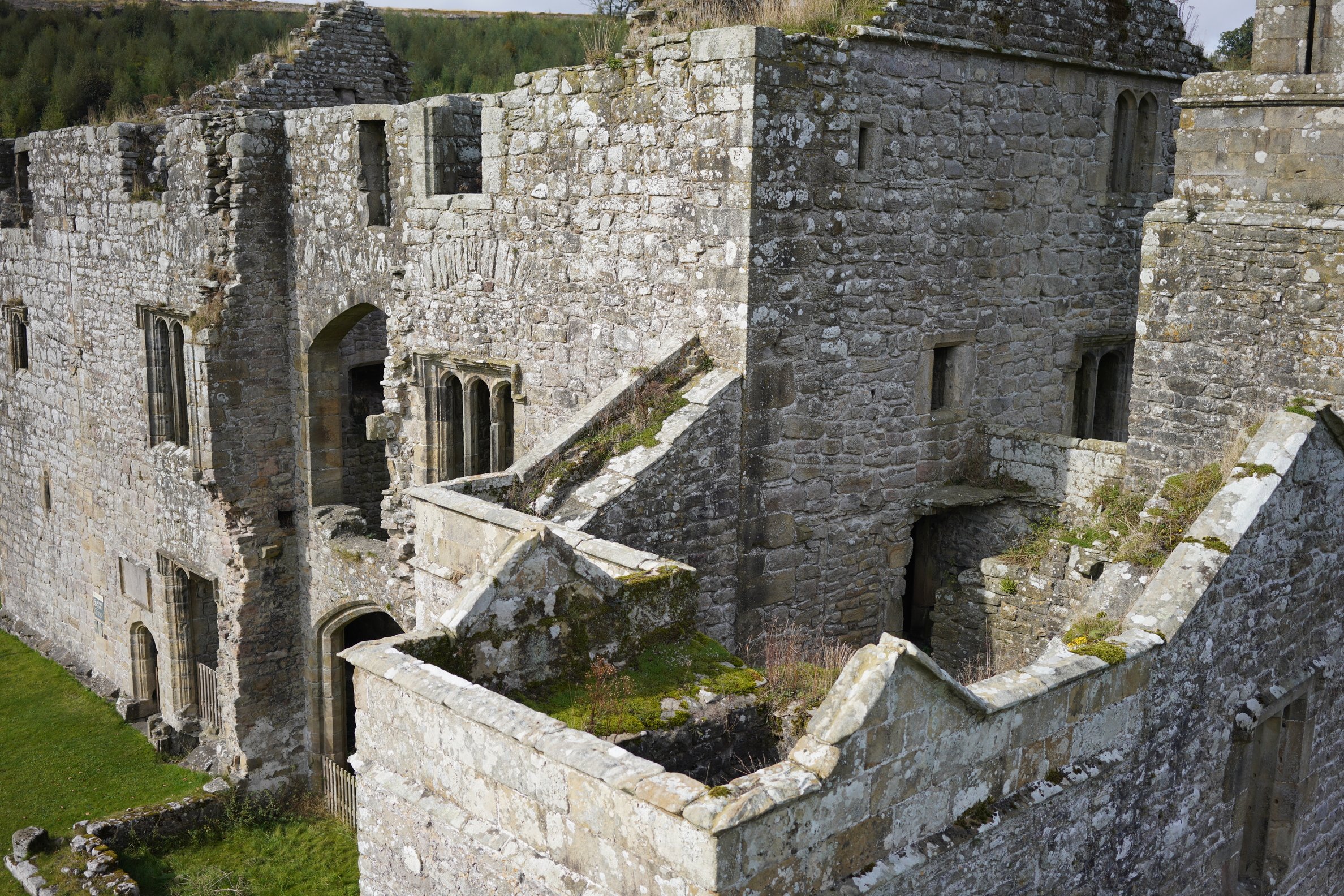
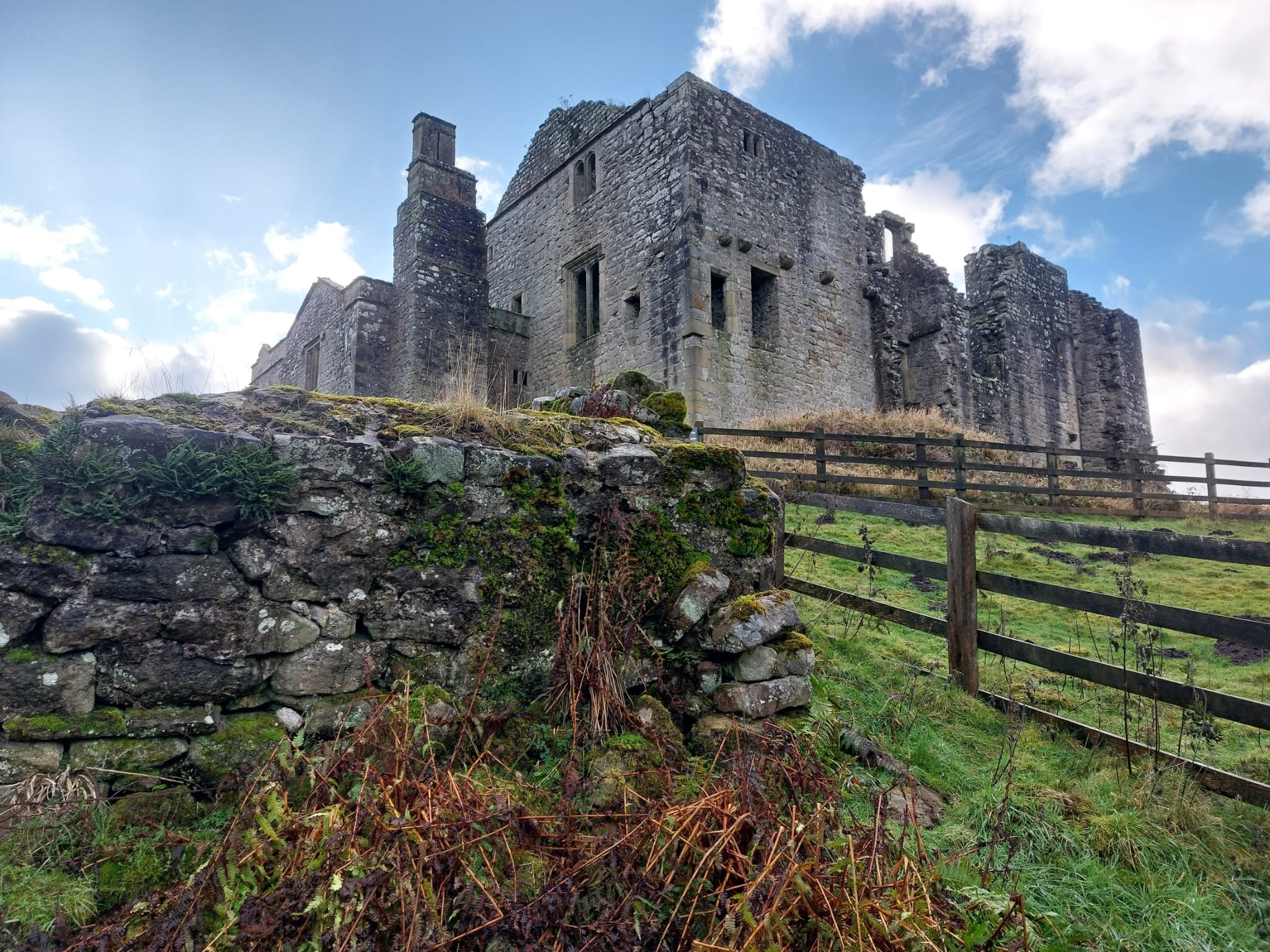
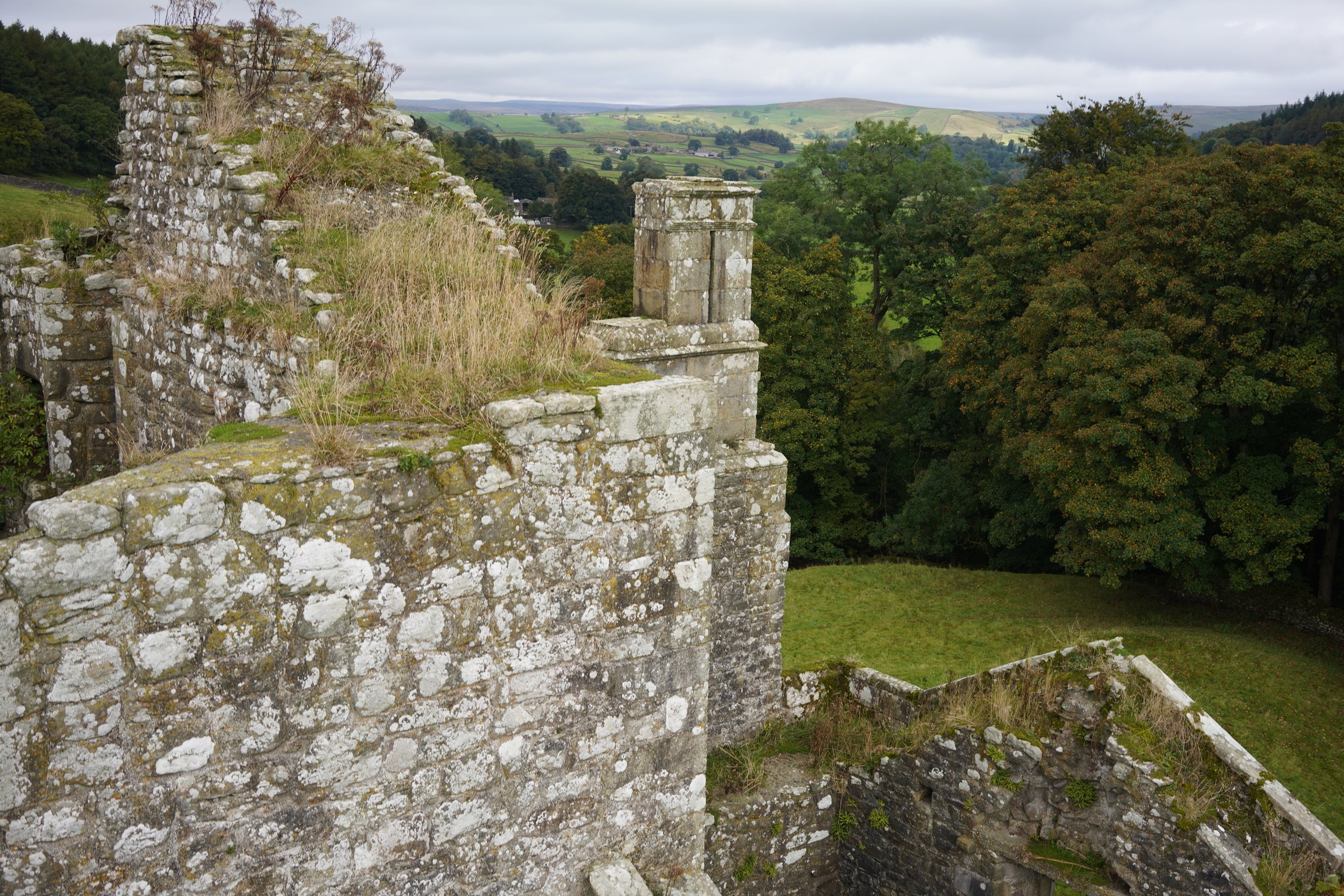
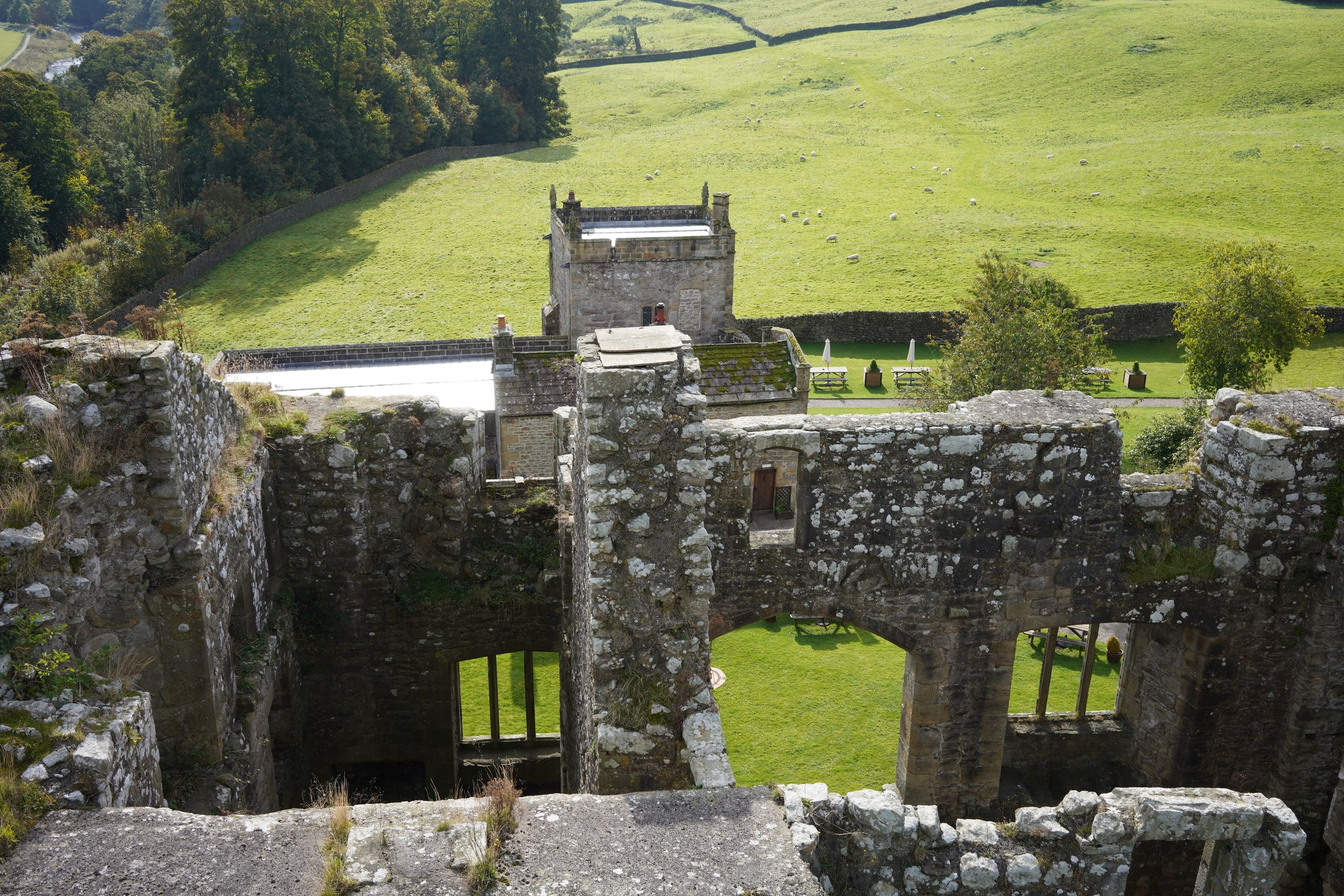
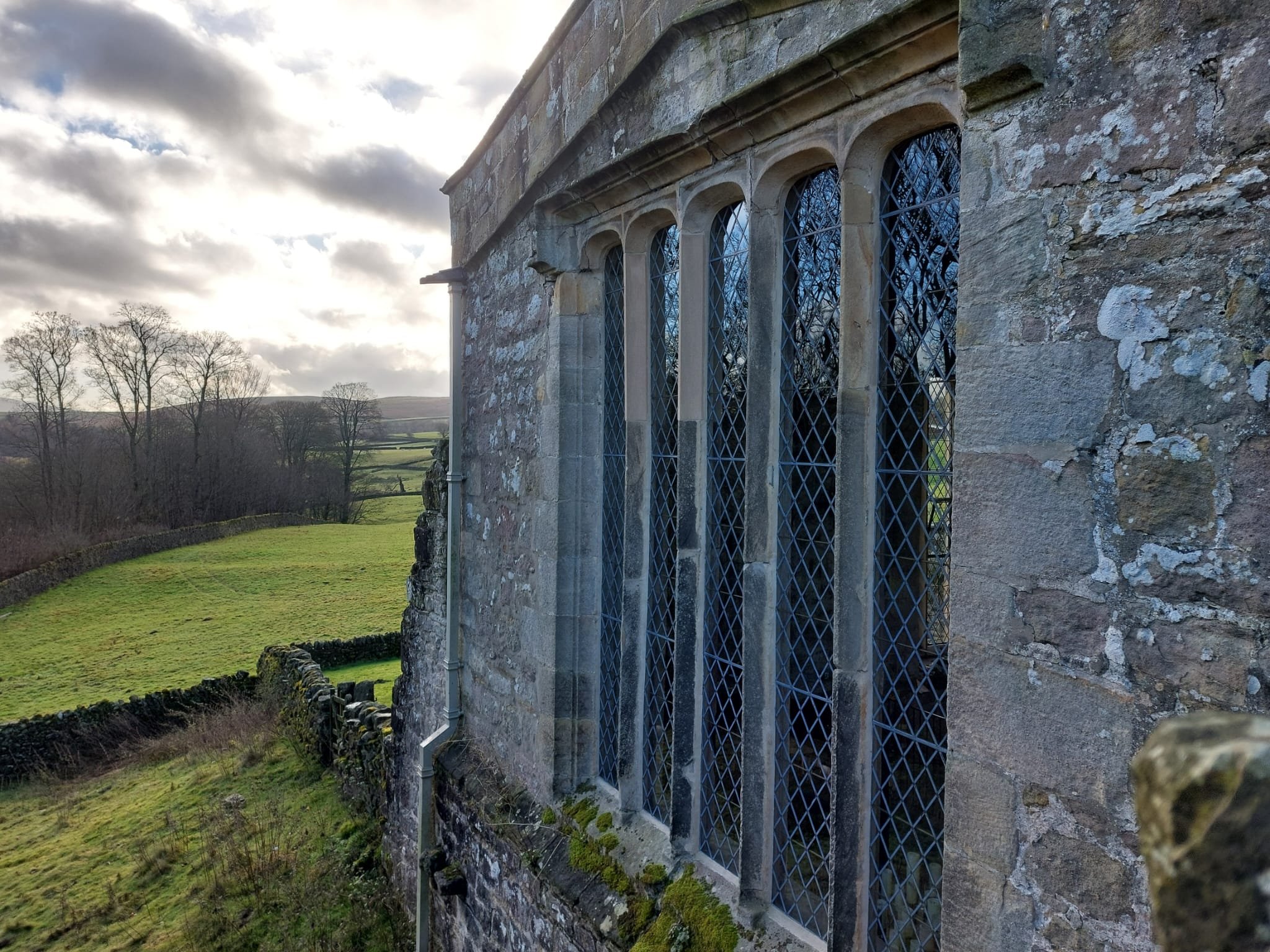
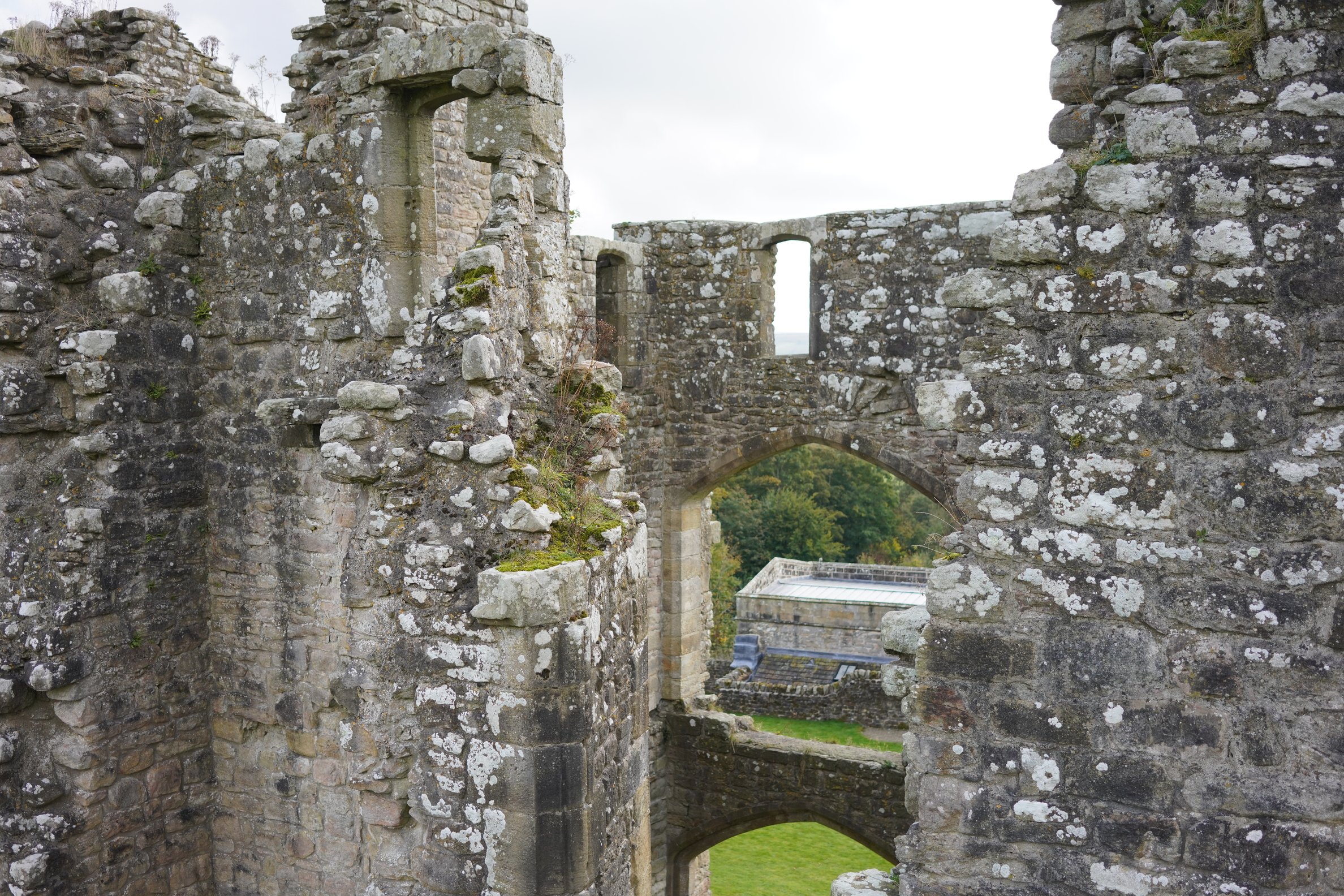
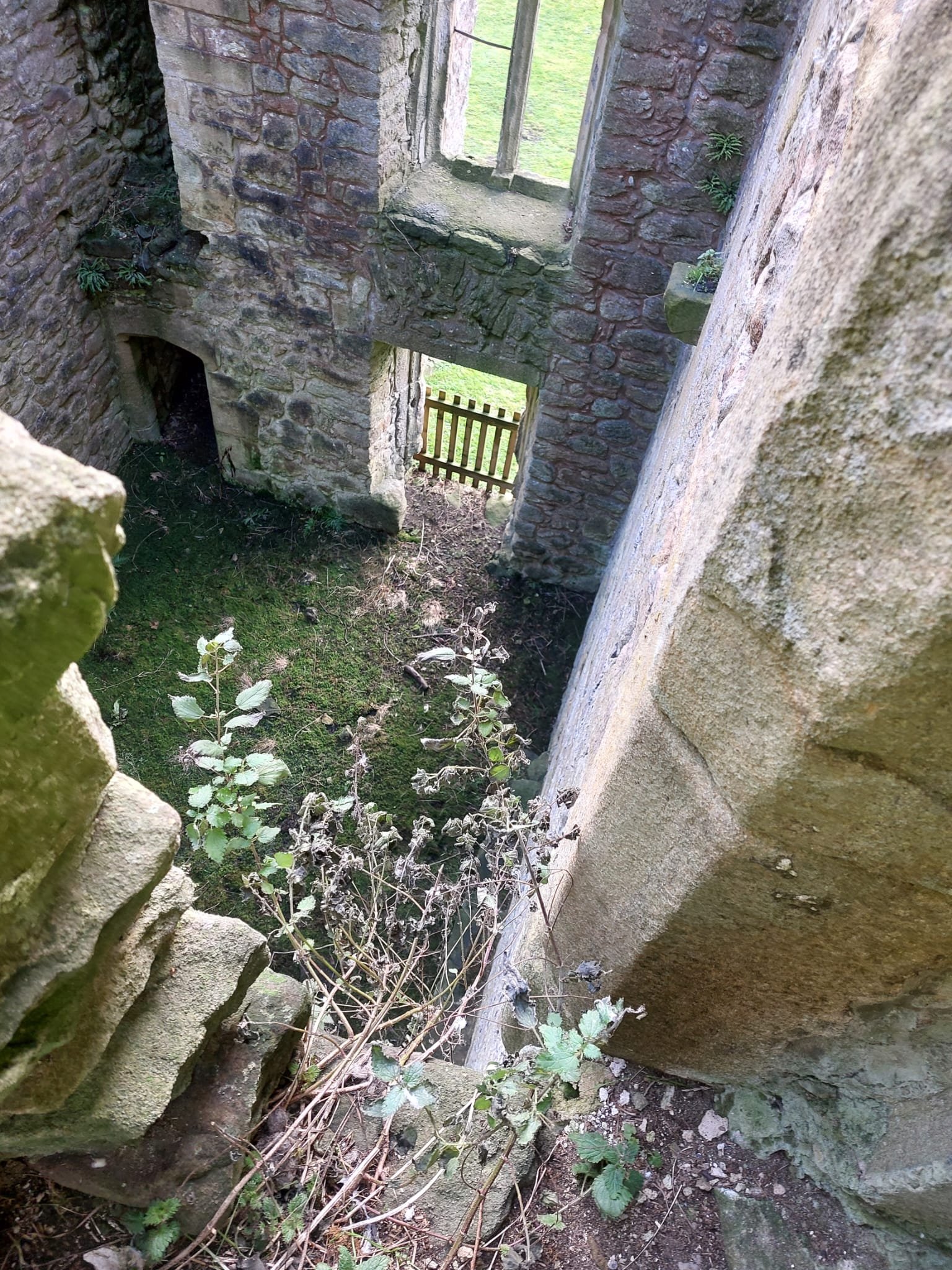
PLANNING CONSENT: Paragraph 84, green belt
Shaw & Jagger Architects has recently gained planning consent on a Paragraph 84 dwelling within the West Lancashire green belt. The rigorous approach taken by the design team throughout the design process meant that the approval was granted at Planning Officer level via delegated powers which is very rare for this type of application.
Thorough research into all aspects of the site allowed a comprehensive and well-considered proposal that will reintroduce an osier plantation as the backdrop to a contemporary home for the applicants. The scheme is very much a synergy between landscape and building where the landscape takes centre stage resulting in a Biodiversity Net Gain figure of 106%. The design of the building evolved out of these landscape proposals and as such, sits harmoniously within its setting, utilising an advanced biomass heating system that will use on-site harvested willow in an approach that could act as a test case for domestic off-grid renewable energy production.
A clear narrative between site and building has led to a simple yet elegant building with a restrained material palette that flows from inside to out. In collaboration with Webb Yates Engineers, tree-like cross-laminated timber columns sit within a grid derived from the spacing of osier plants and provide an organic structure that supports a predominantly glazed façade. The columns are a continuation of the landscape and the open plan space at ground floor level and the glazed facade allow these structures to be read not only within the house but also as part of the wider landscape. This structural form in turn provides a springboard for the ceiling treatment as well as defining the form of both internal and external balustrading.
Viewed from the surrounding landscape, the impact of the house will change through the seasons as the willow is pollarded for harvesting, providing a bold architectural backdrop directly related to agricultural biomass production. Internally, the contemporary family home will remain as a dramatic architectural statement.


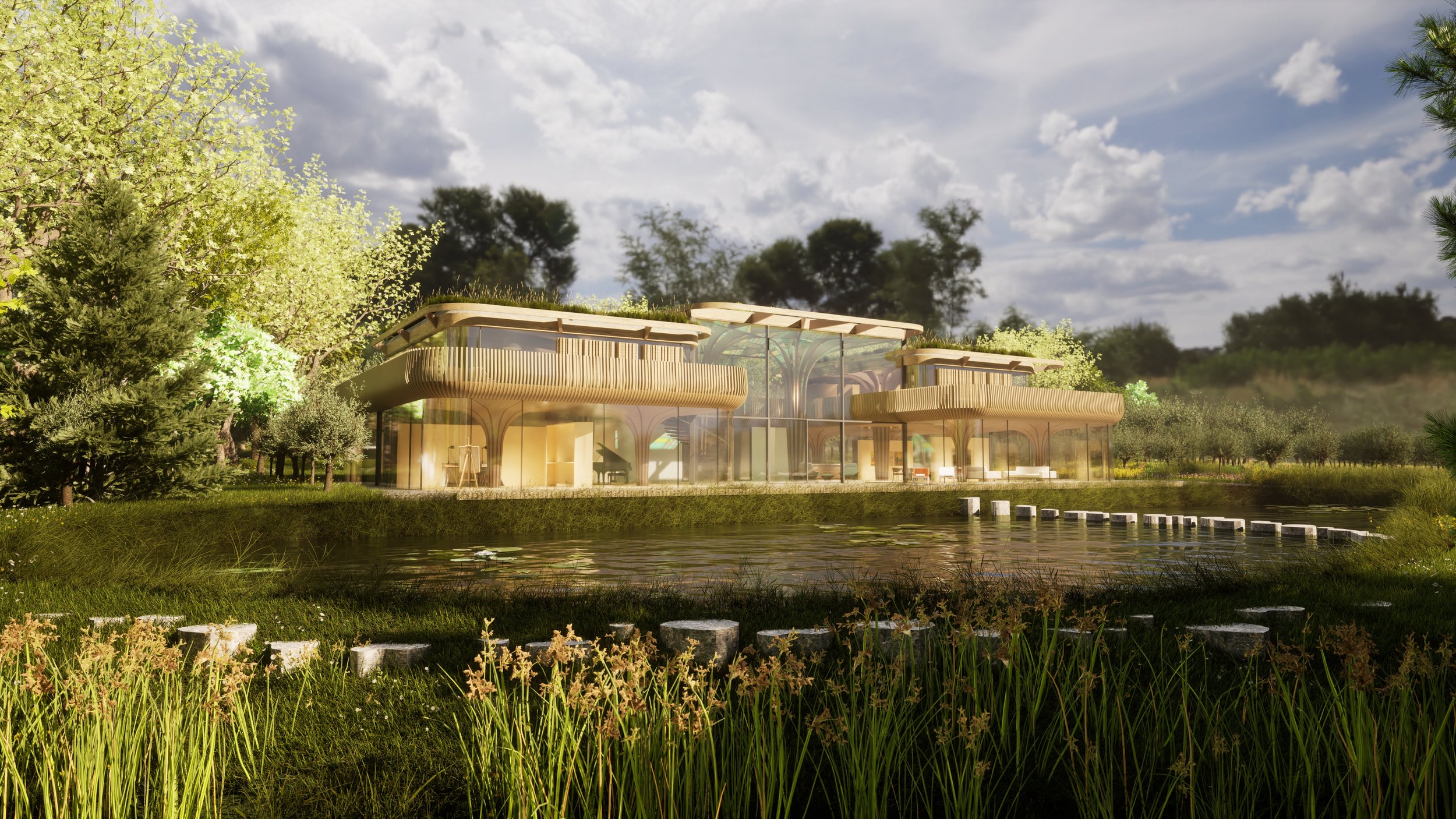

Re-Ordering Church Commission
We were recently appointed to complete a small re-ordering project to the tiny, yet perfectly formed St Peter’s Church in South Thornaby.
The church is Grade II* listed and dates back to the 12th century and has a Norman font.
A fascinating bit of history and legend is it was the place of supposed baptismal of Grace Pace, Captain Cooks mother. Previously it was named St Mary's, but was rededicated to St Peter ad Vincula after an early twentieth century renovation.
This delightful little church remains at the heart of the community, but as is common in ancient churches, there is a lack of facilities. We have been commissioned to look at some schemes to install a toilet and provide a small kitchenette and storage.
We drew up several options and await the decision from the PCC to decide which route they want to take!





PLANNING CONSENT: Paragraph 84, green belt and listed country park setting
Francis Shaw, of Shaw and Jagger Architects of Harrogate and Cheltenham, is delighted to announce the approval, by appeal, of a new neo-classical country house in Lancashire. Approved under the NPPF policy paragraph 84e, in green belt and sited next to listed parkland and heritage assets. This planning achievement is very rare. The national planning policy, Paragraph 84e and its predecessors go back to Lord Deben’s (John Gummer) Country House Law, PPG7 in 1997. Since then, under this policy exception, only around 150 houses have been approved. The vast majority of these are not in green belt or near a listed park with a major country estate. Shaw and Jagger Architects achieved the first large country house in green belt and as a paragraph 55 application (now paragraph 84).
The approved design, located in parkland outside of Blackburn. Is a fine neo-classical Villa based on the work of James Wyatt and Sir Jeffry Wyatville. The design is purist elegant Villa set in a purposely designed parkland. The house is approximately 20,000 sqft over three floors, the accommodation includes six bedrooms, drawing room, family room, a large kitchen and an orangery and swimming pool. There is a basement carpark and entertainment suite. Whilst the design had to meet stringent design standards, which are judged by an independent design panel, the substantial building also had to meet the very special circumstances required to pass the benchmark of a green belt exemption. Added to this was the listed parkland and heritage assets and the impact of the design upon the listed setting. The design panel deemed that the carefully designed landscape and architecture had met the very high standards required. Despite design of the new building meeting passive house requirements and the new landscape improving the Biodiversity Net gain by nearly 90% over 16 acres, Ribble Valley Council refused the application.
As such, the application was taken to appeal and the Inspector, Mr Dean, saw fit to approve the development. In his detailed, twenty-page, decision he states…
‘Indeed, it is clear from the substantial evidence of experts in the field that the design of the proposal, its orientation, scale, detail, proportions, relationship to its site, the wider context, size, scale, form and layout all represent the highest standards of architecture. These conclusions are wholly consistent with the well-reasoned and developed design rationale set out by the architect themselves.’
He further adds…
I accept that the proposal would result in a change to the area, but change is not analogous with harm. There is no compelling evidence before me to the effect that such a change would be harmful or otherwise unacceptable. I therefore find that the proposal would and could be successful as a piece of new traditional architecture, with its well-reasoned and well-considered approach to its site and surroundings. This exceptional quality design would raise standards of design in rural areas, by demonstrating the depth of thought, reasoning and background needed to deliver such quality.’
‘The proposal then, offers an unusual combination of traditional, classical appearance and architecture particularly in terms of scale, appearance, proportion (including the amount of glazing), with traditional finishing materials, and a modern, forward-looking approach to built-in energy-efficiency and sustainability. This adds weight to my conclusion that the proposal reflects the highest standards of architecture, successfully marrying the traditional and the modern, and in doing so would raise standards of design in rural areas.
History does not sleep, and whilst the proposal would be a change in the site, it would not remove the ability to understand the history to the site, and indeed, the history of change across it. I have found above that the proposal is not inappropriate development in the Green Belt, that its design is of exceptional quality, it would not harm the character and appearance of the area, would not harm the historic environment, that the site is a suitable location and that there would be no harm to the natural environment.
The proposal sits within, and continues the English country house tradition, and in particular, the Lancashire expression of it, in a landscape and area, which although of value, has nevertheless been subject to and will continue to be subject to change. I have found that the proposal, including its exceptional quality of design is appropriate change in that context.’
The inspectors detailed analysis and justification will no doubt be used by design teams to aid justification for other projects as this permission is something of game changer in planning history. Shaw and Jagger Architects are pleased to add yet another Paragraph 84e achievement to their long list of successes. Francis Shaw added, “we are often employed to do the tough projects, the projects that others do not want to take a risk on. It takes a lot of hard work, research and above all a great team, to make a success of these projects. They are not for the feint hearted and we always advise clients of the risks, but we are most often successful.”
Planning and Listed Building Consent Granted at Robin Hoods Bay
We are thrilled to announce that we have successfully obtained both planning and listed building consent for the proposed refurbishment and extension of a property in Robin Hood's Bay. This significant milestone marks the culmination of planning and extensive collaboration with the local authority and engineers, ensuring our design meets modern standards while respecting and preserving the historical integrity of the listed building.
Our proposal, developed through positive engagement was refined to align with local planning policies, includes a modest extension designed to enhance the existing structure while maintaining its historical character.
The approved plans involve utilising the existing footings of the conservatory to create a new kitchen diner. Historically, there was another building to the rear until it was demolished in the 1950s due to cliff collapse. However, in the 1960s, a new sea wall was installed and has recently undergone sea defence repairs. The conservatory, built in the 1960s/1970s, is overdue for renewal, and our proposal addresses this need while limiting the footprint.
The approved plans incorporate sympathetic materials and construction techniques that honour the original architecture, ensuring the longevity and preservation of the dwelling for future generations.
MEDIEVAL FLOOR DISCOVERED DURING SITE WORKS: ST MARY'S CHURCH, HUGGATE
We have had an exciting year so far at Shaw and Jagger with many more projects now starting on site as the weather improves.
One of our major projects is the re-ordering of St Mary’s Church in Huggate. This has included removing the old Victorian raised floor and fixed pews with a new insulated limecrete floor being funded by the NHLF with works being completed by Pinnacle Conservation Building Contractors.
During investigations and the removal of the floor, archaeologists have discovered multiple items of interest including an old gravestone dating to the 18th century as well as a hearth and remains of the medieval floor. We even discovered a carving of a ship behind old pipework.
We are now in the process of detailing a glass floor element to enable visitors and parishioners to enjoy this incredible find for many years to come.
SEASONS GREETINGS
This year has been a very busy one here at Shaw and Jagger. We have had Becky and John join the team who have been incredibly helpful in delivering lots of fantastic projects. Becky saw the completion of her degree and passing her driving test! Matt has become a father for the first time and so we have been enjoying lots of photos and even a visit. We had two big birthdays and lots of fun things inbetween.
Work wise, we have had multiple planning and listed building consents throughout the year, a combination of a lot of patience, hard work and engagement. We are looking forward to delivering some really exceptional schemes in 2024 both for the residential and ecclesiastical sector.
But now we wind down for Christmas, with our office closing from Friday 22nd December, reopening on 8th January 2024.
Wishing you all a very Merry Christmas and very happy 2024.
ON SITE: BLACKBURN CATHEDRAL STABILISATION AND RE-POINTING WORKS TO THE LANTERN TOWER
Blackburn Cathedral is a fantastic collective of 19th and 20th-century architecture. It’s central Lantern tower with its slim, and dominant spire is a hallmark of Blackburn The building is of local and national importance.
Louise is their Cathedral Architect and requested a detailed inspection following concerns raised during the Quinquennial inspection regarding the condition of the Lantern Pinnacles. A high level inspection was completed in Spring 2023 by Fogarty Steeple Jacks in association with Heritage Limited
The findings were that there were many open joints and some were beginning to de-stabilise. A long-term strategy will be required to re-build the pinnacles but in the meantime, a series of stabilisation works have been in the process of completion. This has included lifting and re-bedding the most vulnerable pinnacles with additional support. All open joints have been raked out and repointed. Additionally, the stained glass was bed in a cementitious mortar (quite unusual) and where it has been safe to do so, this has been removed and re-sealed with a flexible putty.
Works have been undertaken using specialist the same specialist Steeple Jacks and the work is a significant improvement and will help continue the longevity of this fantastic Cathedral.
PLANNING PERMISSION ACHIEVED FOR A NEW OUTDOOR KITCHEN AND SUMMER HOUSE
On the boundary of the Yorkshire Dales at the mouth of Wensleydale lies a series of small hamlets and villages that overlook Penhill, a beautiful and domineering hill.
We have been working with this client for some time recently completing a double extension and internal alterations and have now been granted planning permission for the next phase. The works include new garaging, an outdoor kitchen and summer house. The new bi-fold doors and opening will provide far-reaching views over to Penhill and the Wensleydale Railway.
We look forward to sharing photos once it has been completed!
PLANNING AND LISTED BUILDING CONSENT ACHIEVED FOR COUNTRY HOUSE
We are delighted to confirm a new planning and listed building consent has been granted for the conservation and alterations to a Grade II listed dwelling, designed by William Butterfield.
The project set in North Yorkshire, is a large dwelling built for the Estate Manager for the local Landowners Estate. The house has seen numerous unfavourable works completed over the years, including the removal of original stone mullioned timber windows for double glazed UPVC along with cementitious damp proof coursing and a lot asbestos although the main building form and out buildings remain largely unchanged.
The consented proposals include the conservation and repair works to the roof including the chimneys, as well as replacing the cementitious renders to the lower levels and localised stone repairs.
Internally the works include a new shower and bathroom, a new kitchen and back kitchen, opening up the living room and dining room and large doors leading to the garden which currently has very poor access. New paving and a new opening to the garden wall will also be completed in the coming months.
Many of the remaining original features will also be retained and restored including original fireplaces, wood panelling, skirtings, flooring and cabinetry in the pantry and larder.
We are looking forward to seeing this beautiful building brought back to life and lovingly restored.
Ferry Cottage Wins Design Award!
We are delighted to announce that our work on Ferry Cottage has just received an award for ‘good contemporary design’ by the York Design Awards.
About Ferry Cottage
Ferry cottage is within sight of the river Ouse and adjacent to a Grade I listed building, the new house adheres to the roof ridge height of its dilapidated predecessor but makes use of a single-storey element to extend the living space into the site.
This new family home is constructed using brick and zinc this home has high levels of insulation and makes use of high-quality materials and finishes both inside and out.
The house is highly energy efficient using ground source heat pumps as well as photovoltaic panels to compliment them. A large plant room in the detached garage connects to the house via the gravel vehicle forecourt. The fabric of the house is incredibly well constructed and finished to ensure the optimum performance of the renewable energy sources.

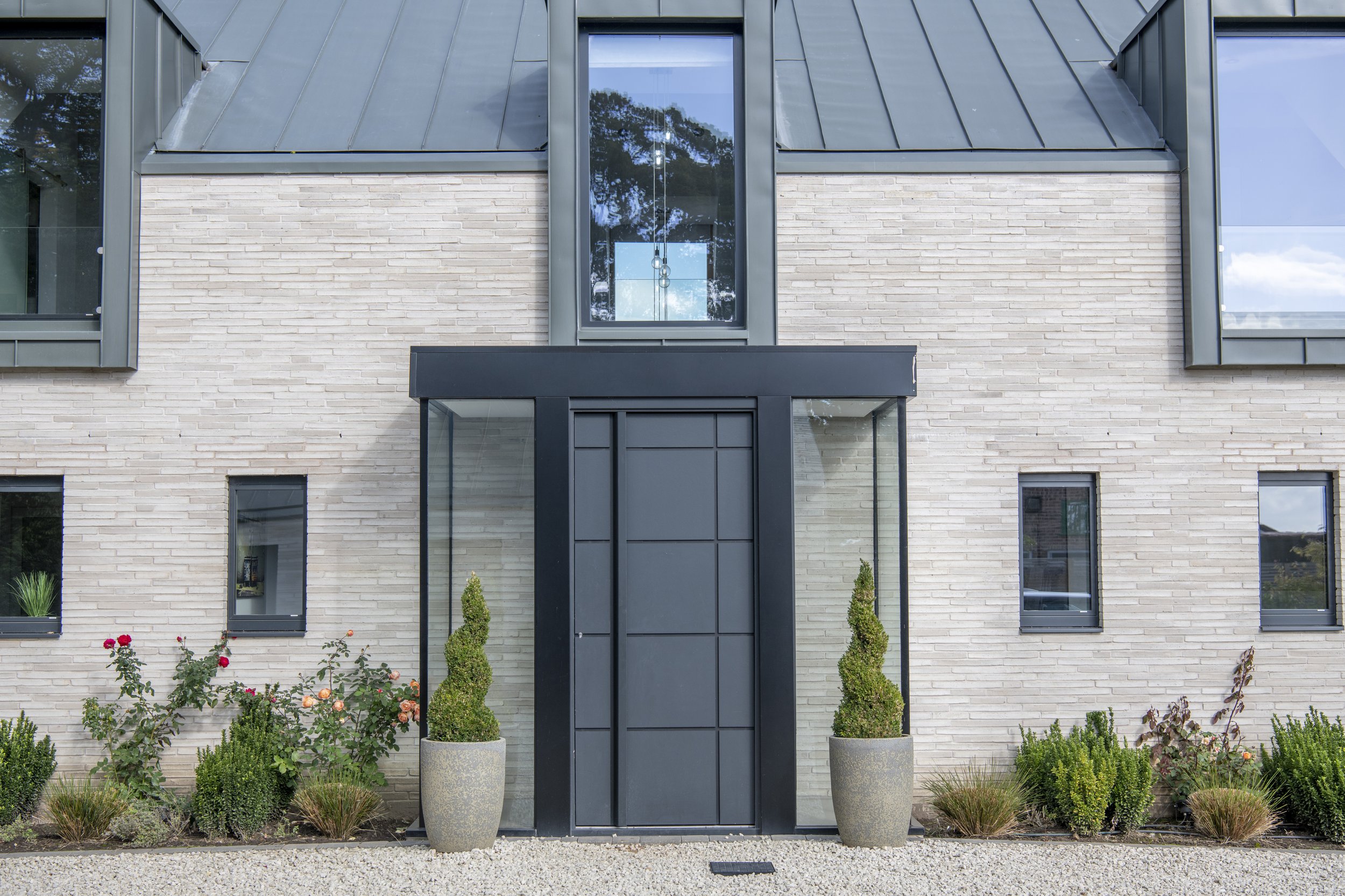
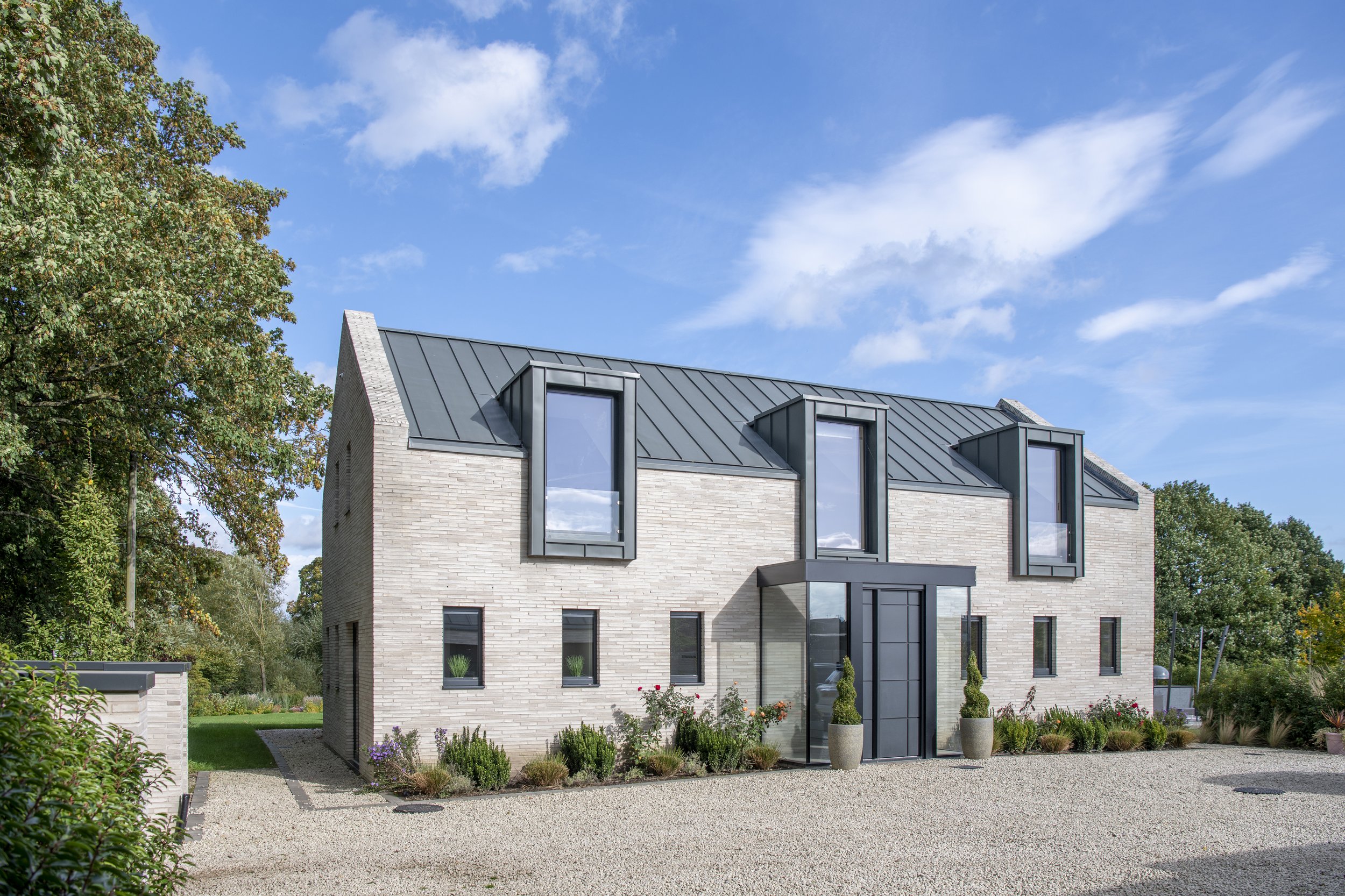
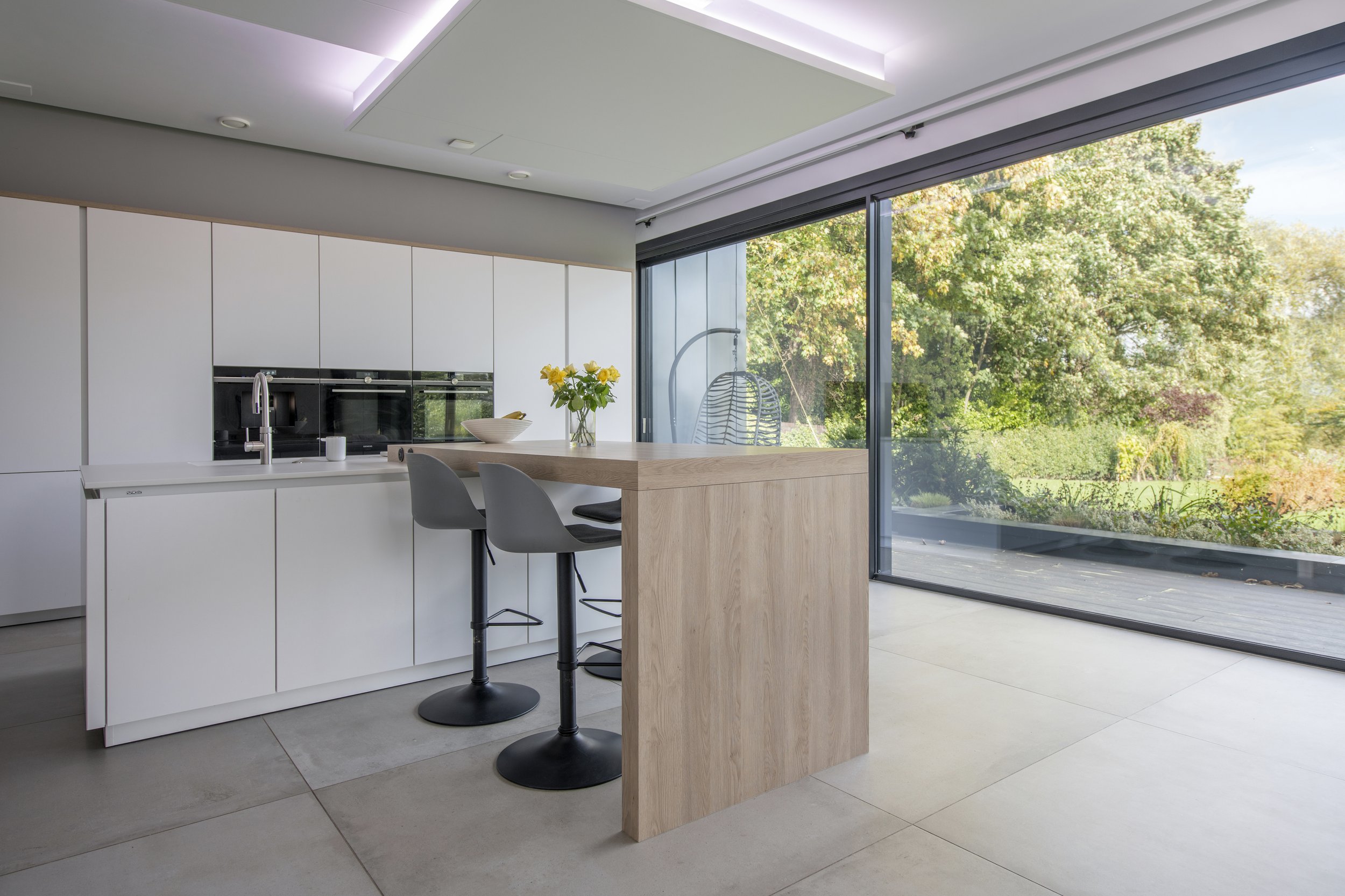

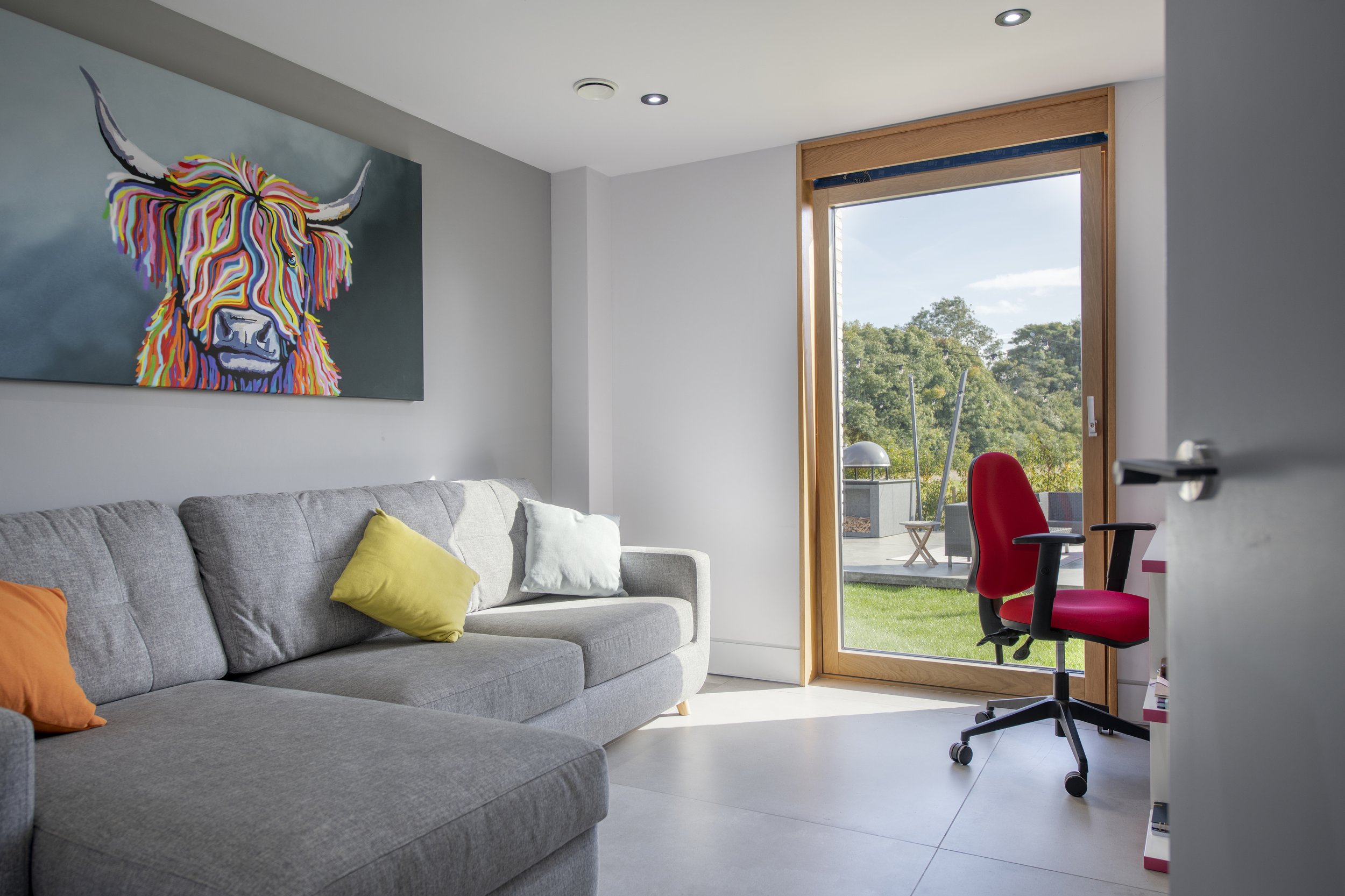
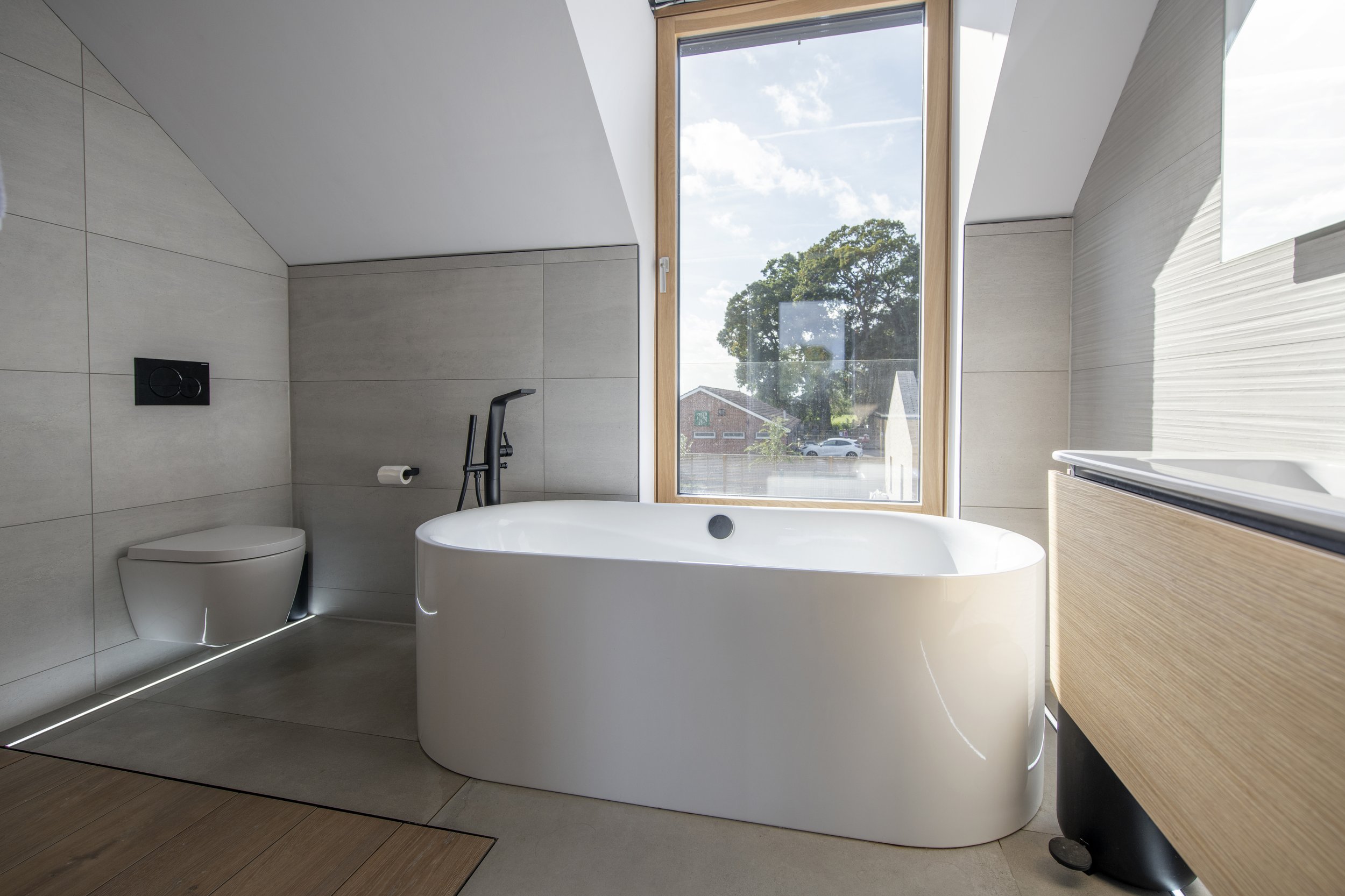
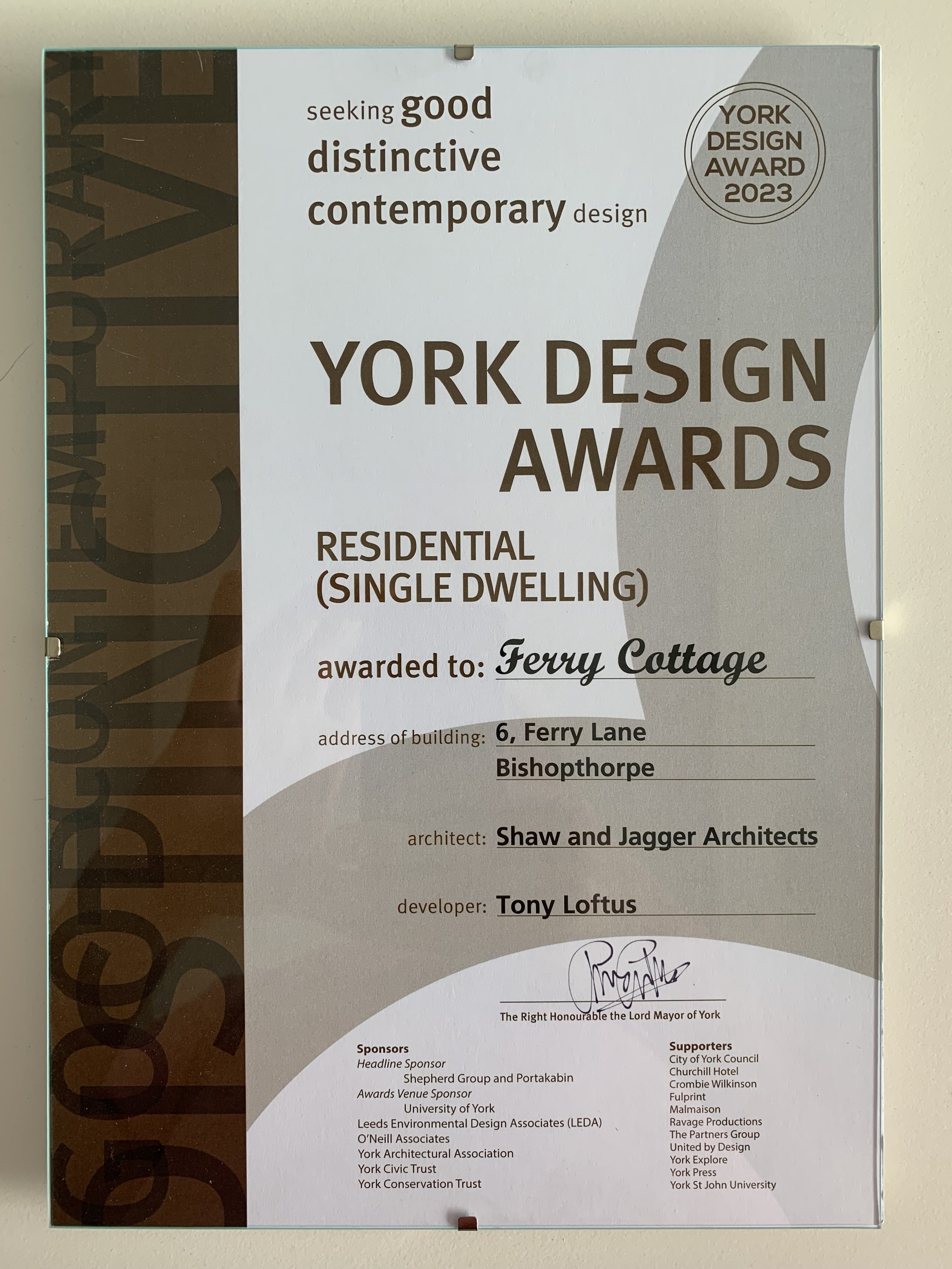
On site: St Andrew’s Church
Louise is church architect to St Andrew’s Church and following the Quinquennial Inspection (A survey required of all churches every 5 years) it was discovered that there were many open joints to the copings and to the tower. Over the next year a plan was put in place to undergo the necessary repairs.
The church is currently undergoing coping and roof repairs to its nave and chancel, as well as the tower being completed re-pointed. The two pre-reformation bells have been identified by bell specialist John Arthur as being cast by Johannes de Copgrave in 1399. Bells cast by him are found at Boynton, Grisby ex (Stockburn), here 2 bells, Luftus (recast 1811), and Scrawton, so 5 bells remain intact. What I find interesting is that the majority of these bells are within a confined area of North Yorkshire with a couple a little wider. He may well not have had a fixed base but may well have been an itinerant founder casting on site.Originally both bells would have had cast in wrought iron staple sfrom which the clappers would have been hung. Mr Clouston reported that the treble bells had had a staple “cemented” into position and I would add that from the holes in the crown of the tenor bell a “false” staple may well have been fitted at some time.
The works are being completed under a JCT Minor Works Contract by Pinnacle Conservation with Shaw and Jagger acting as Contract Administrators.
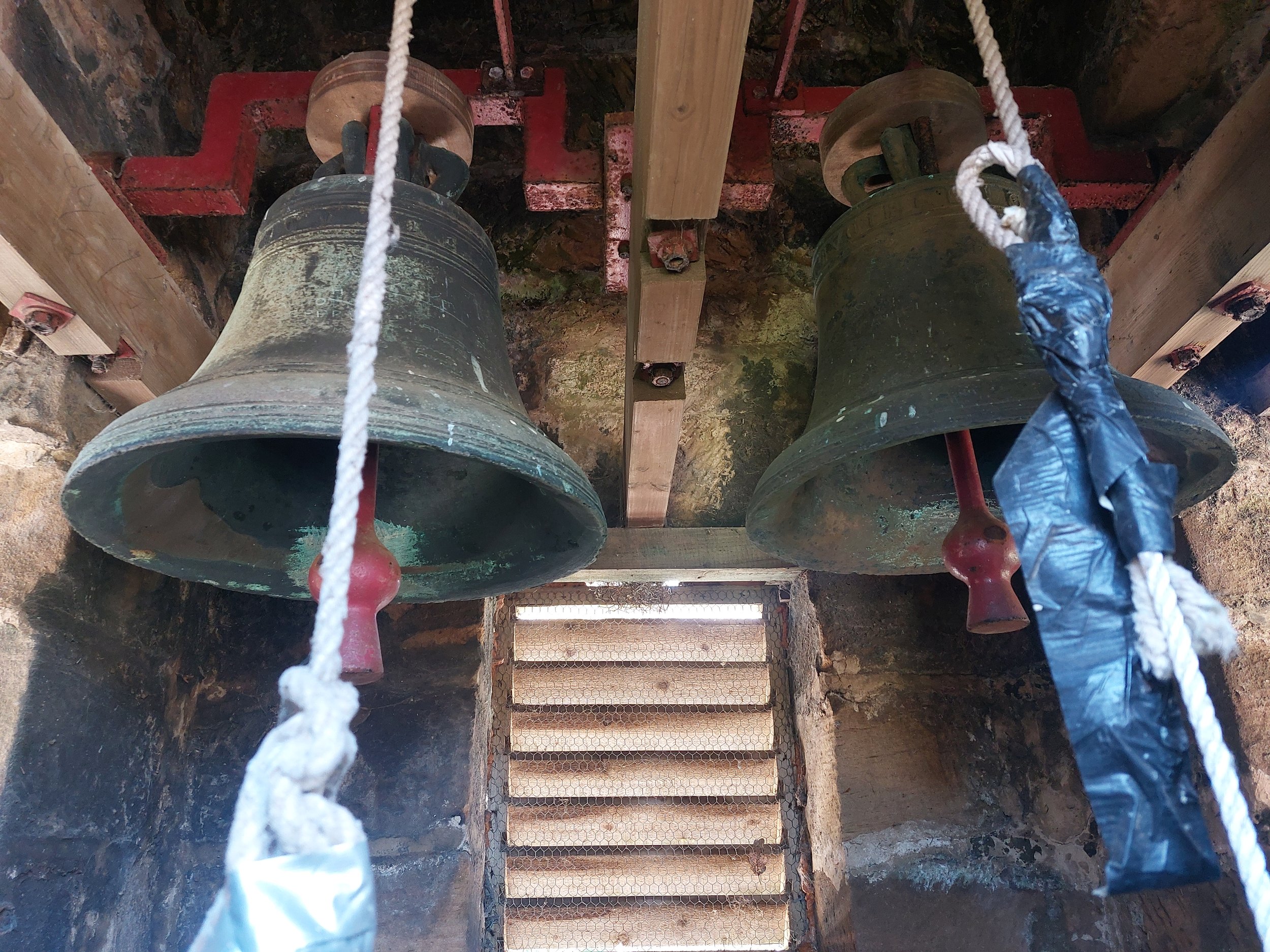
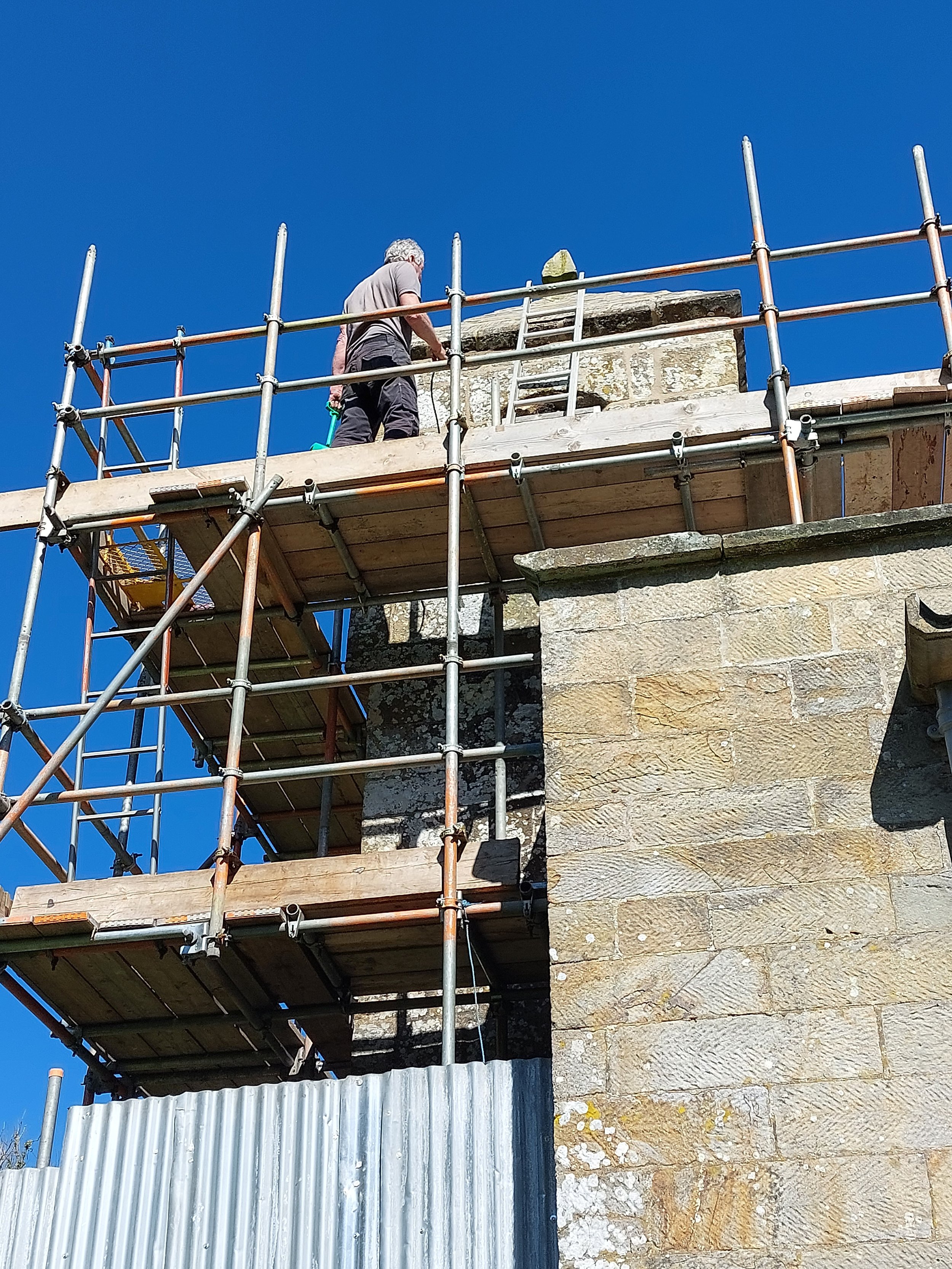
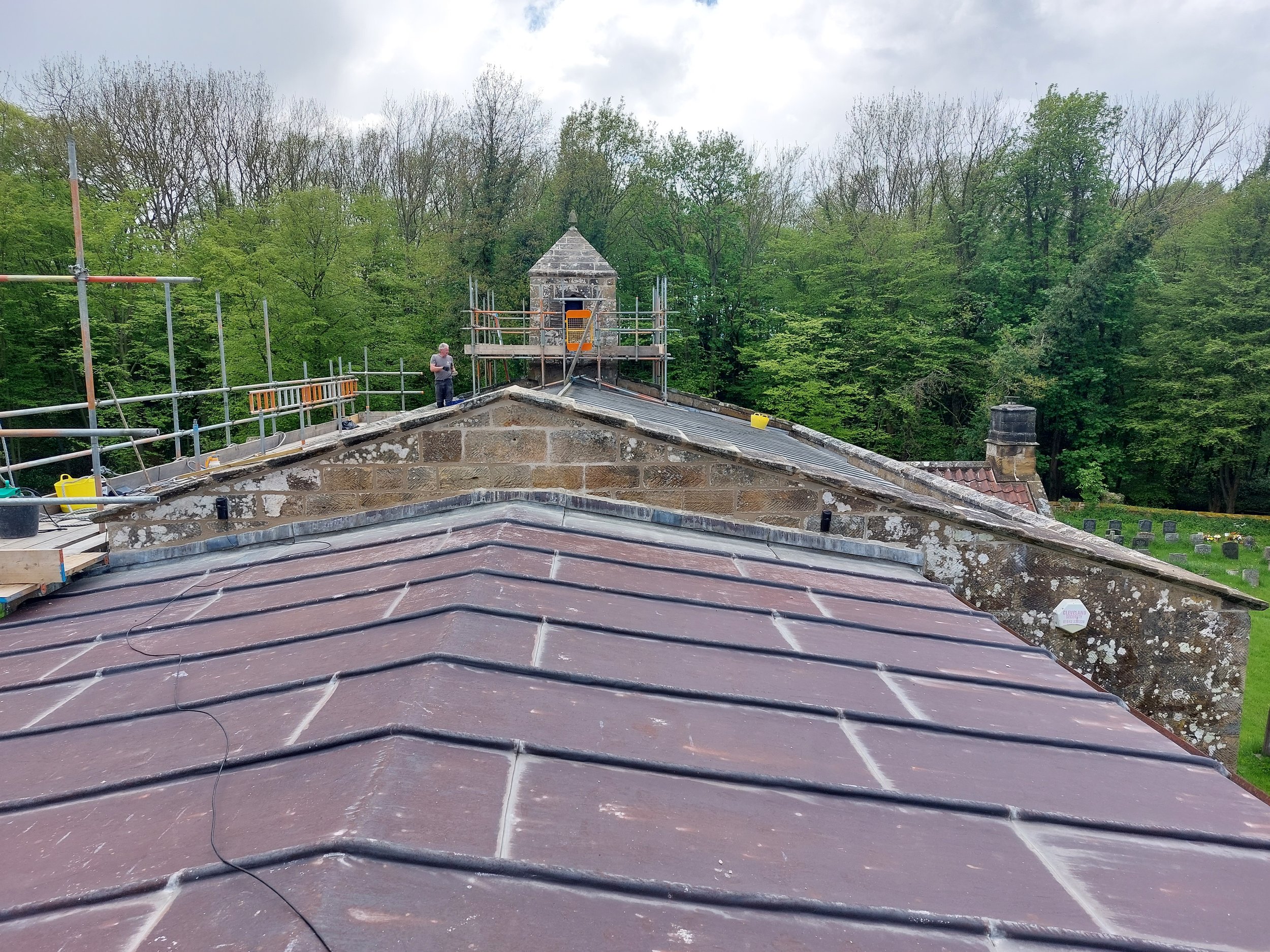
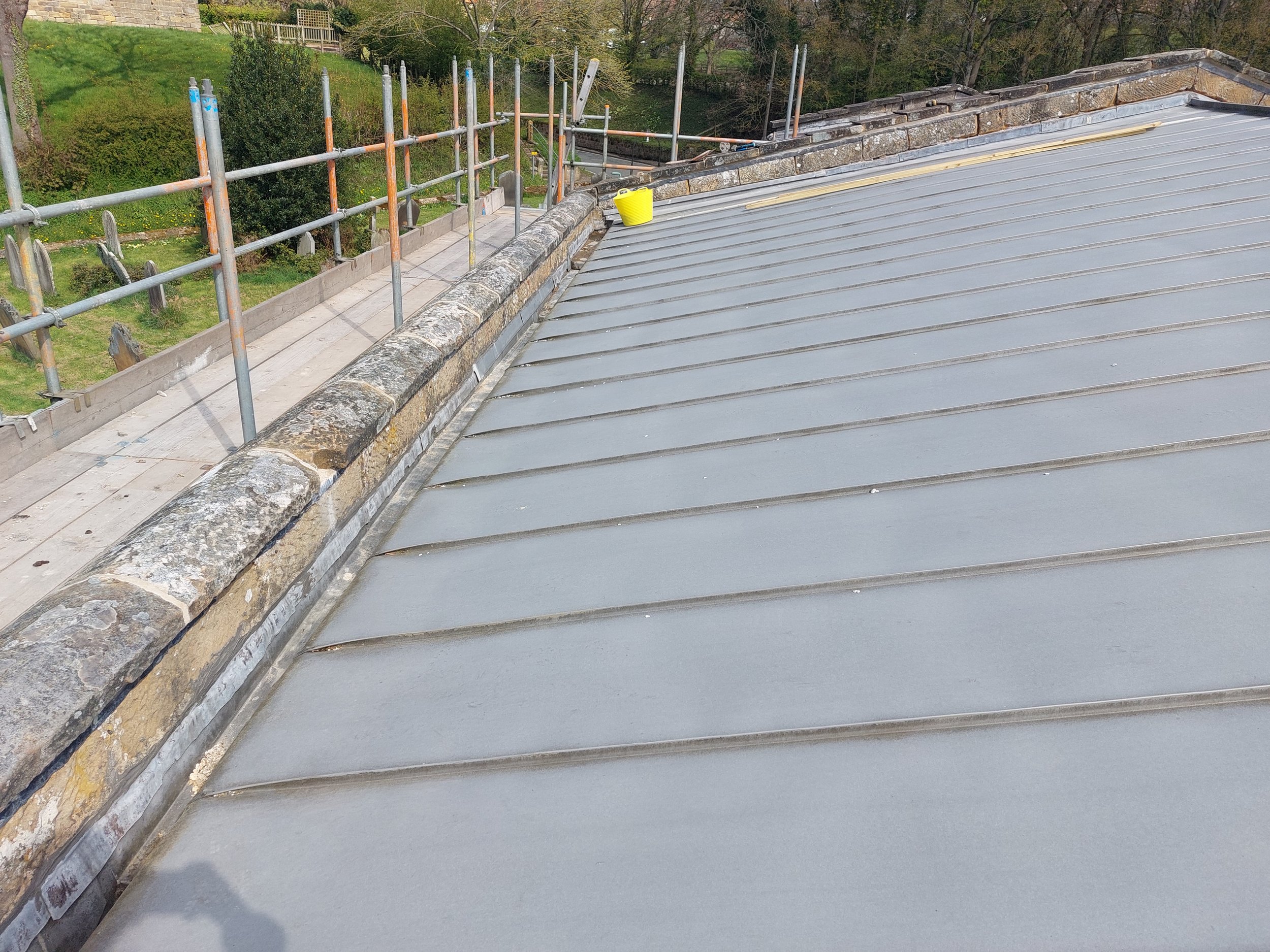
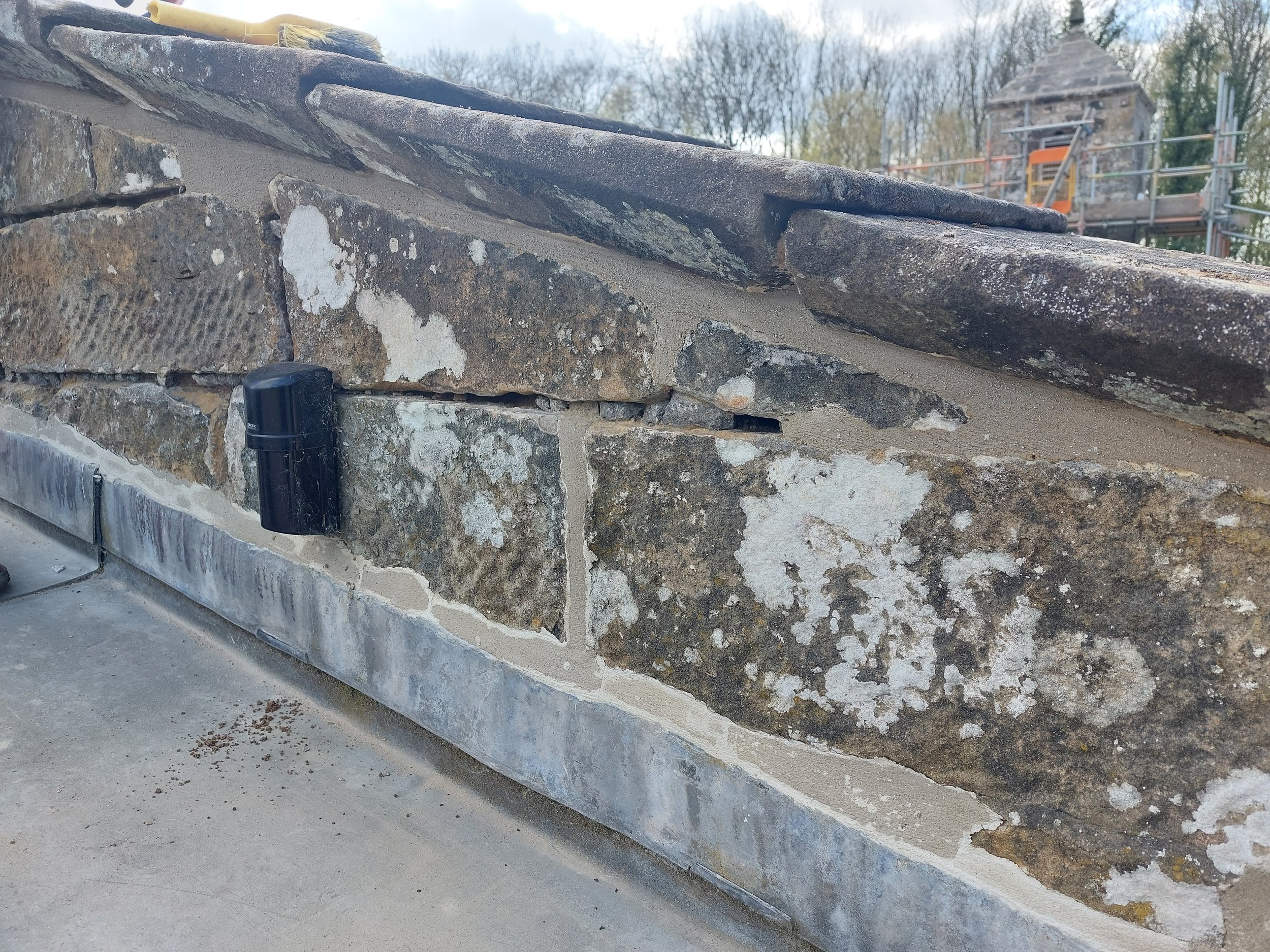
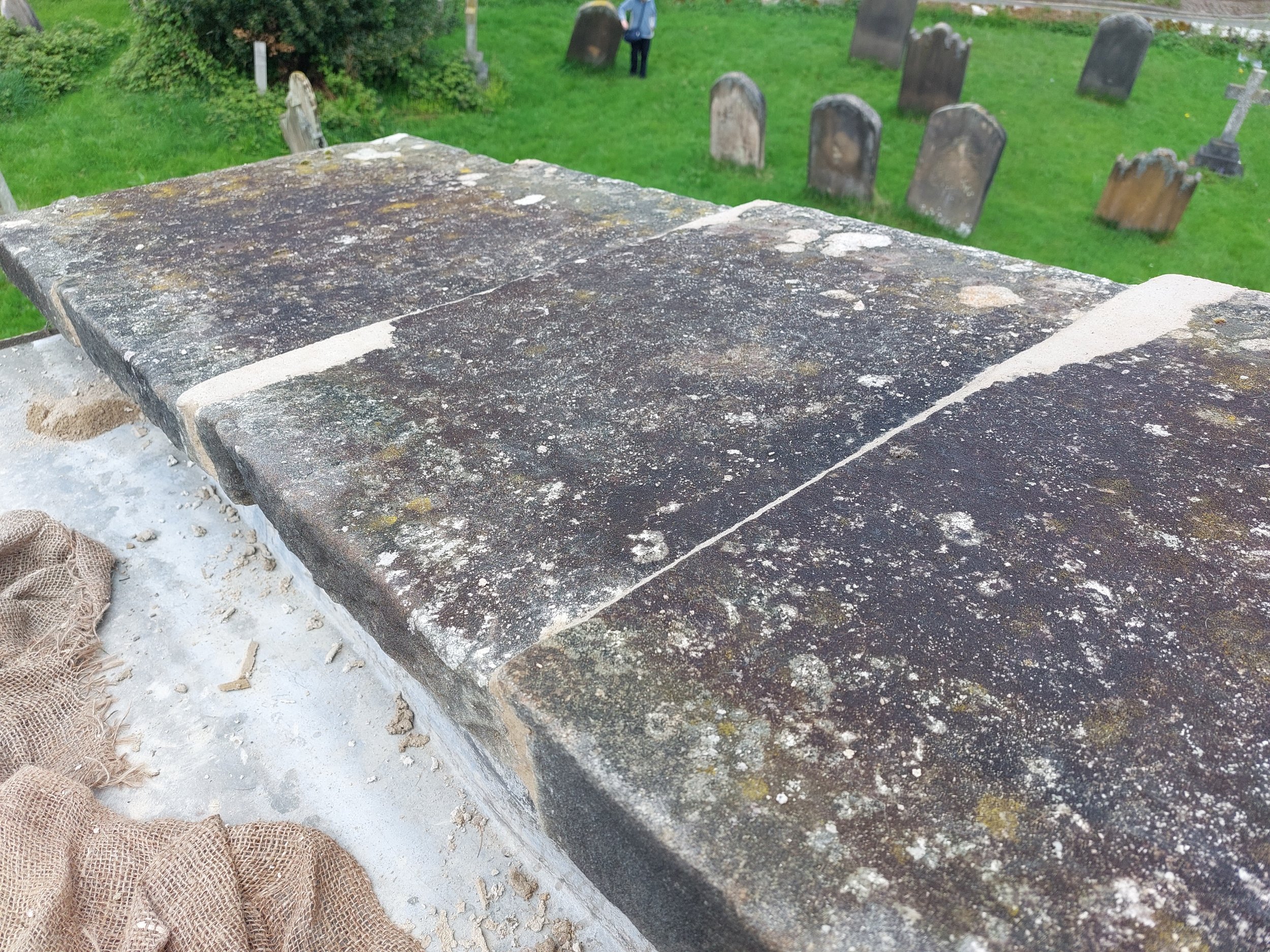
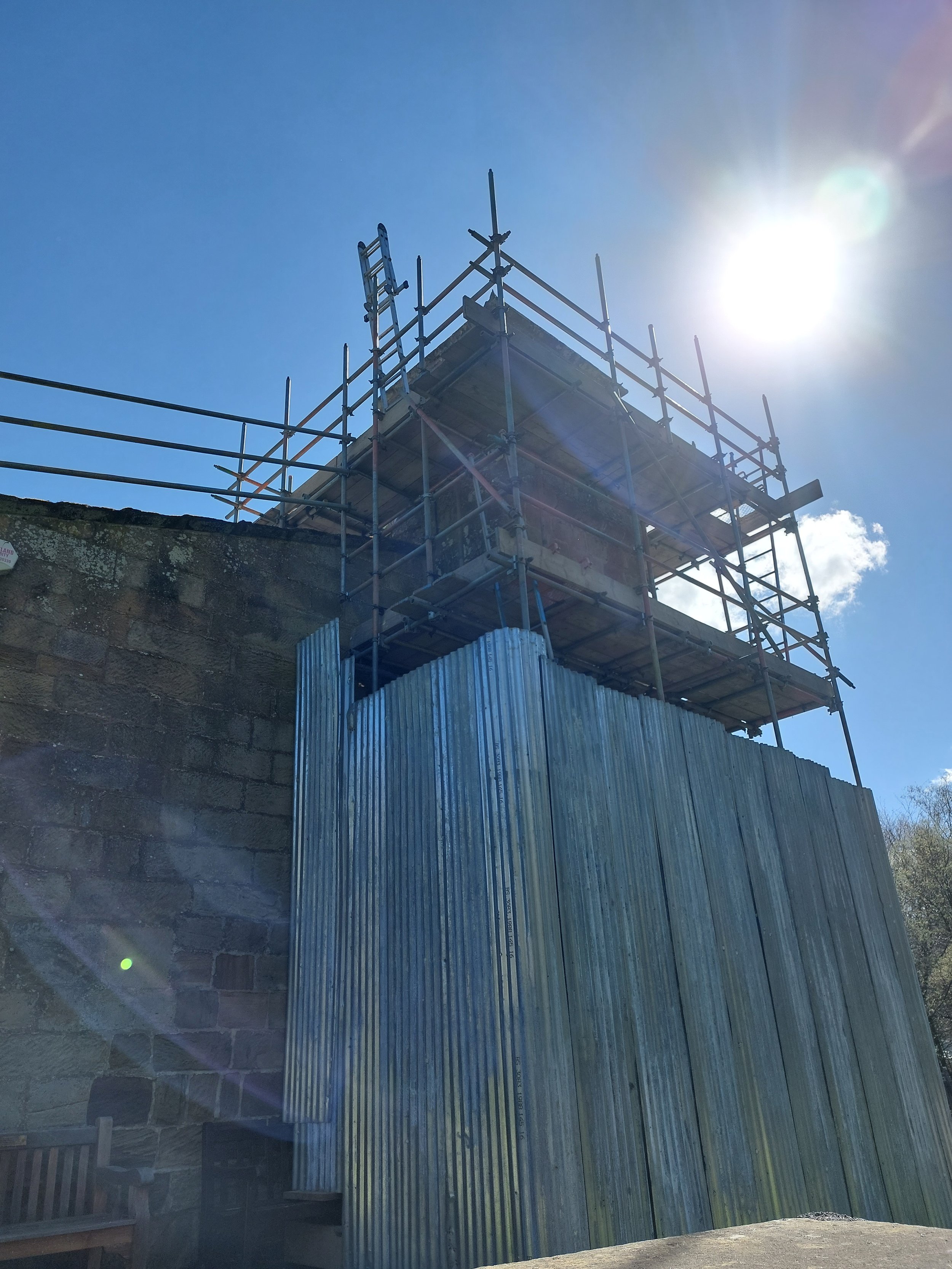
Lingholm Boathouse, Derwentwater
We had perfect weather for this months site visit to the new boathouse construction site at the Lingholm Estate.
Upon arrival the concrete reinforcement was all complete atop the piling mat and pile heads, and was waiting for the concrete slab pour in the early afternoon once the sun had moved behind the trees and cast some shade over the site. Despite having a tricky access arrangement the pour went smoothly with the assistance of a 20m truck mounted concrete pump. Six mixers later and the pour was complete and levelled off.
We cant wait to see the building move forward from this point with the base walls being completed in the coming weeks. The steel frame is currently in production and is due to arrive on site in just under a month, and we are currently working with the window and classing suppliers to follow suit. The next few weeks and months will be very exciting for this project.
New Dwelling Harrogate - COMPLETED
The new build 5 bedroom detached house which started on site in August 2017 is now complete and looks great! Externally the new dry stone boundary wall and landscaping create the perfect setting for this house which blends into the local vernacular with the use of stone and its modern elements really enhance it.
Features such as the stone detailing, large windows and balcony to the master bedroom are modern elements based on traditional methods which only a new build house can provide for a client. Internally the ground floor has stone flags throughout suitable for the underfloor heating. Simple bulkhead details in the ceiling help define spaces and add interesting features to the larger rooms. The kitchen dining area features a higher ceiling and larger windows, great for entertaining.
The ground and first floor are linked by a feature staircase with timber treads and glass balustrade. The timber used on the treads is used throughout as a floor covering with complimentary traditional style doors. The bathroom and en-suites are finished with modern low level shower trays and glass screens. A great project to be involved with and one which the client was extremely happy with the end product.
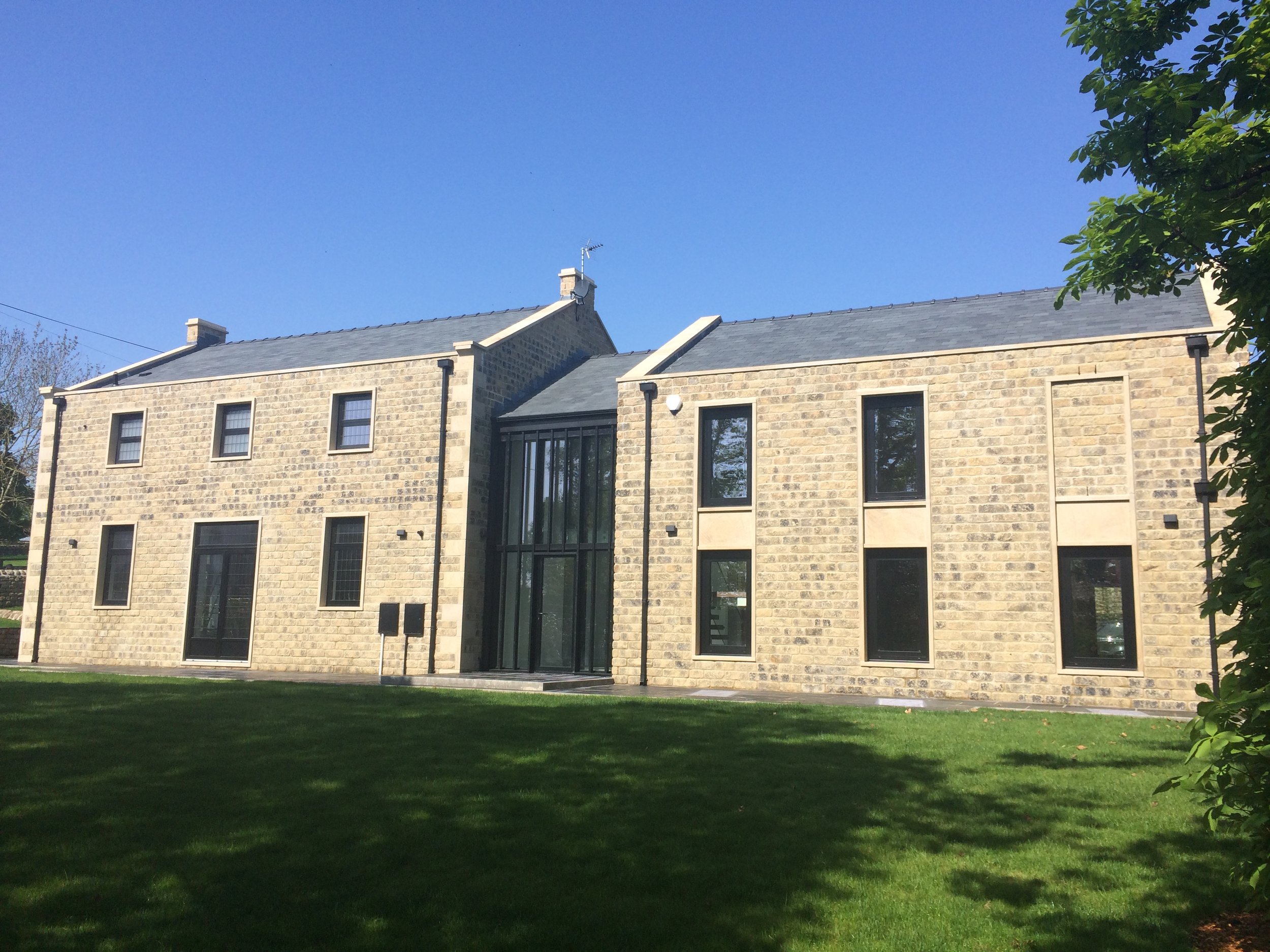


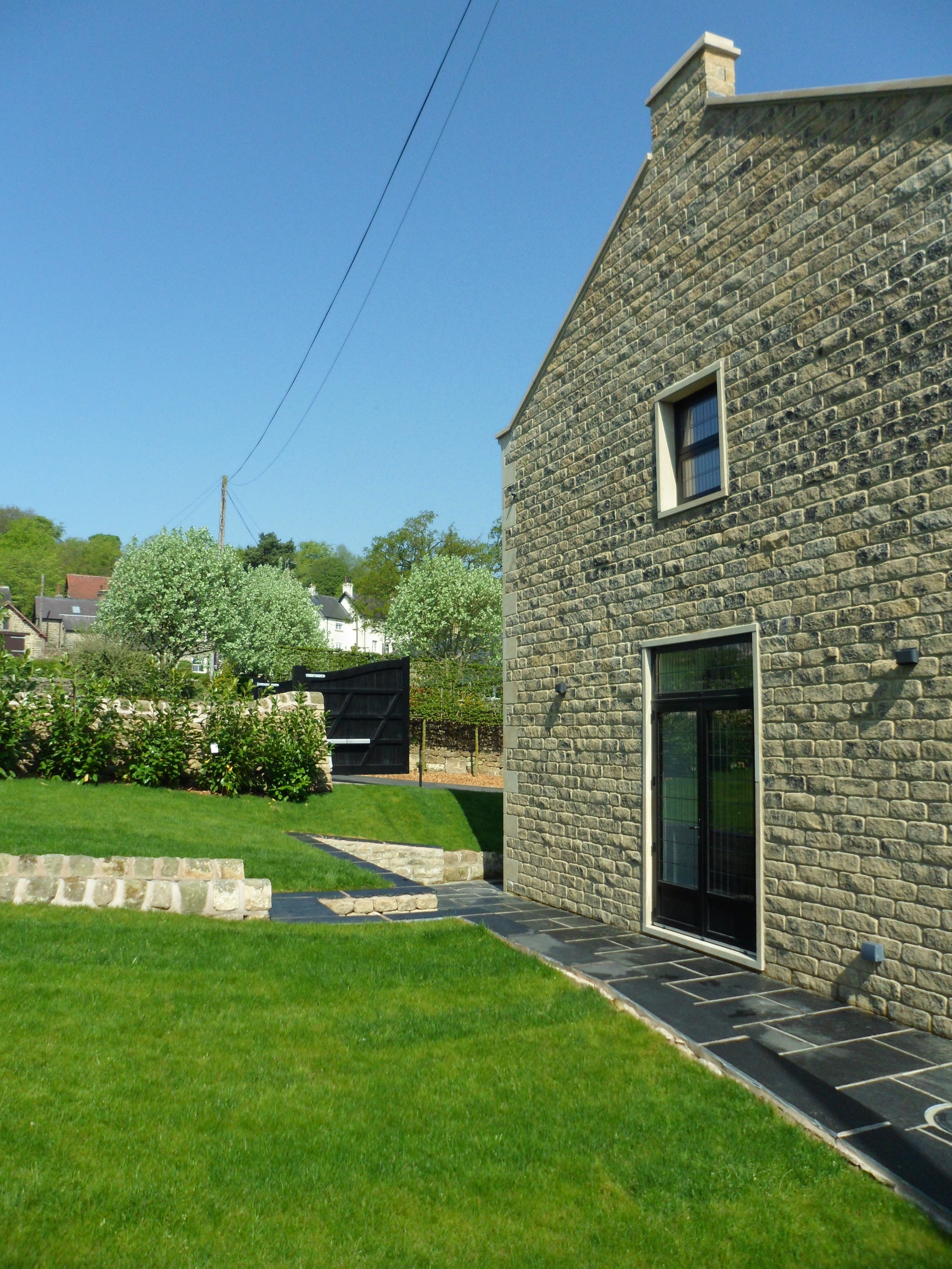
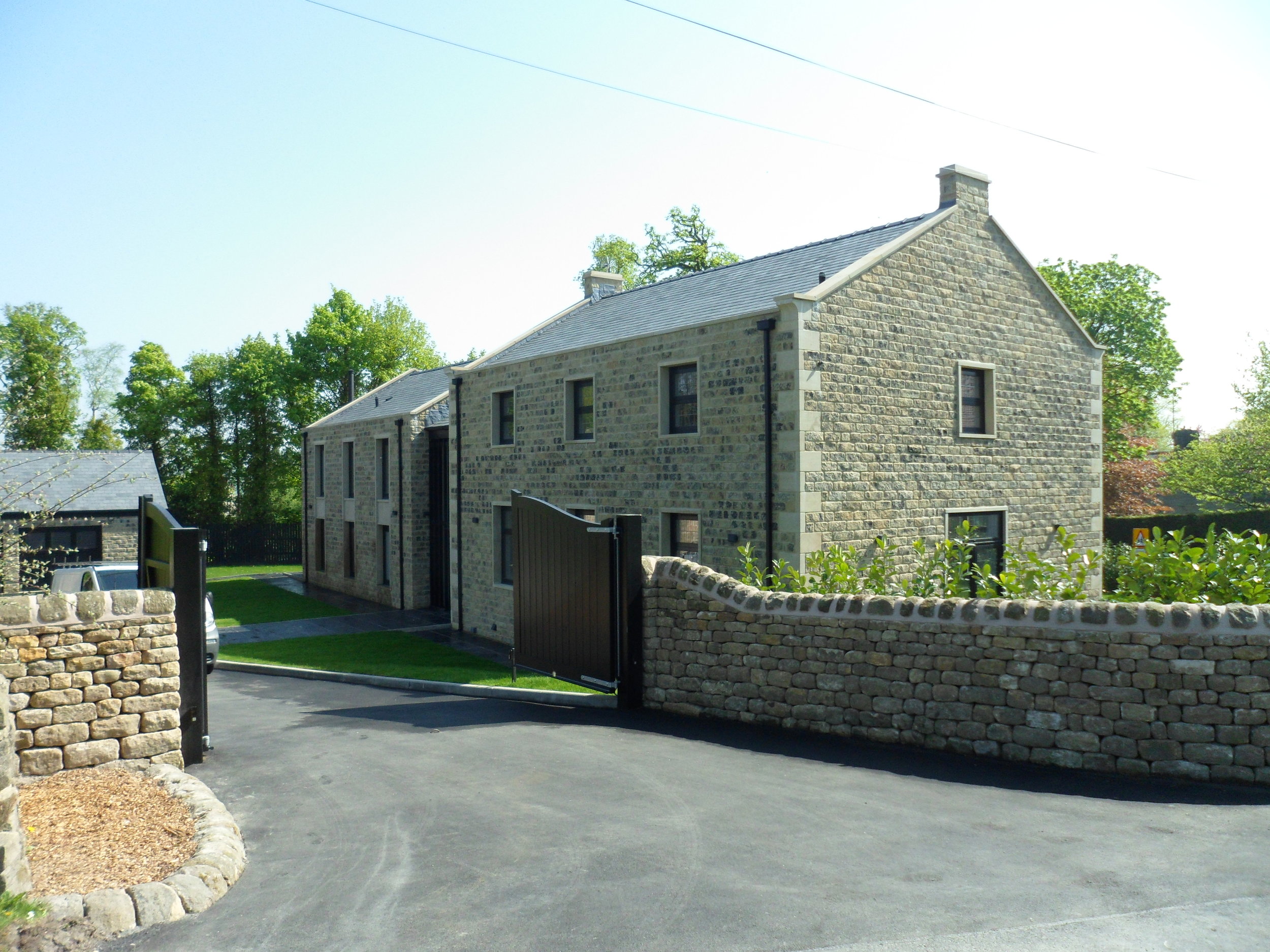

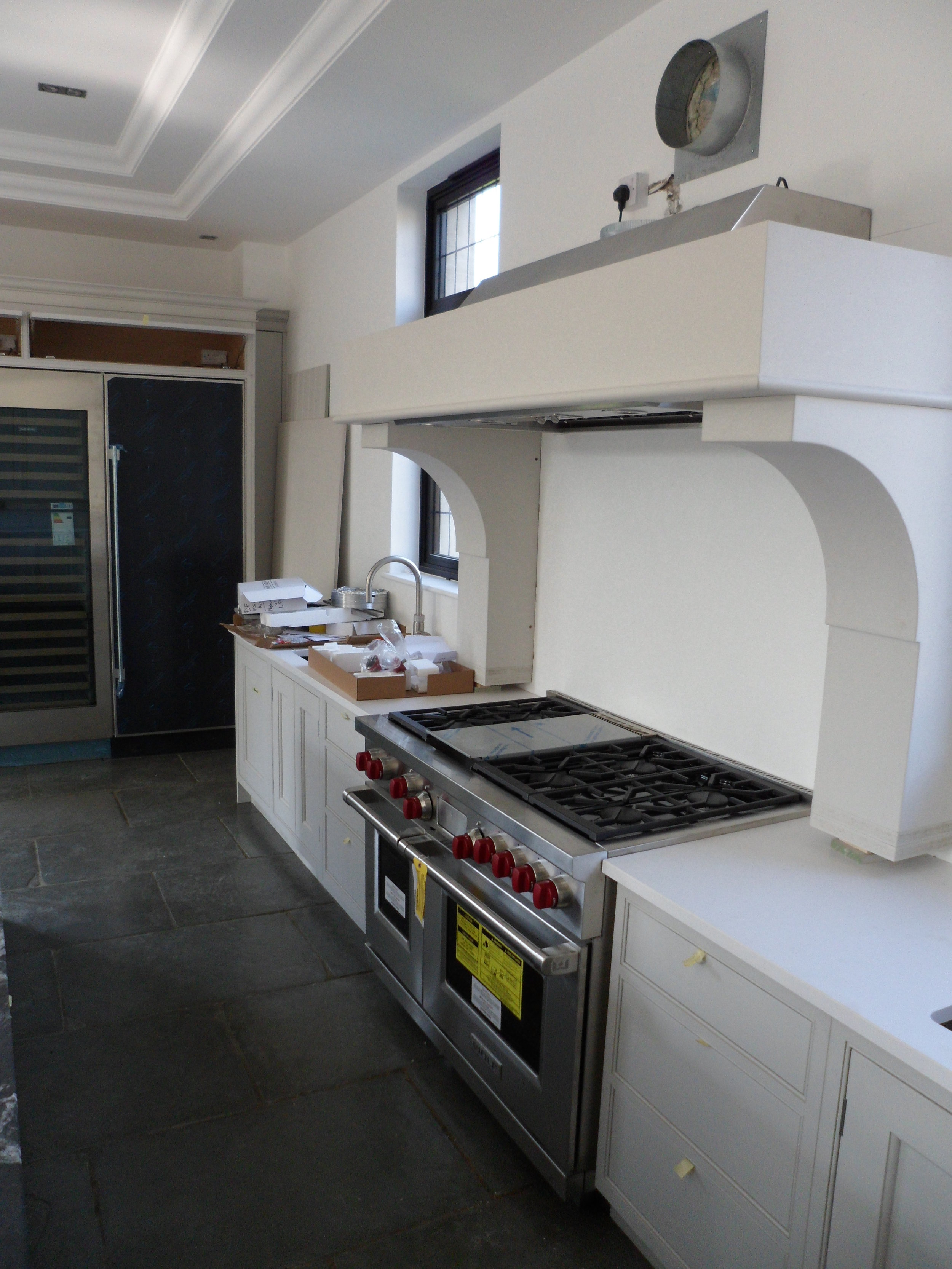

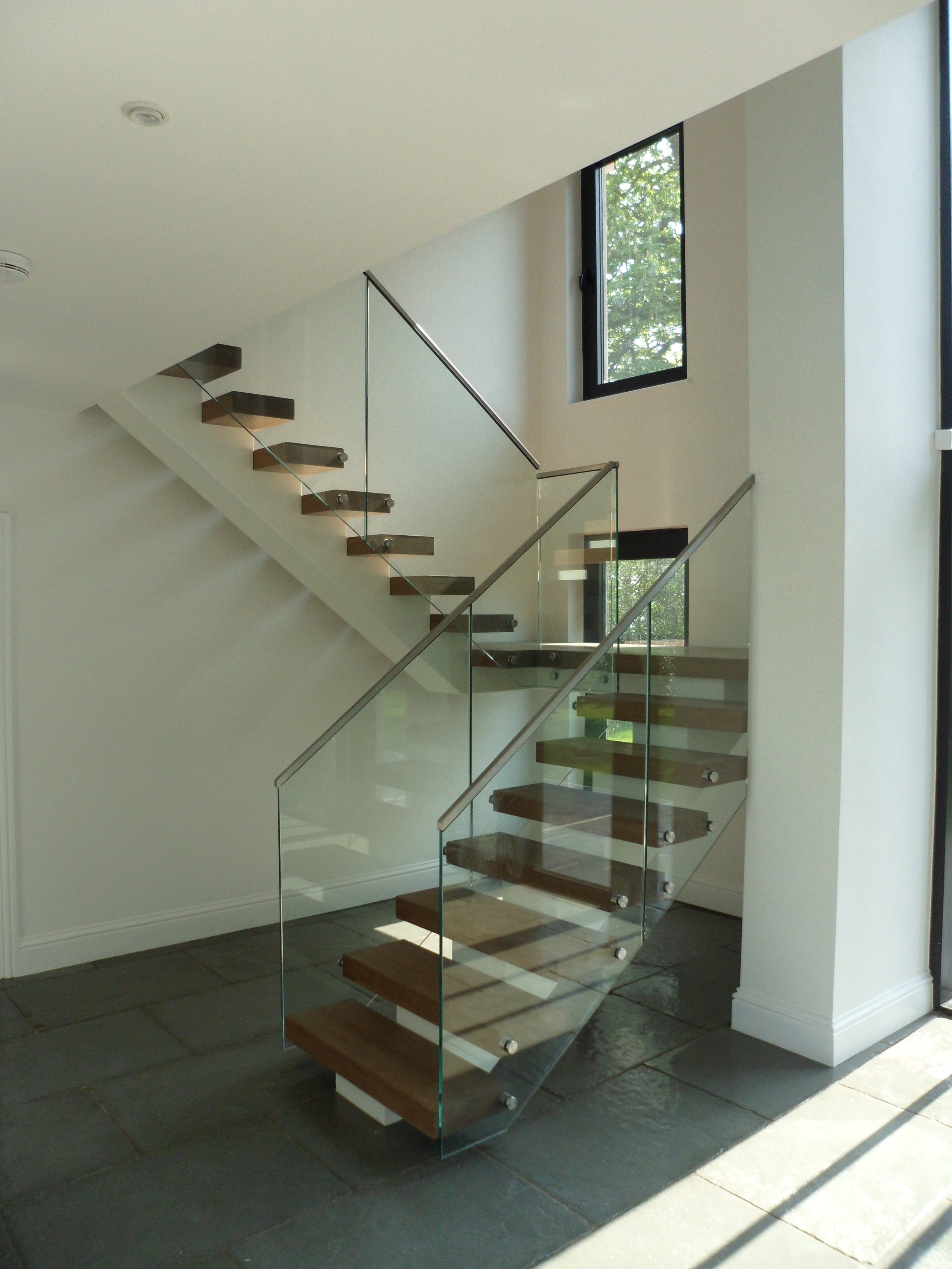
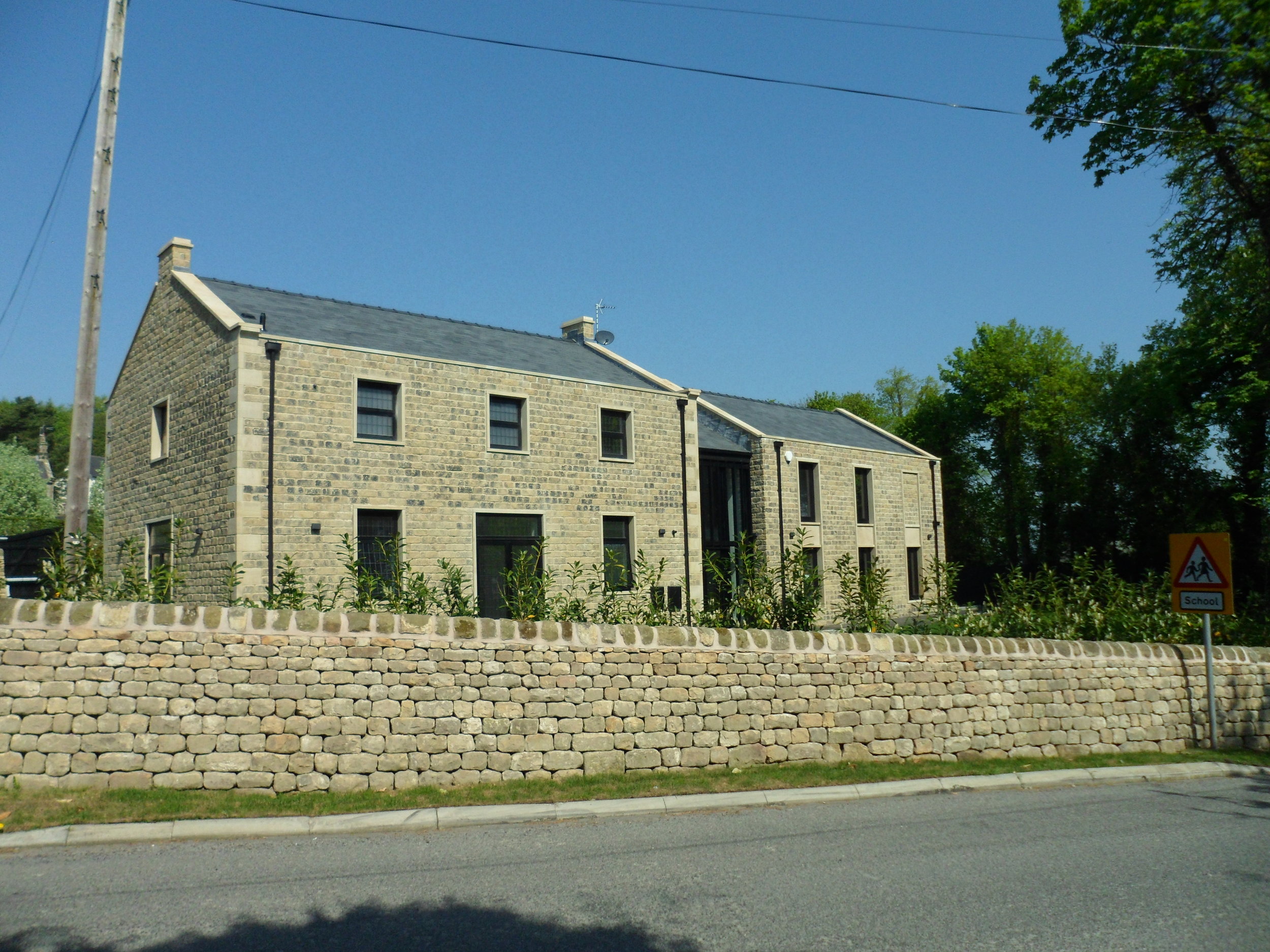

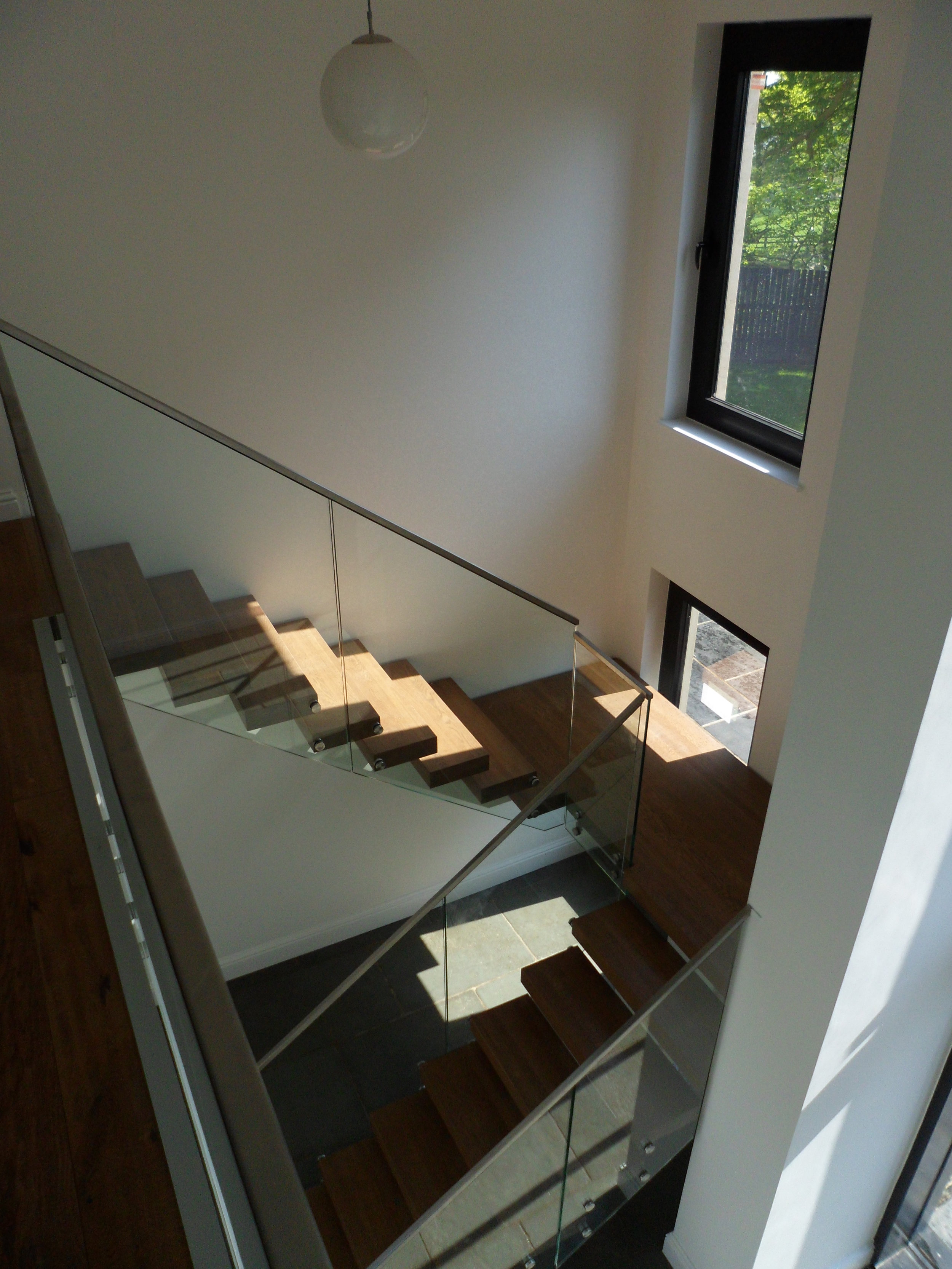
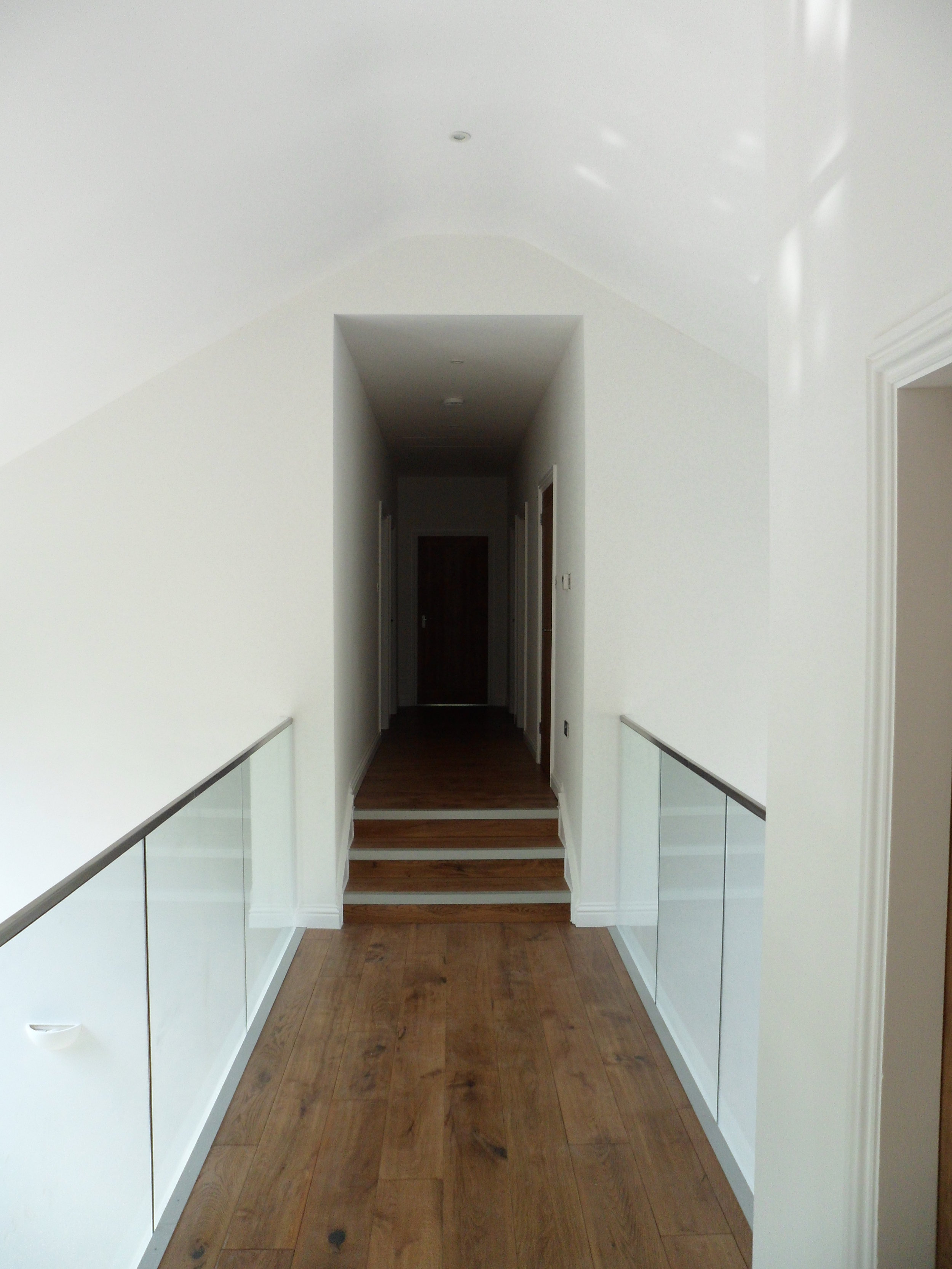
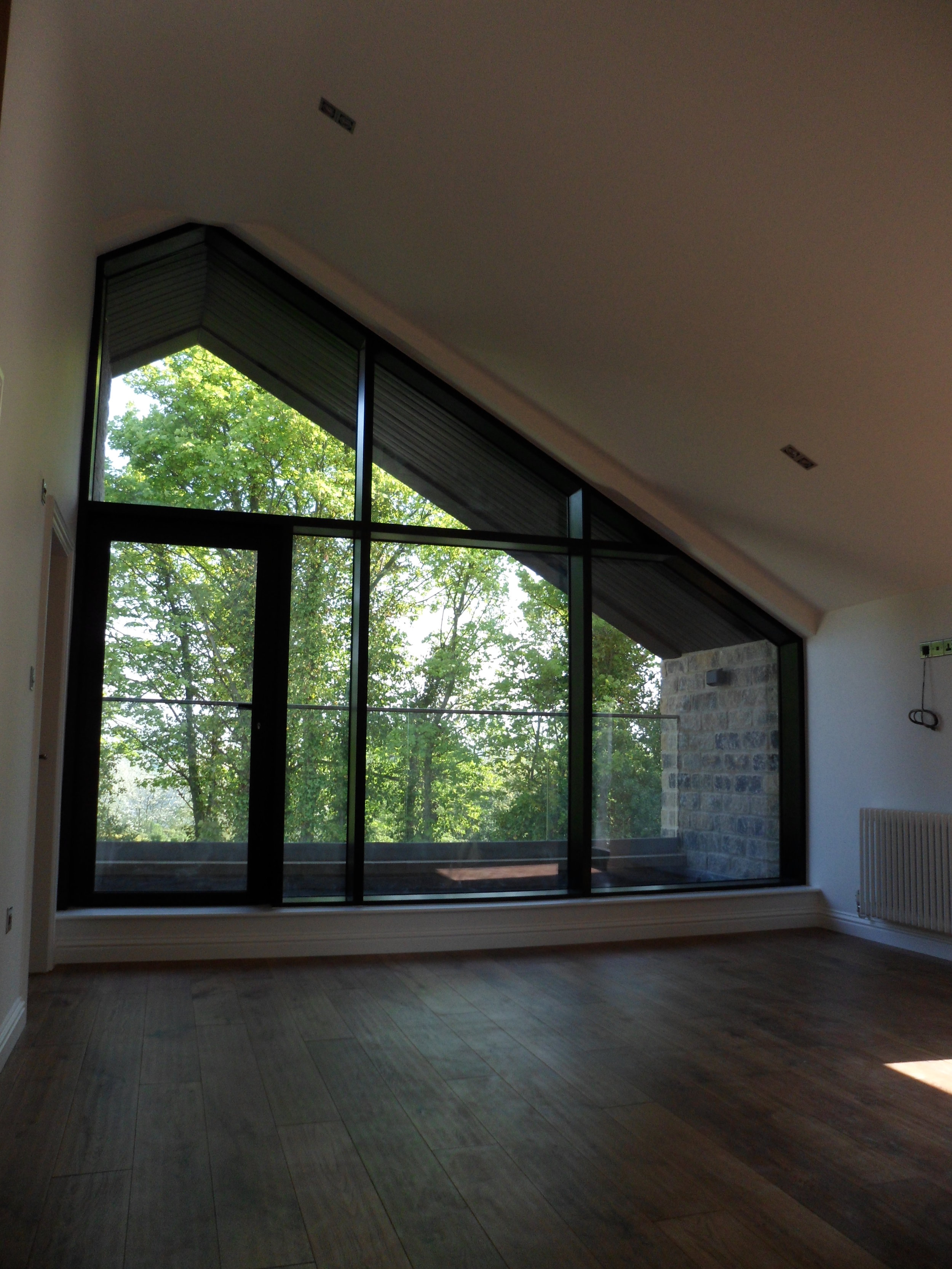

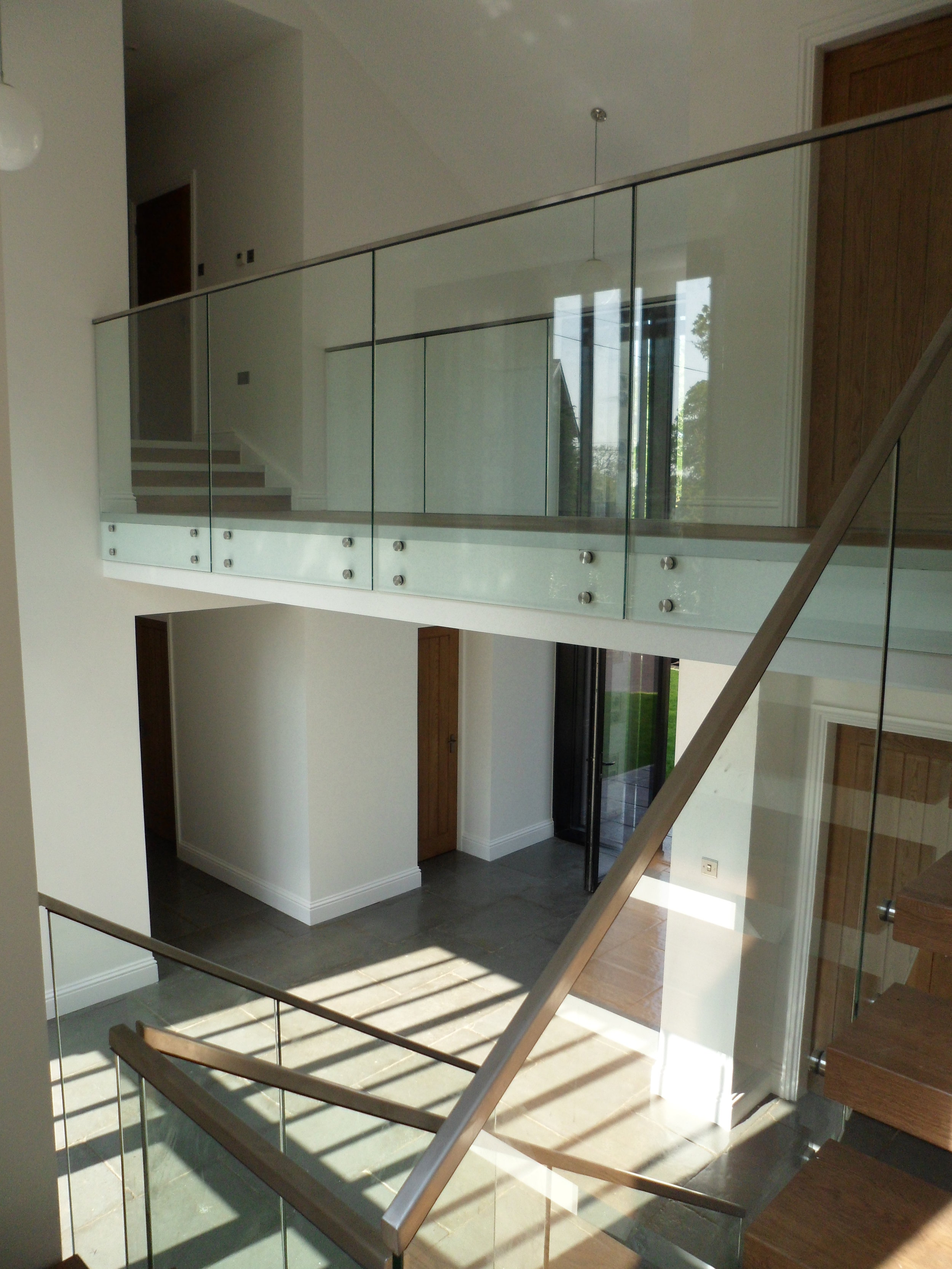
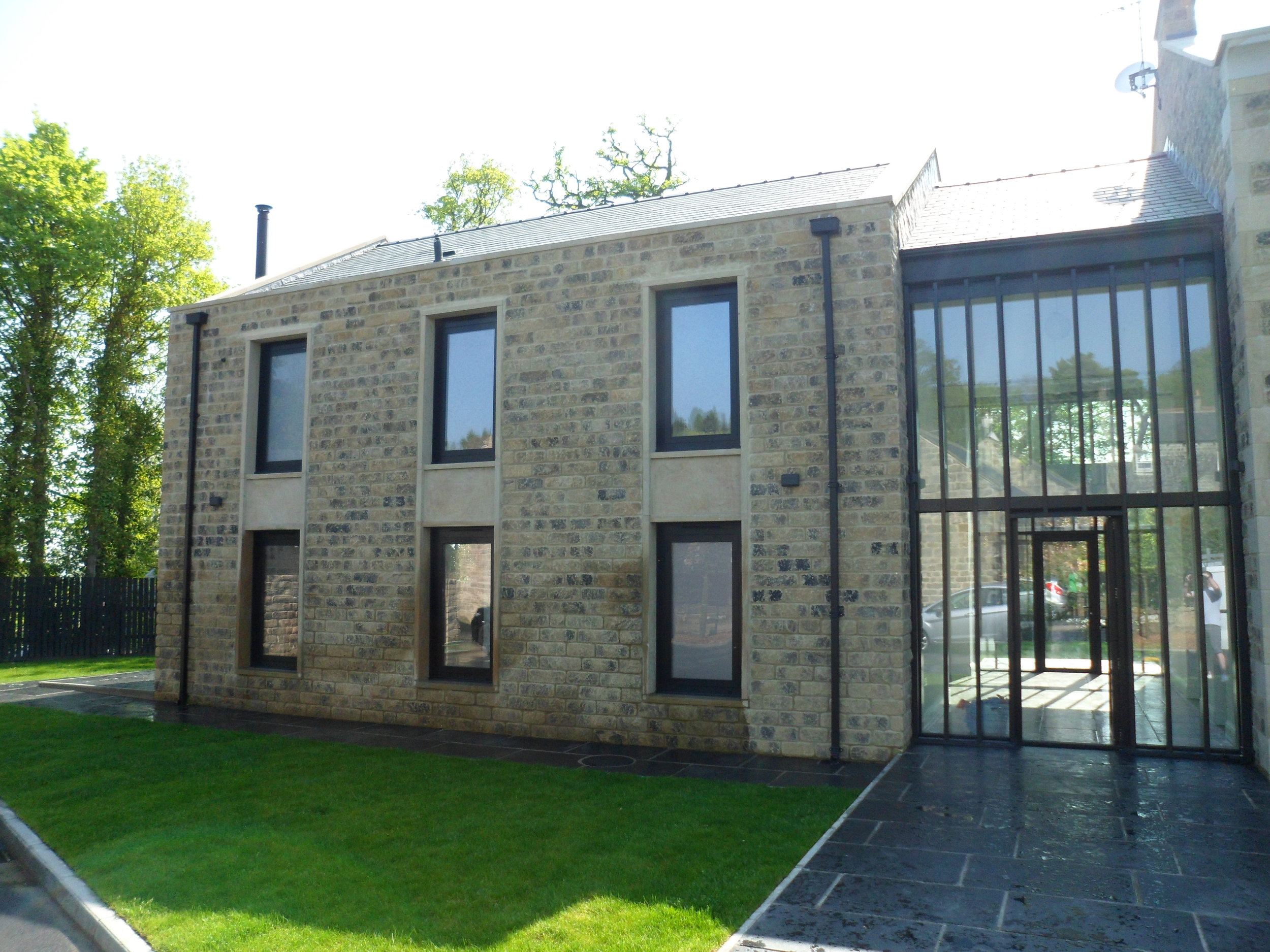

Replacement Dwelling Harrogate - Completed
Started in September 2016 this 3 bedroom replacement dwelling was completed in December 2017. The combination of traditional stone for the buildings plinth combined with the zinc cladding wrapping over the top and large modern windows creates a fantastic looking dwelling in a great location.
Large open plan rooms combined with double height spaces and feature windows create a great internal environment for the client whether they are entertaining guests or just want to put their feet up and enjoy the views. A feature staircase in the main entrance creates a great focal point. The kitchen, bathroom and en-suites have been designed with a modern look and feature walls and light fittings add interesting features throughout. Another great project to be involved with and one which the client was very happy with the end product.
Beast from the East
Only Ed and Stuart brave the elements to defeat the Beast from the East and make it in to work today. All those less hardy types couldn't cope with the single figure cm of snow. At least Skipton Road is looking the quietest it has in ages.
Replacement Dwelling Harrogate
Stuart was on site yesterday to visit the works at our replacement dwelling project on the outskirts of harrogate. The windows are now in and the exterior of the project is looking a lot more complete, with external lighting, downpipes and window flashings complete. Inside the boarding out for the plaster is well under way and the internal spaces are becoming a lot more visible. We cant wait for the next step and finishing items to start going in.
New Dwelling Harrogate
Now we’re out of the ground the stone masons are really cracking on! Masonry is up to first floor level in the traditional wing and window sill level in the modern wing of the building. We can now see the large window and door openings in the traditional wing which will maximise natural light and offer the residents great views of the surrounding countryside. The first elements of the stone detailing, the quoins, have been built in which look great. When walking around we can get a sense of the internal spaces which the client is very happy with. Next step is to get some steel installed and the timber first floor structure.
Lancashire Country House Hoppers
The first of the bespoke lead hoppers are on site having finished the process of sand casting. The hoppers have been designed in house and modelled by Francis to create a plaster mould from which to create a sand cast template. Below are the process photos from design to finished product.













